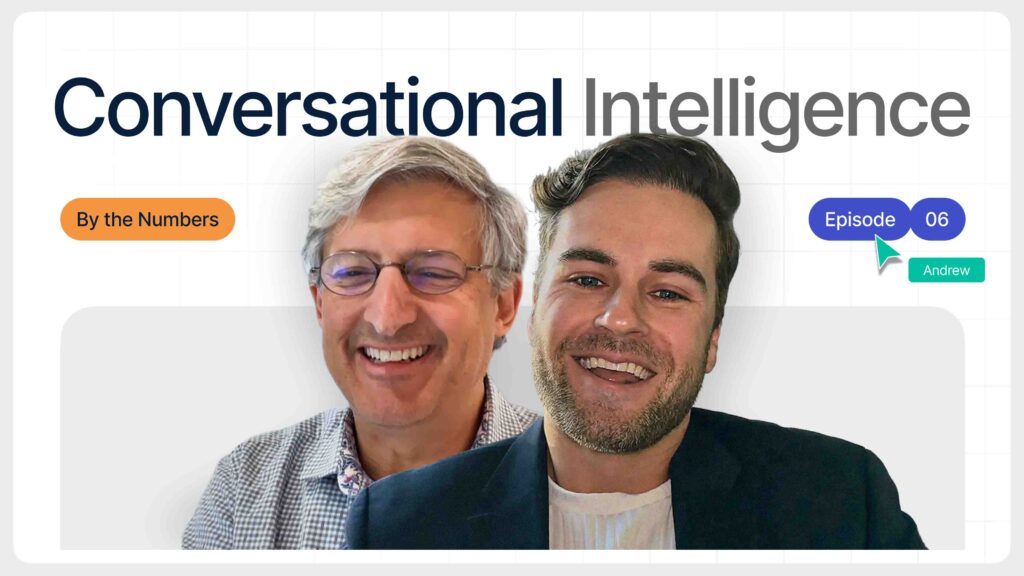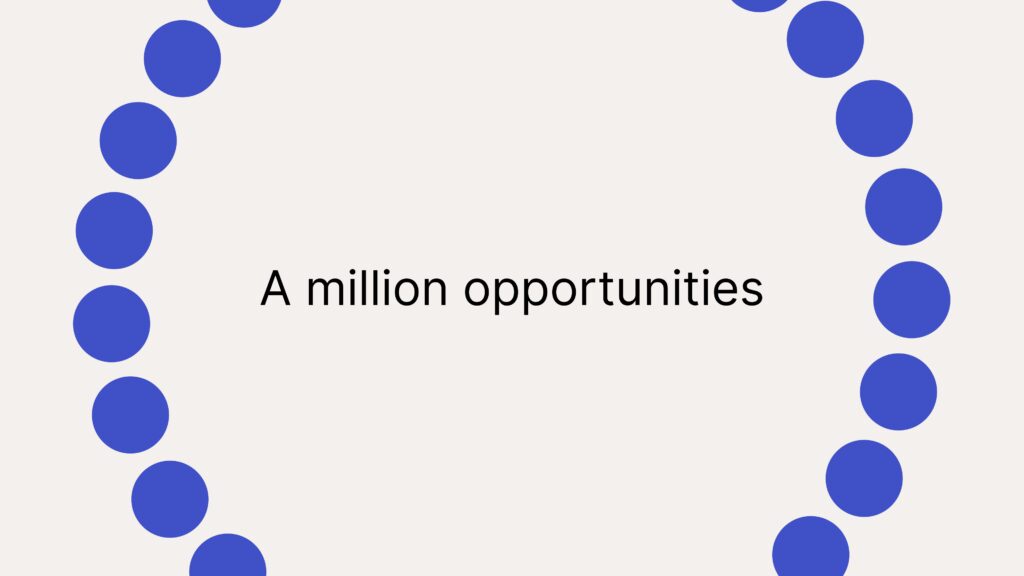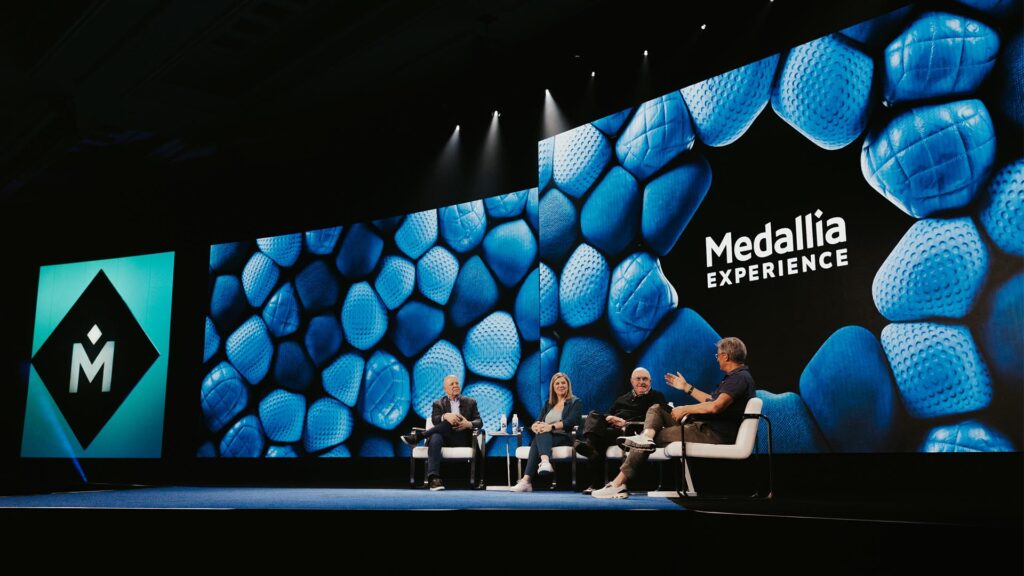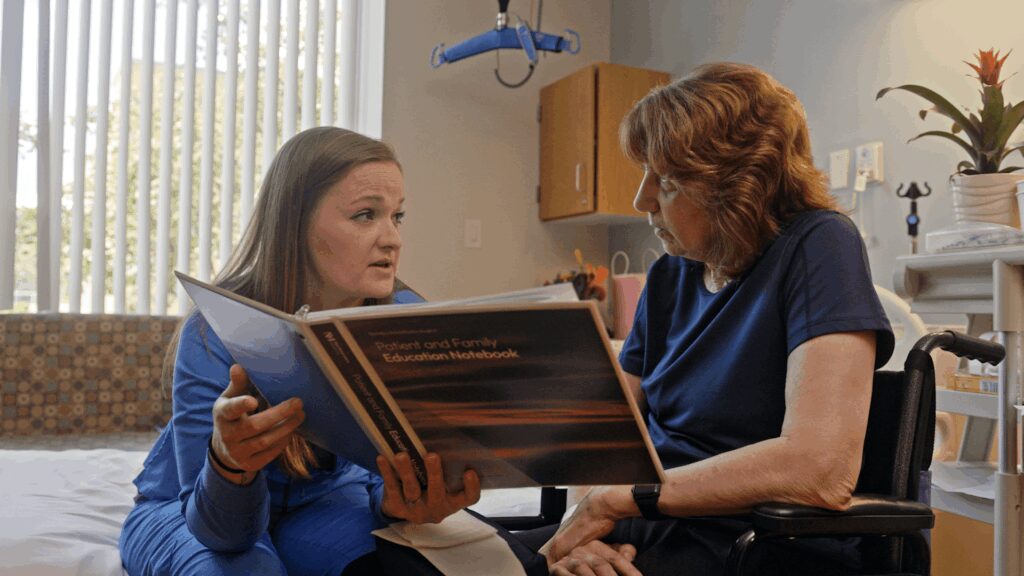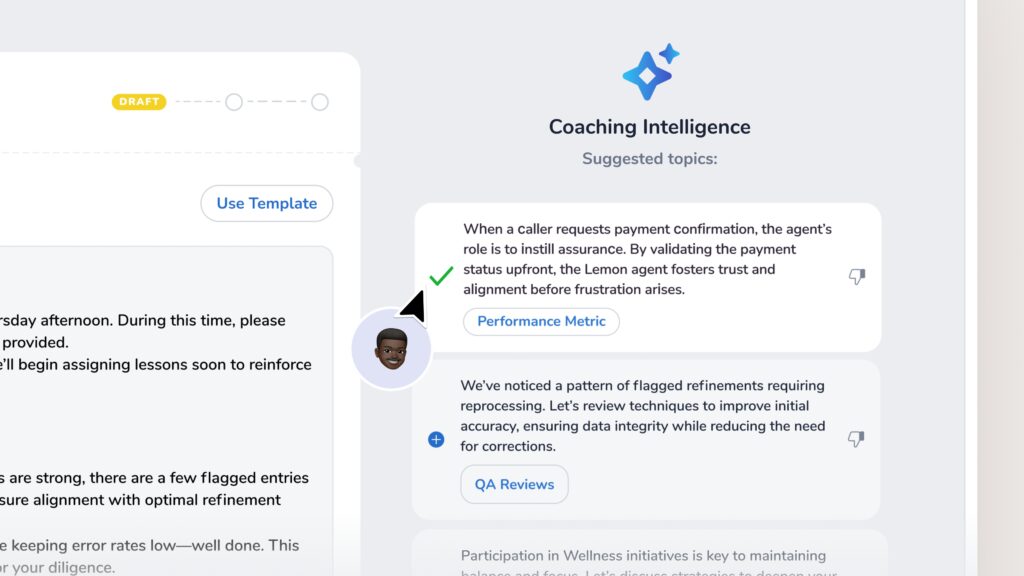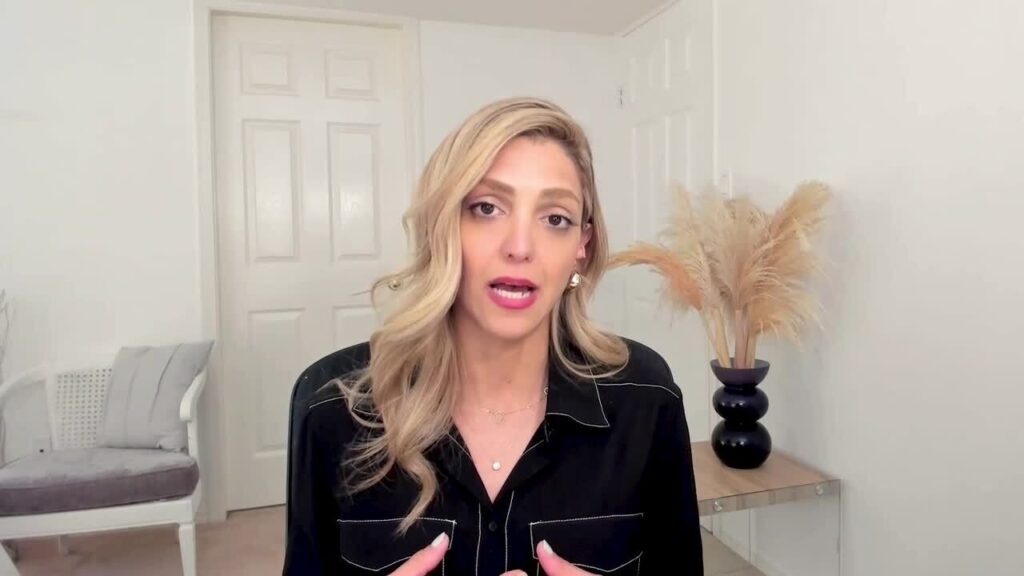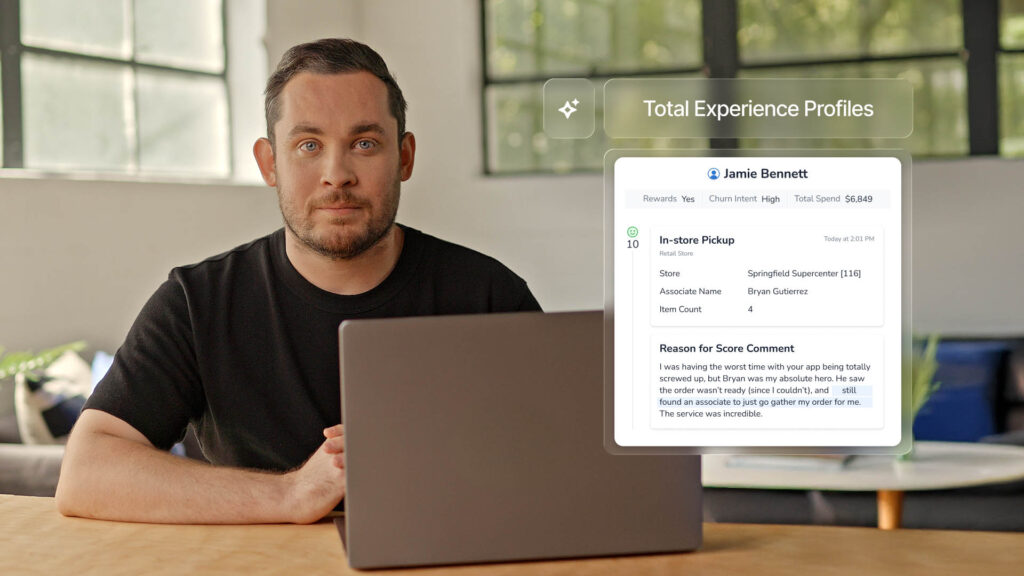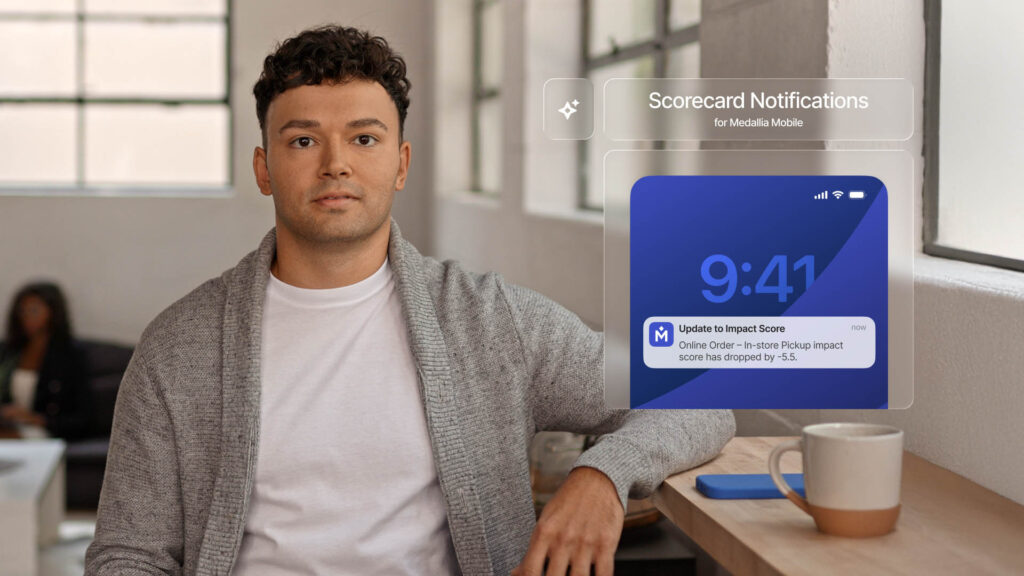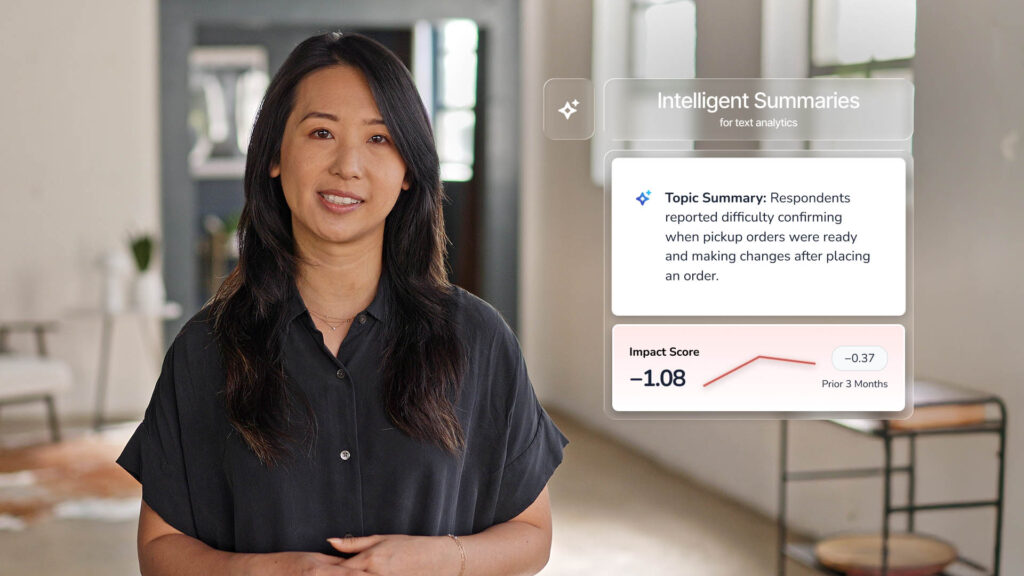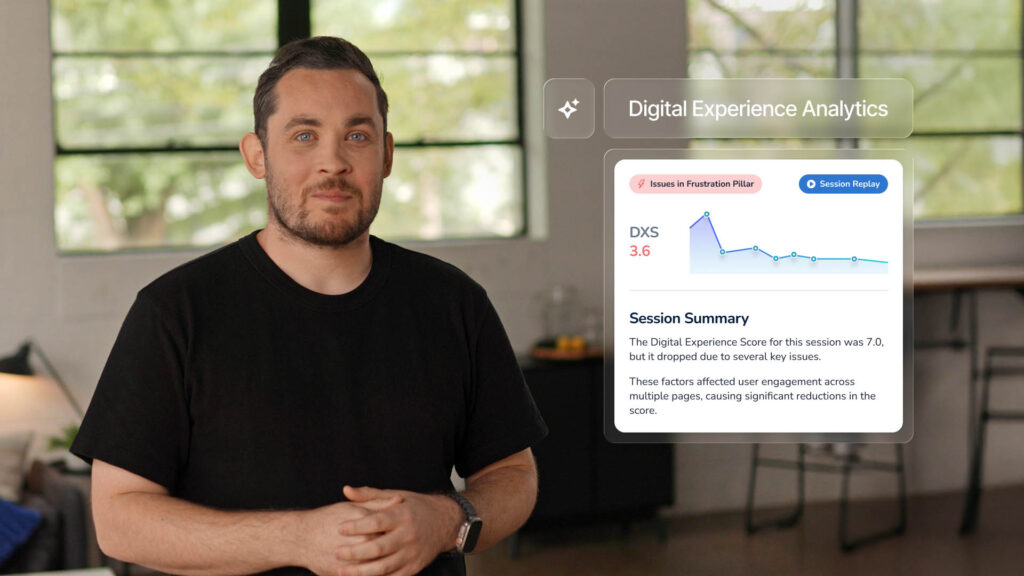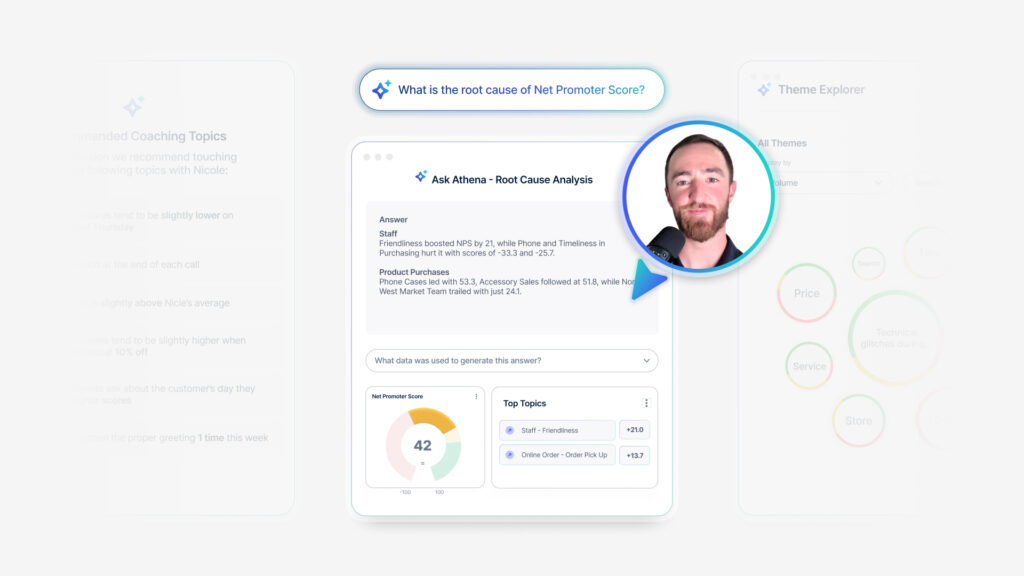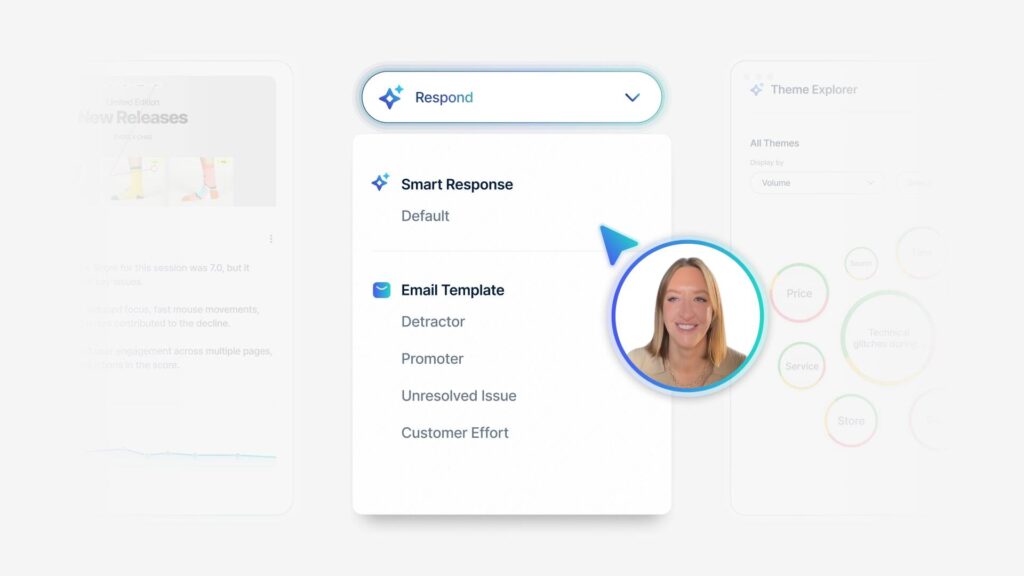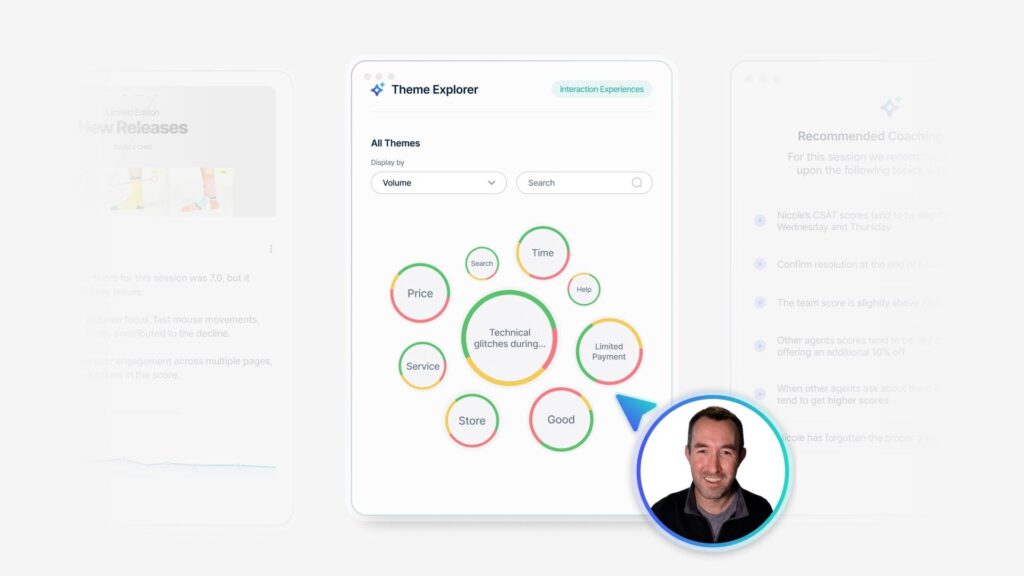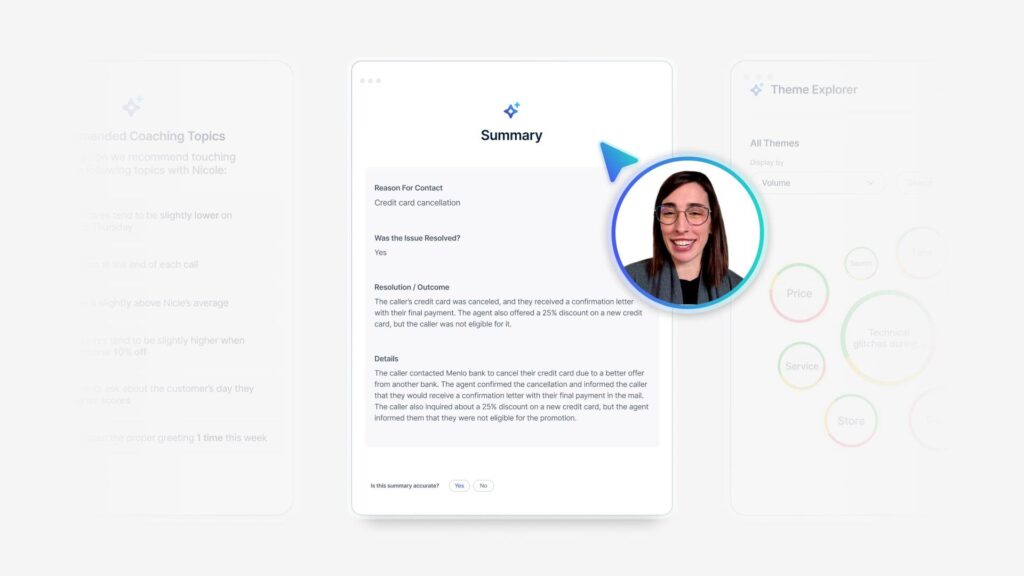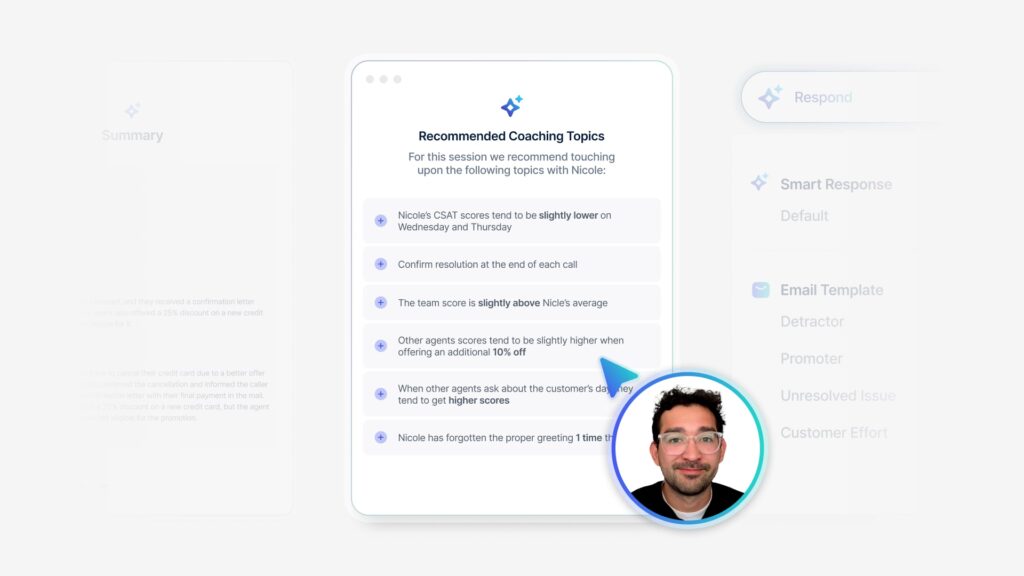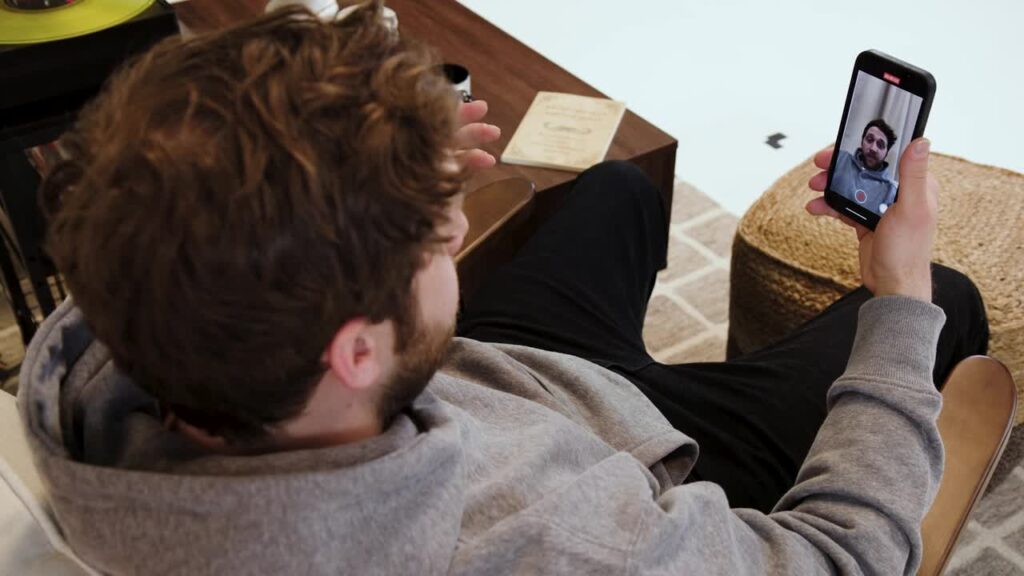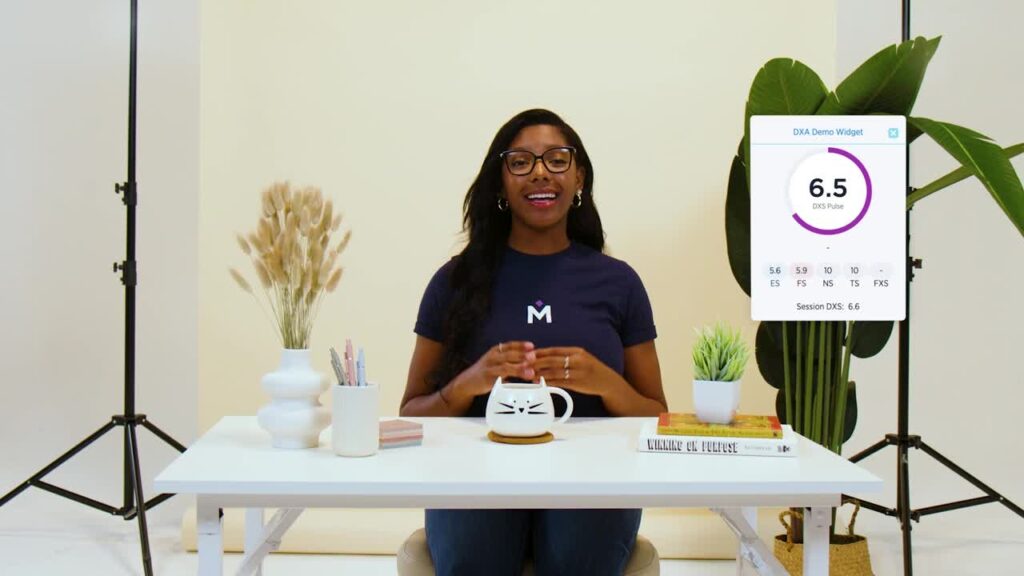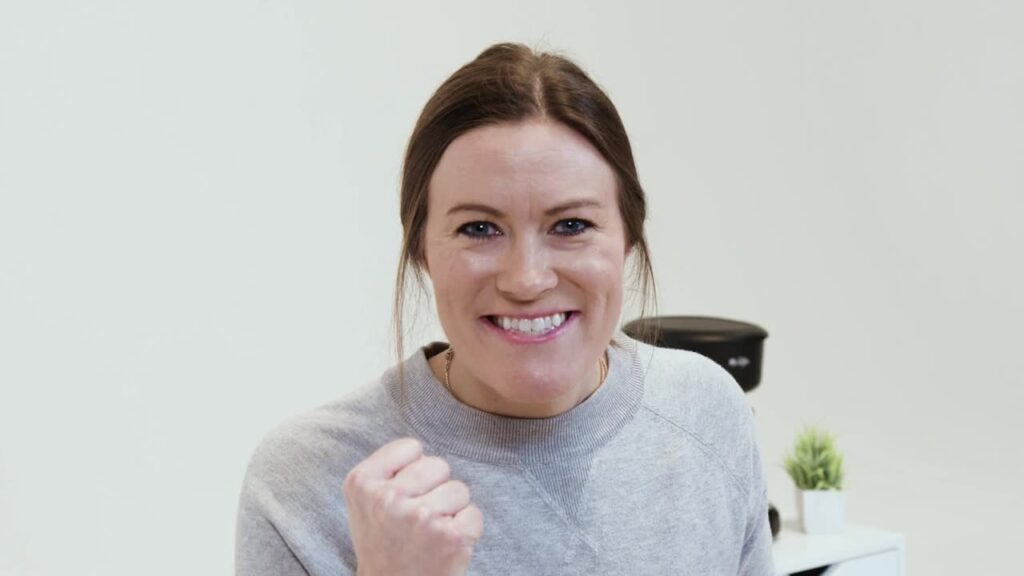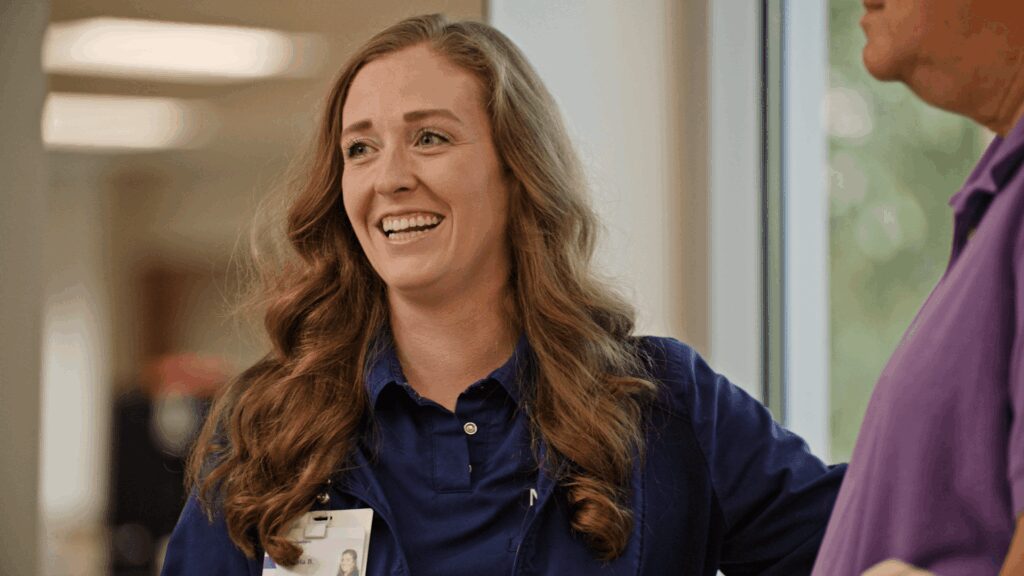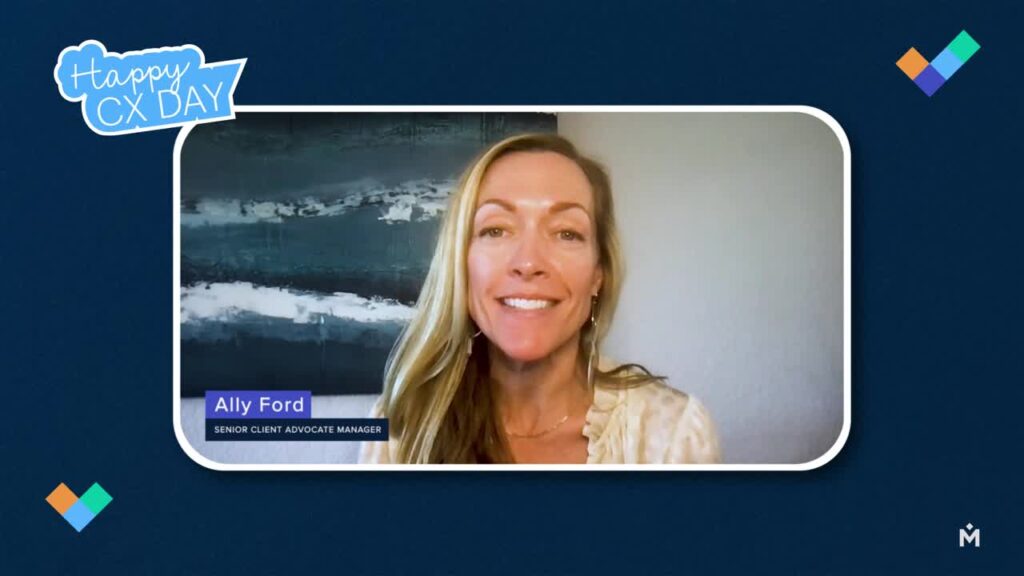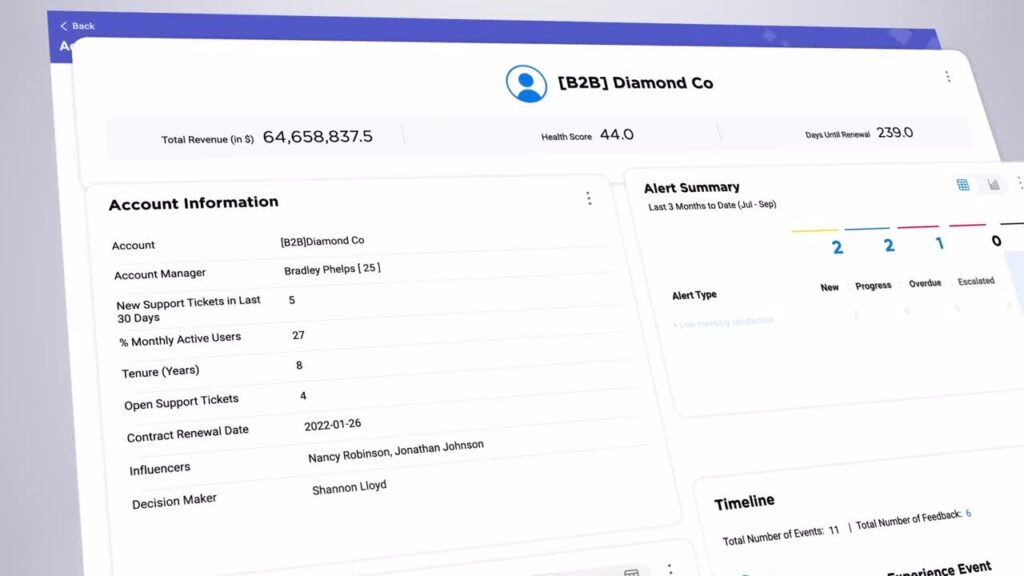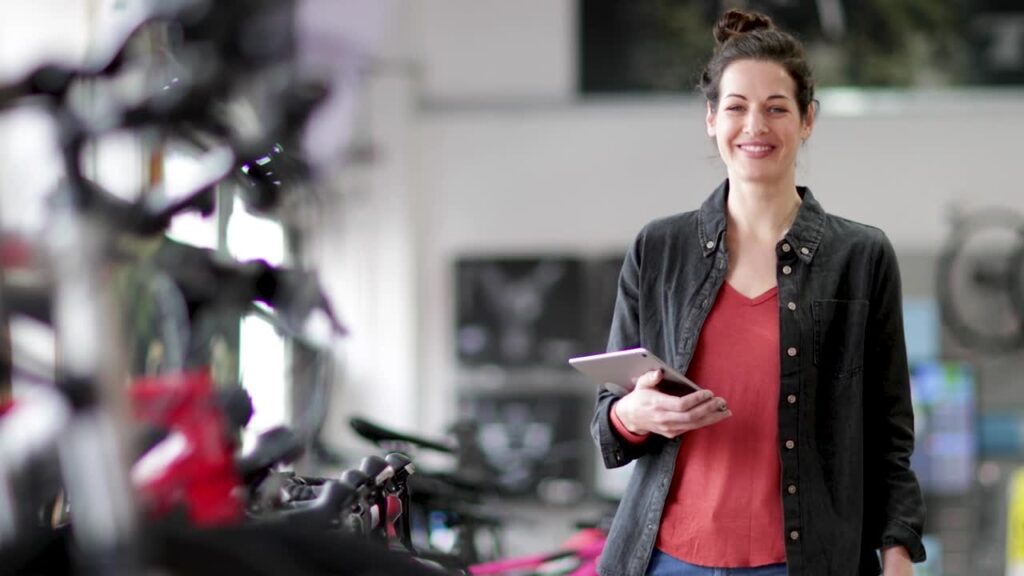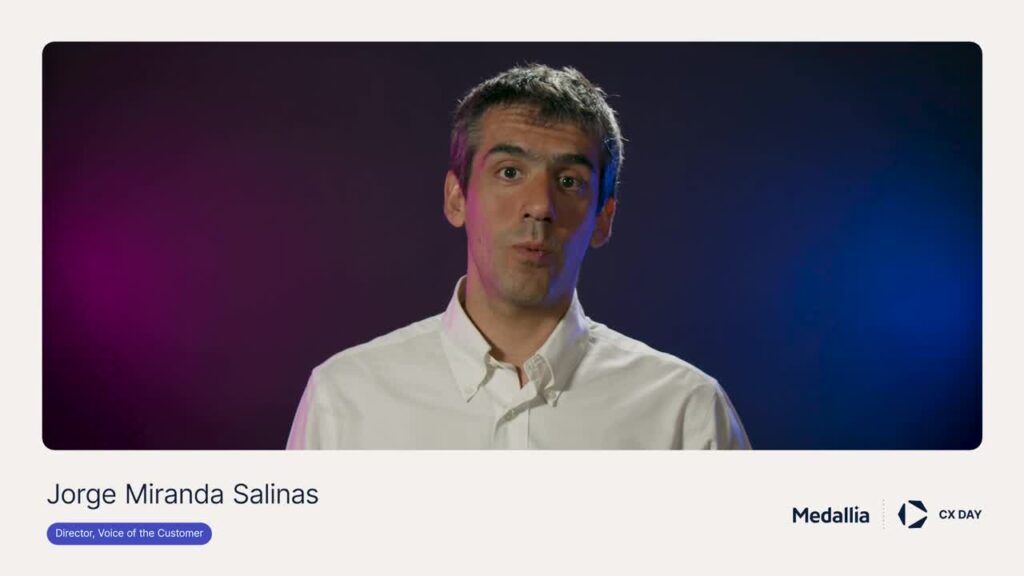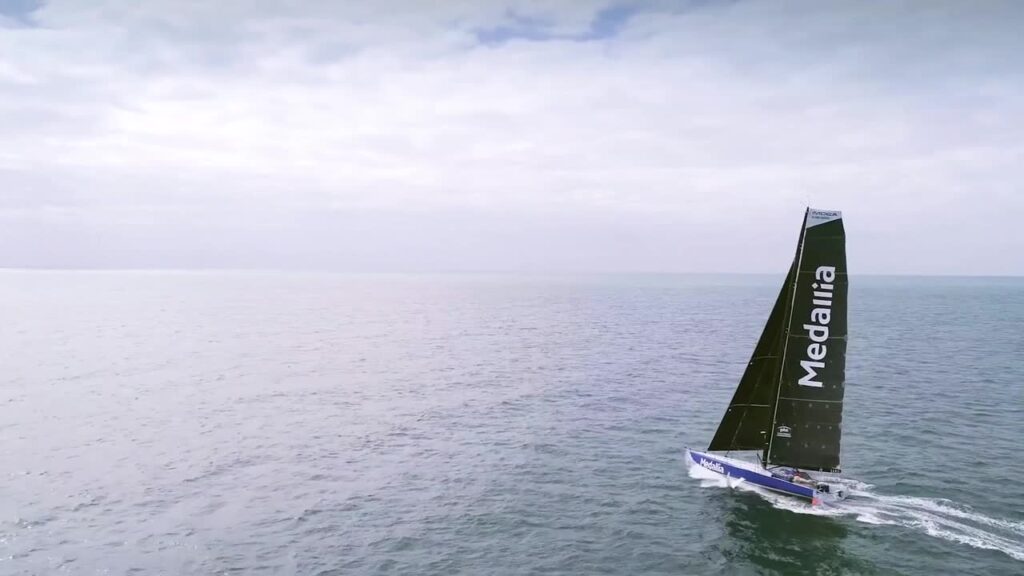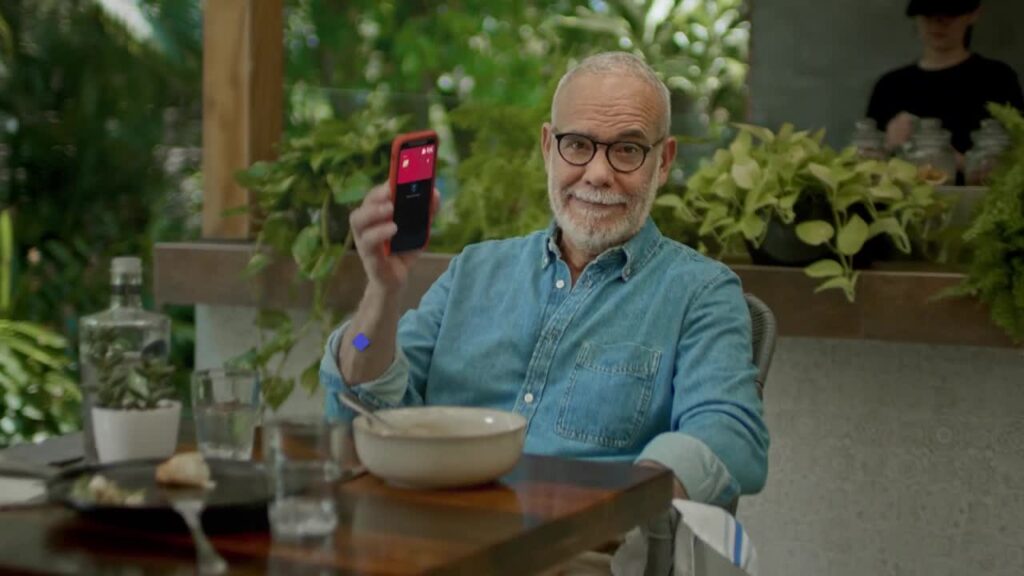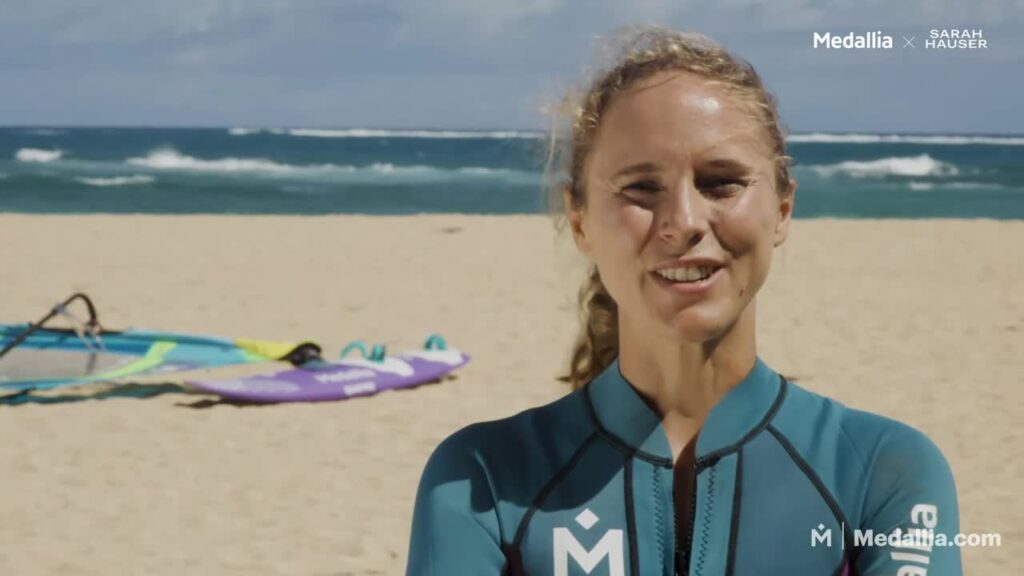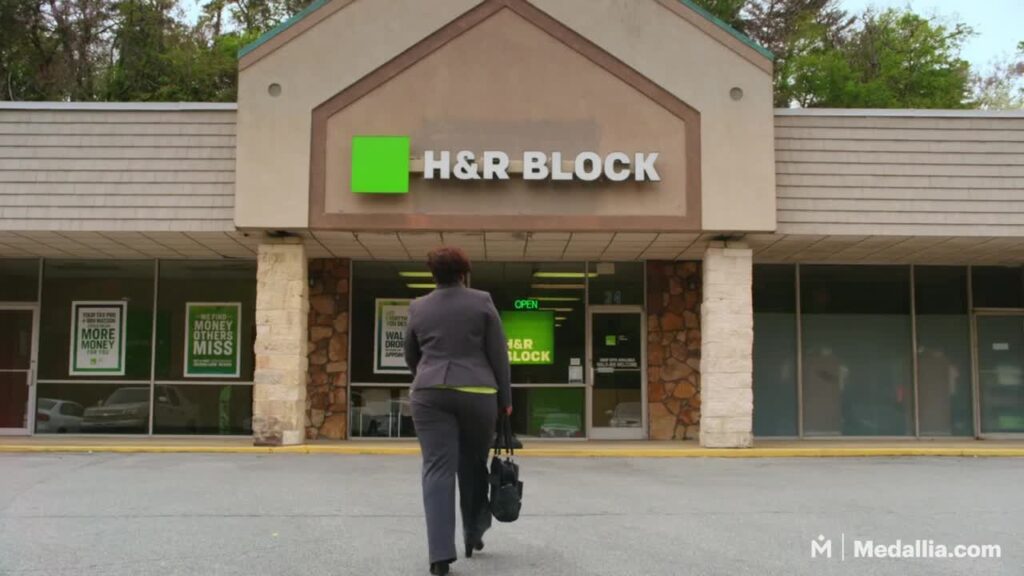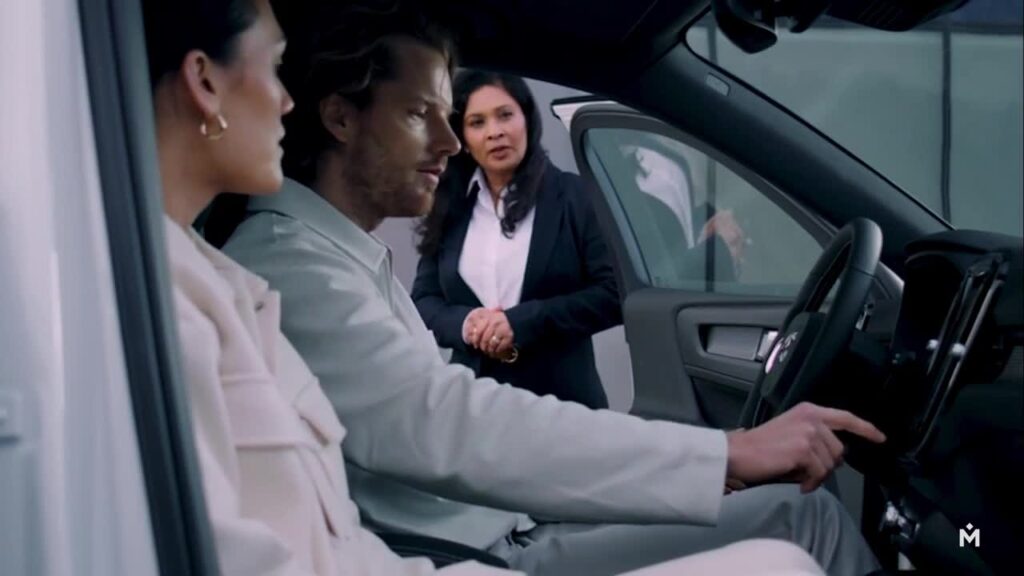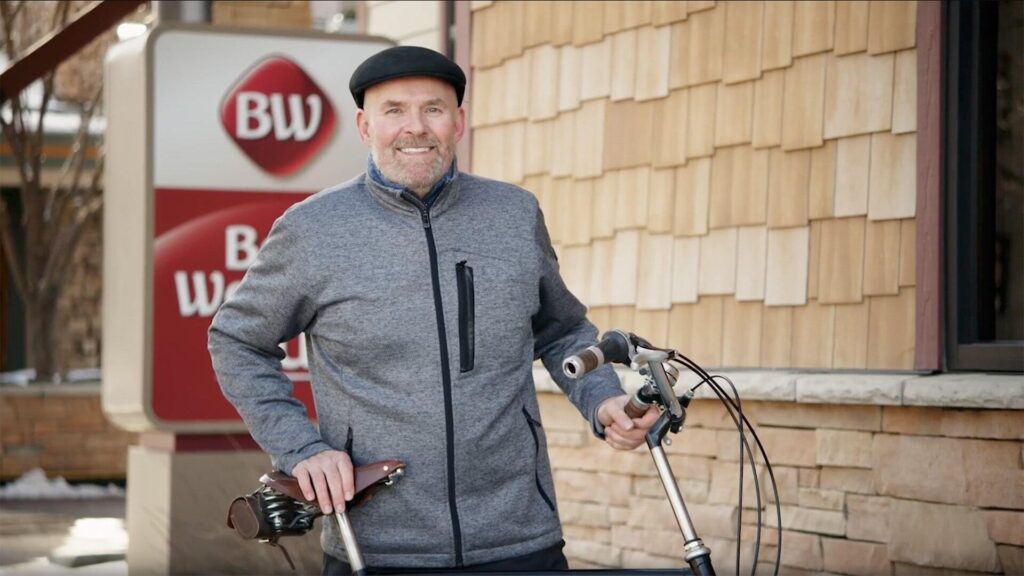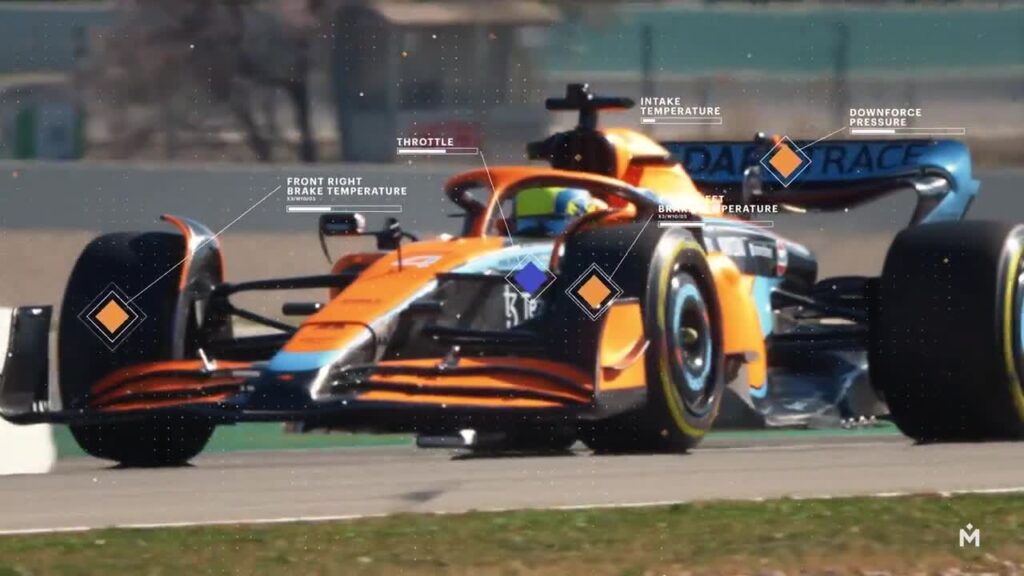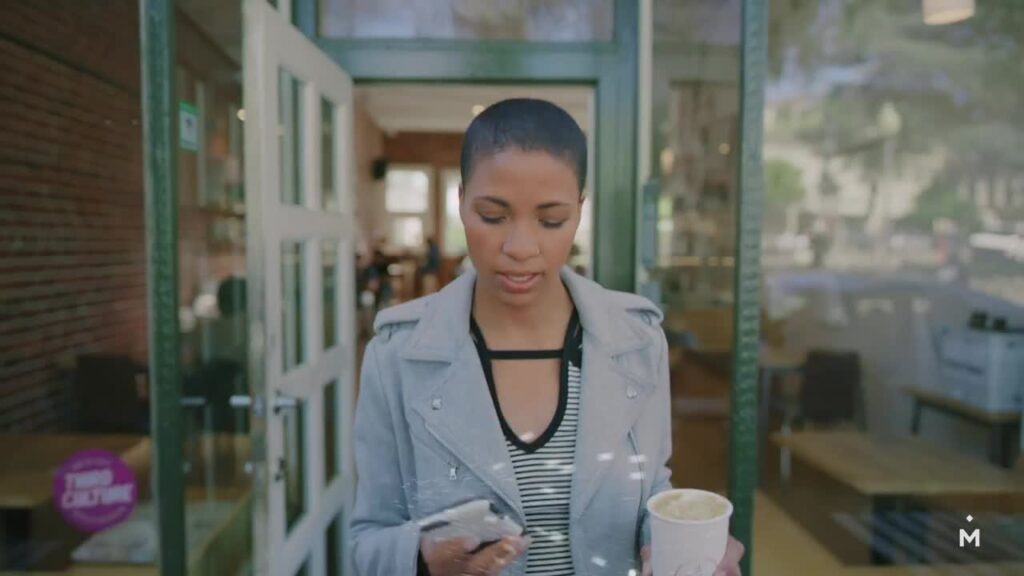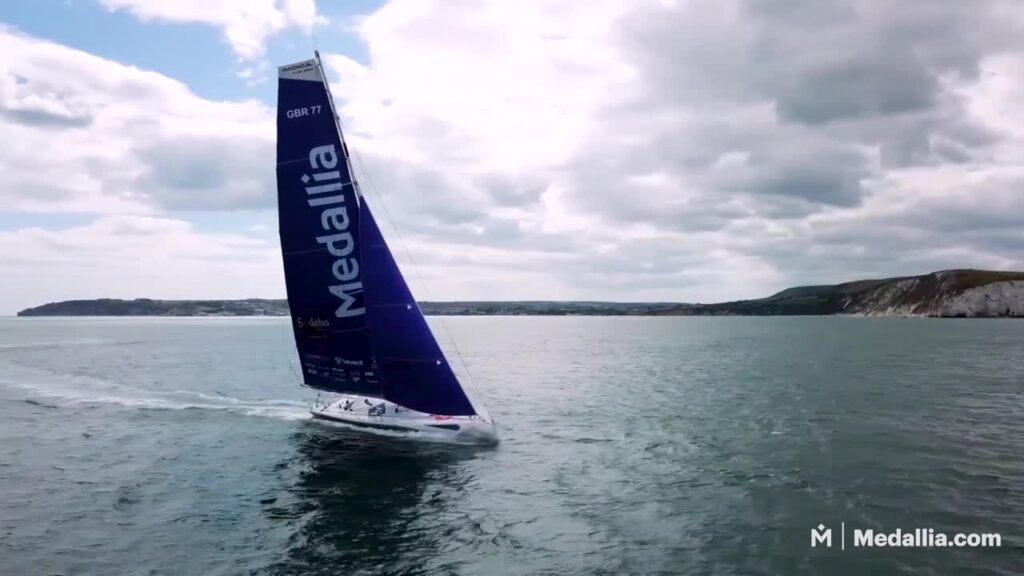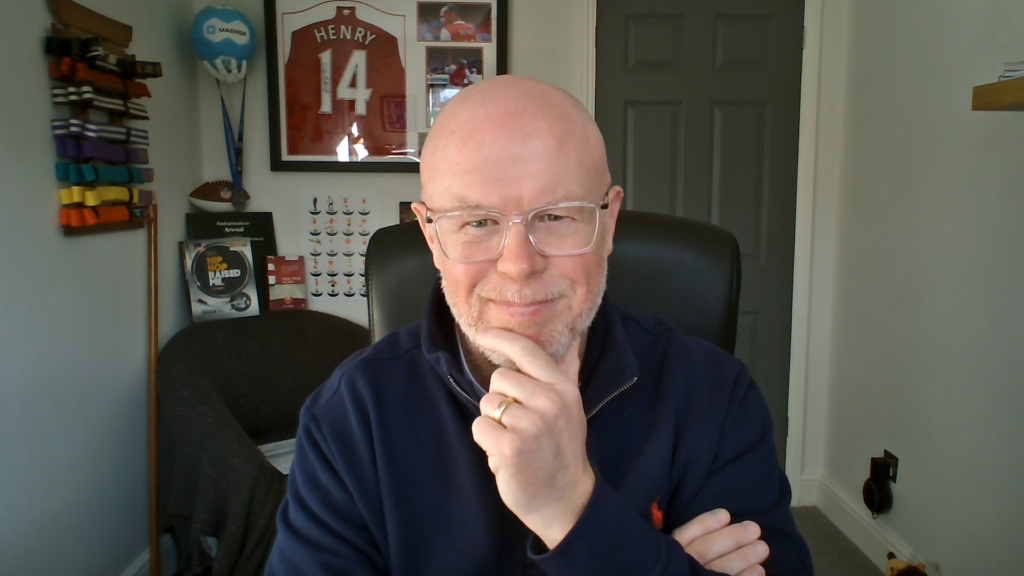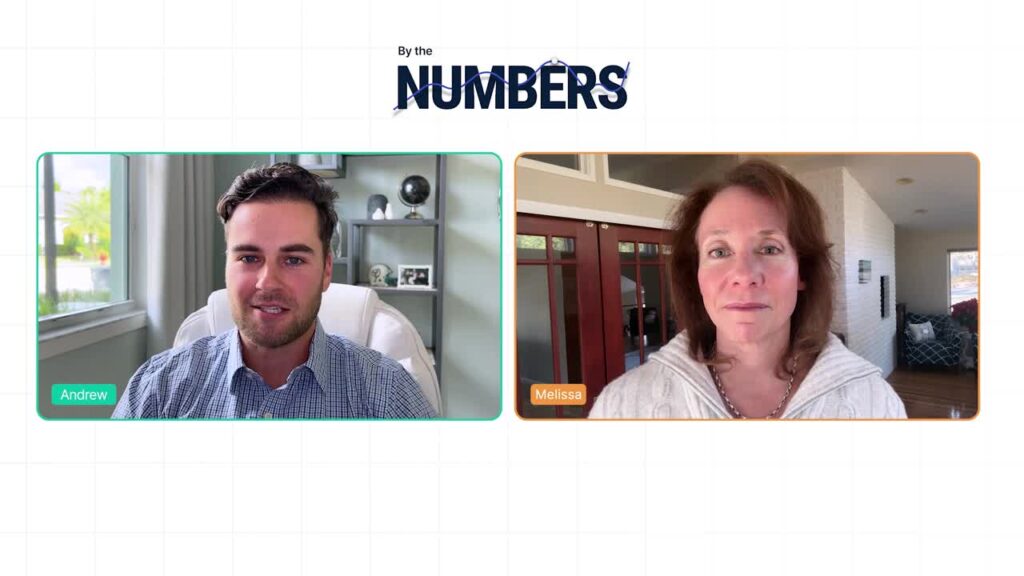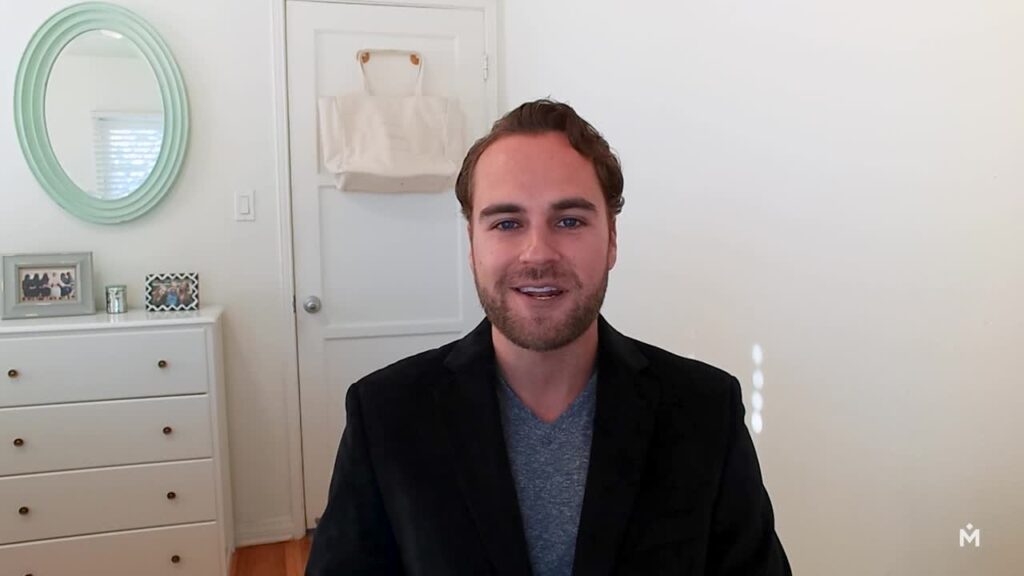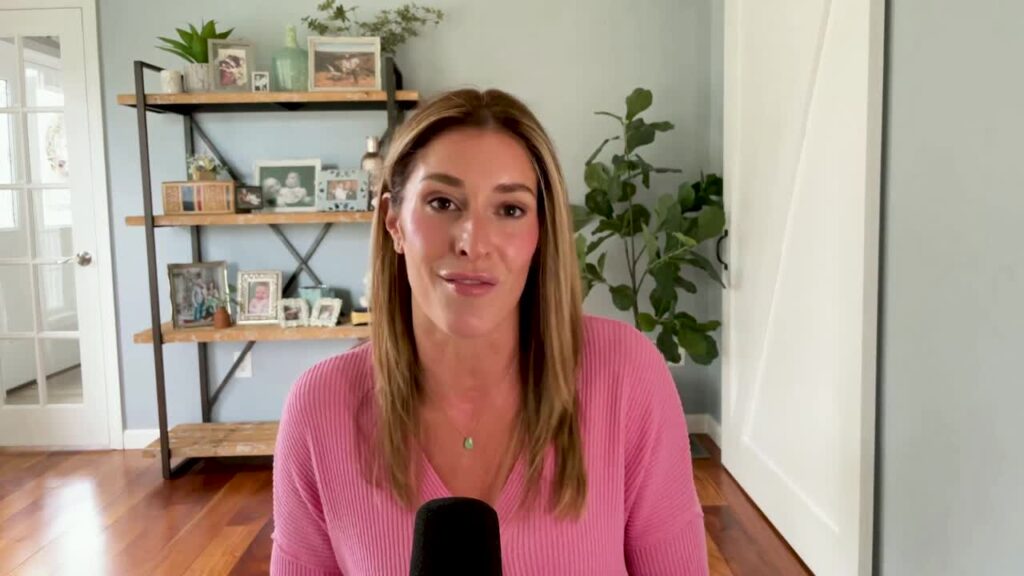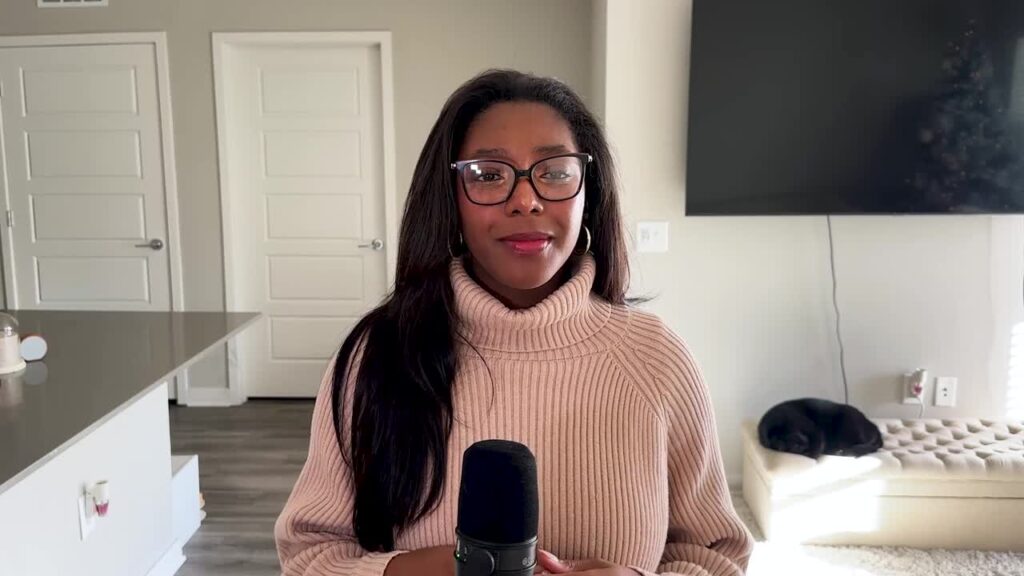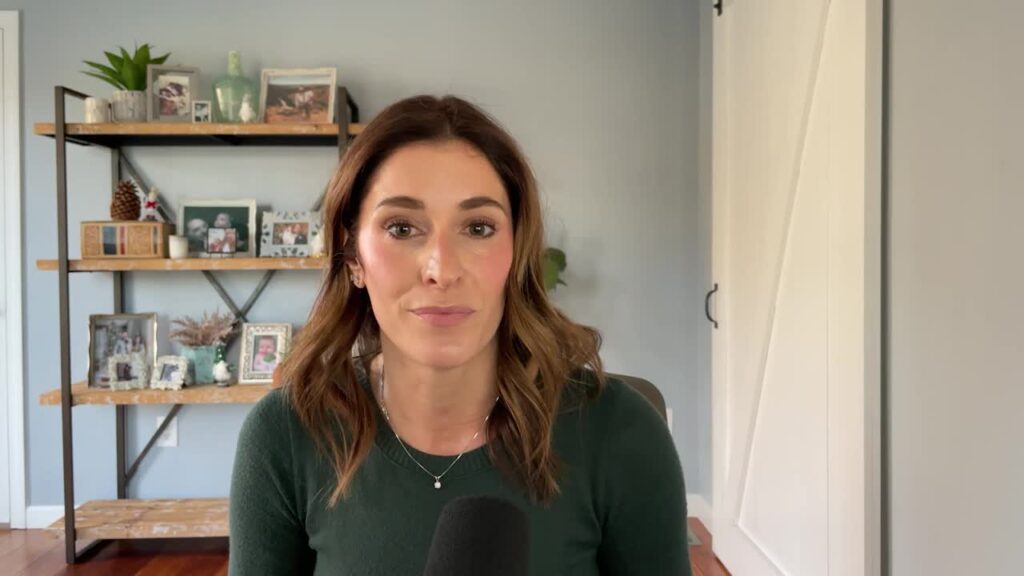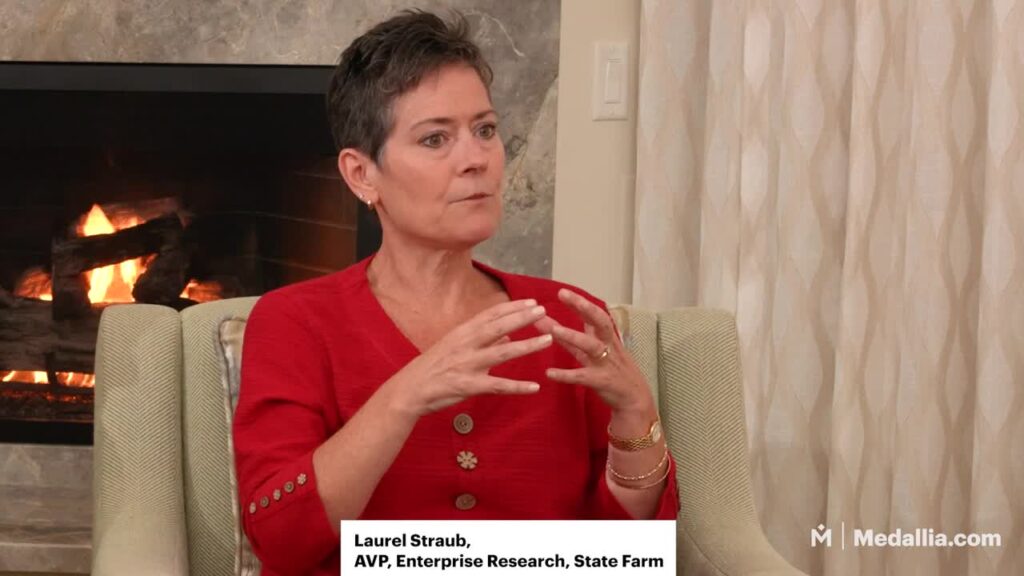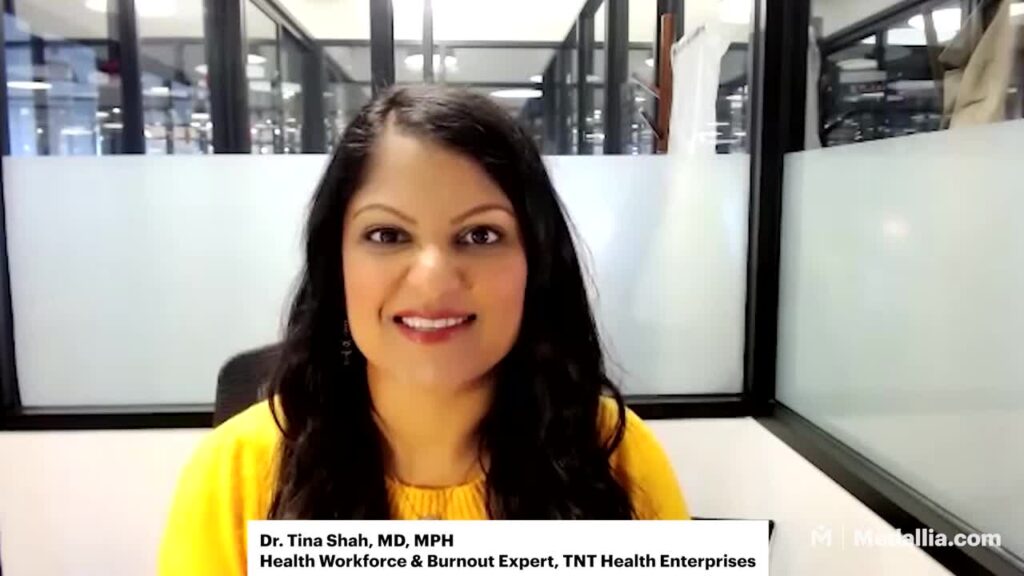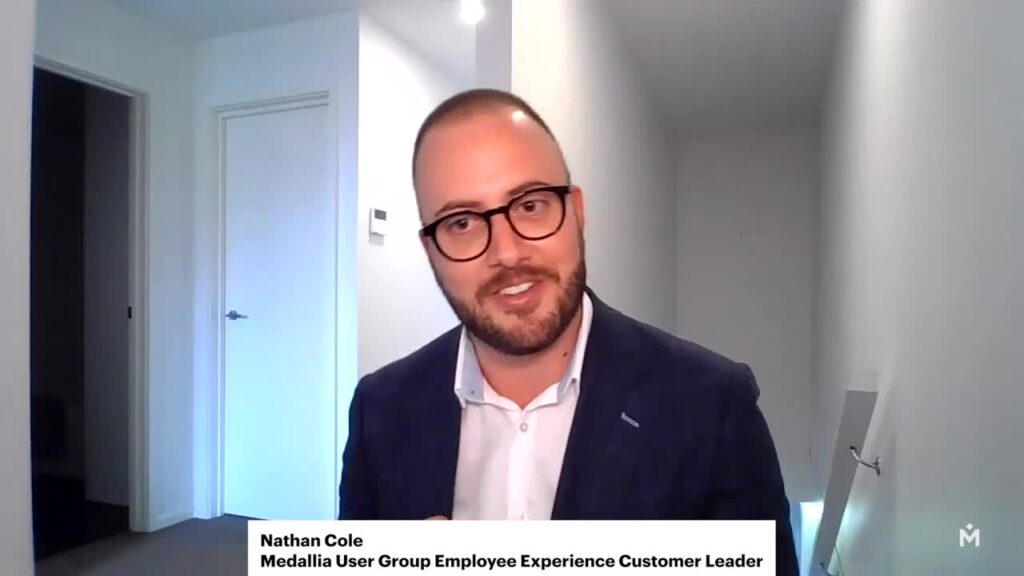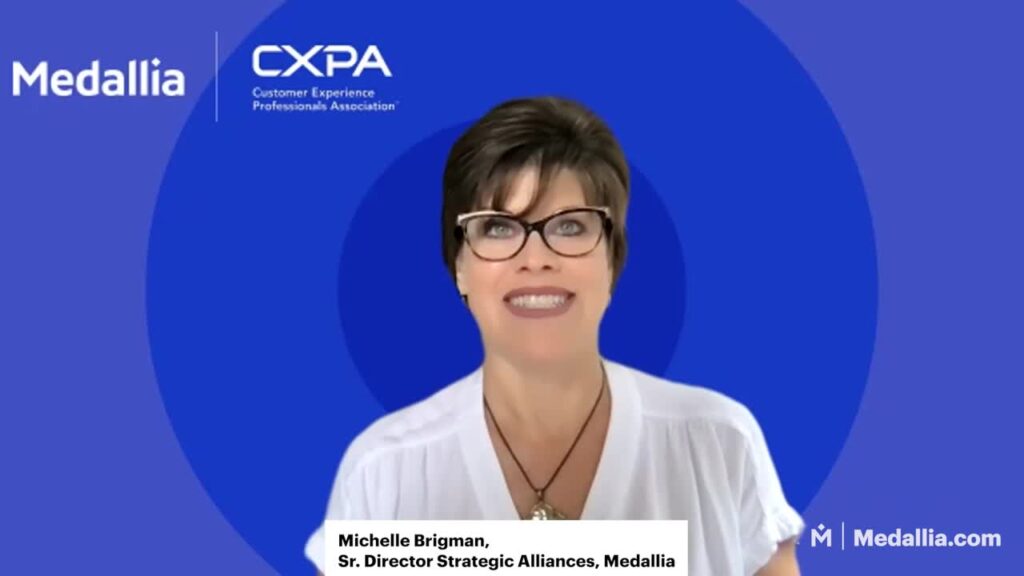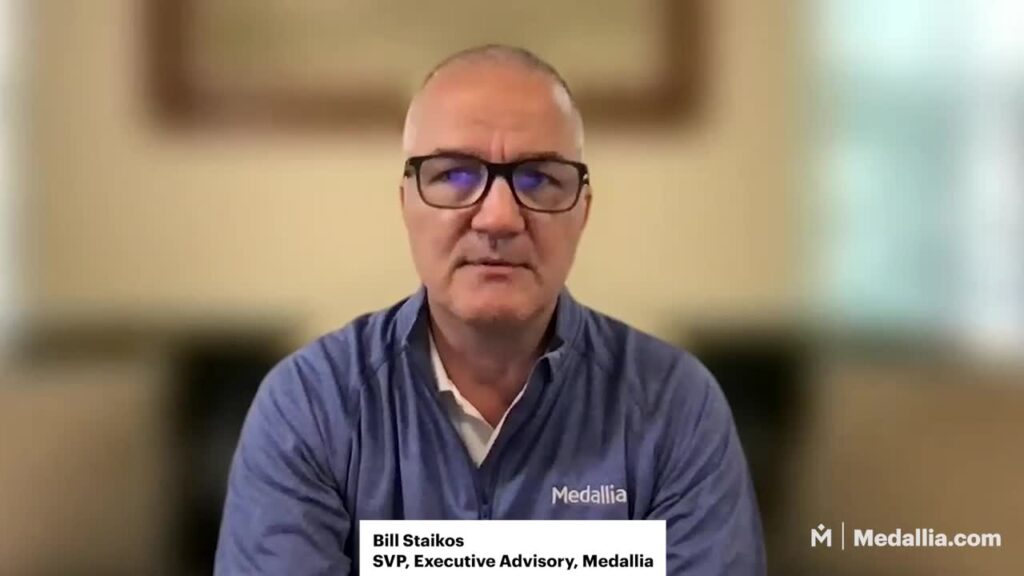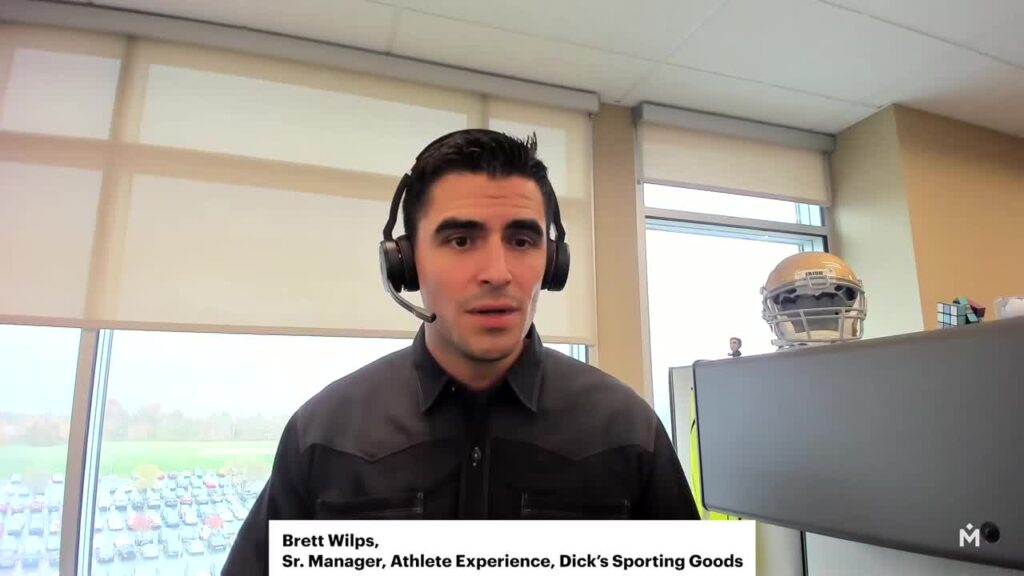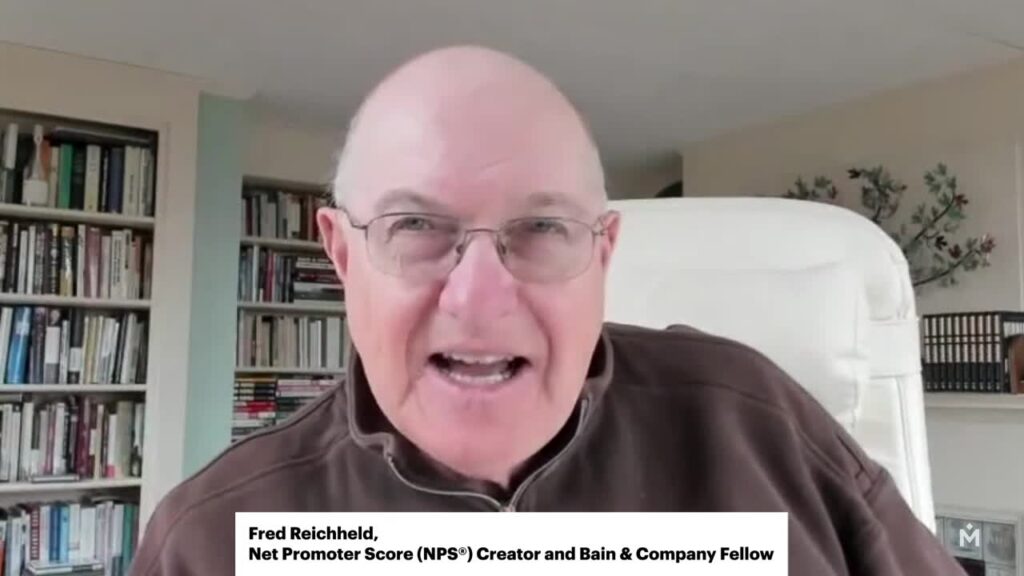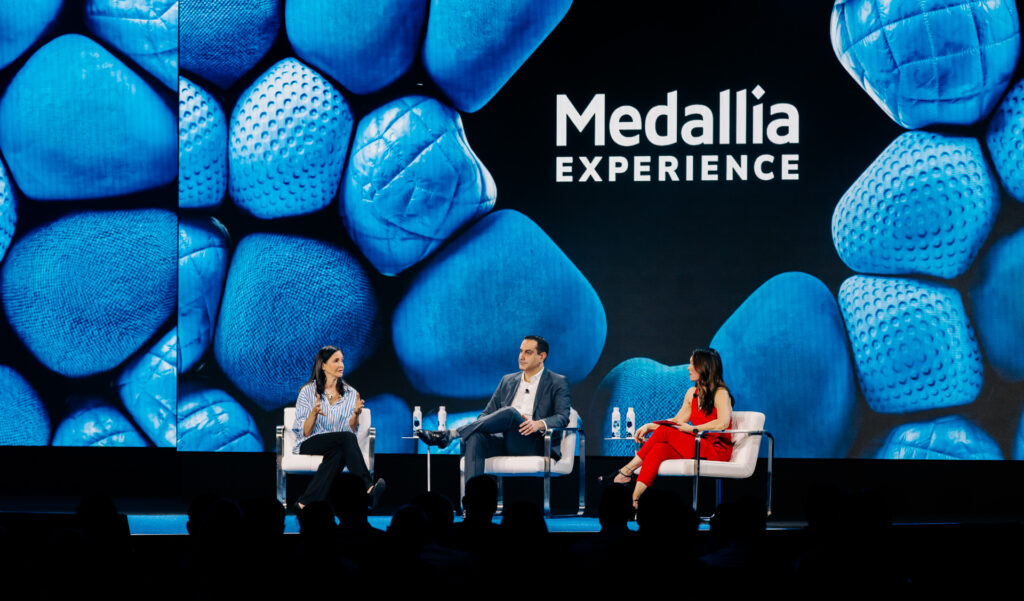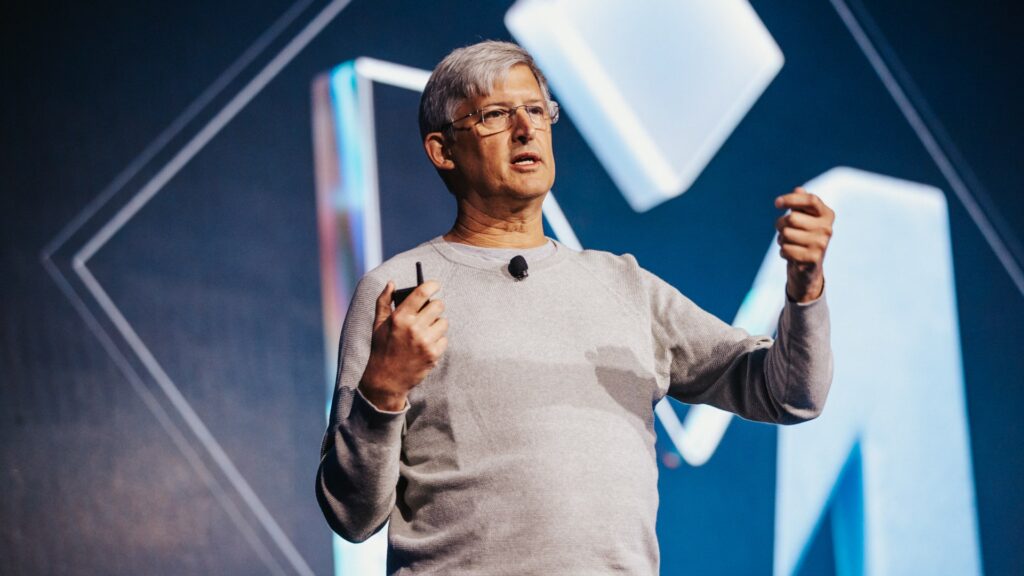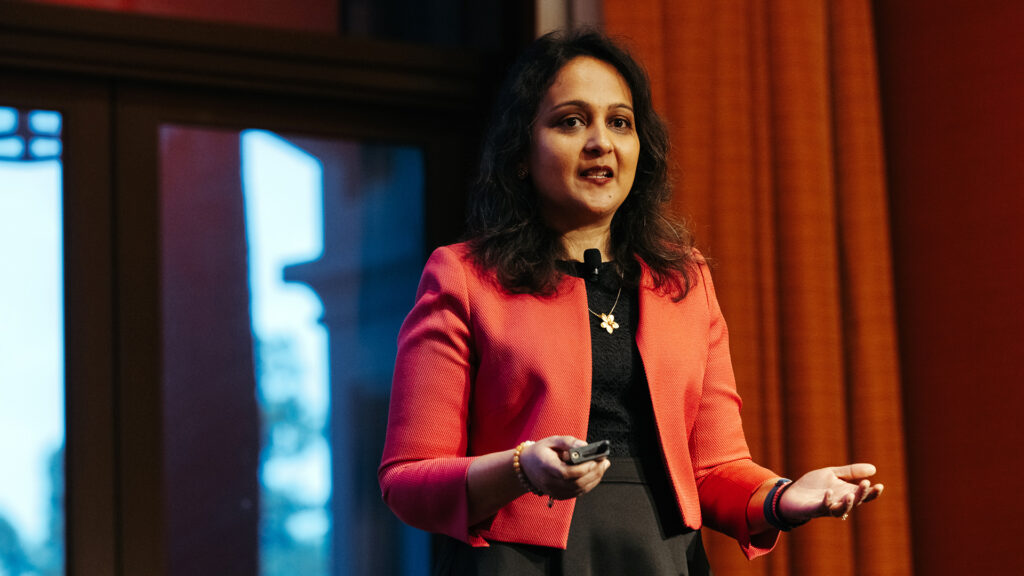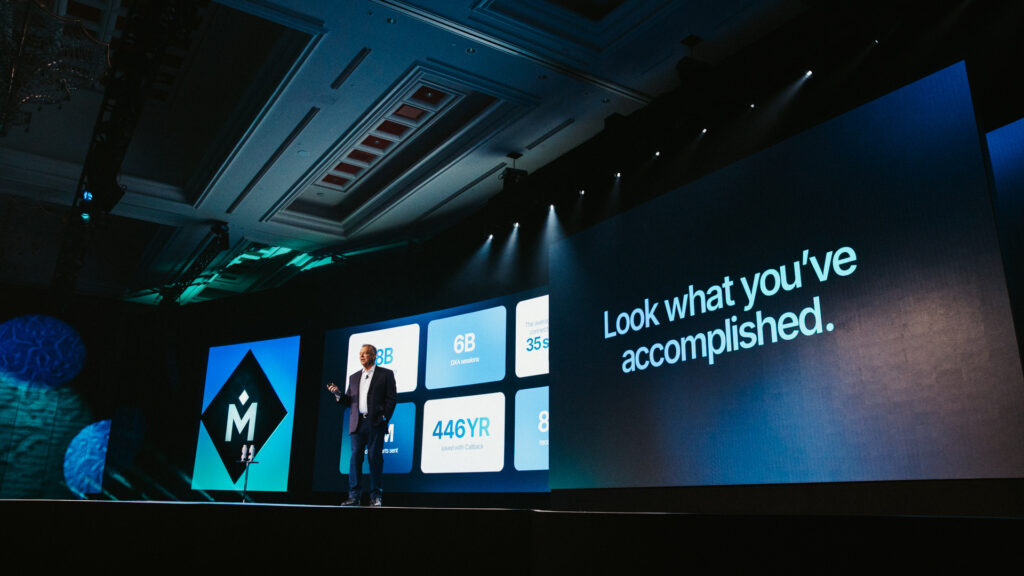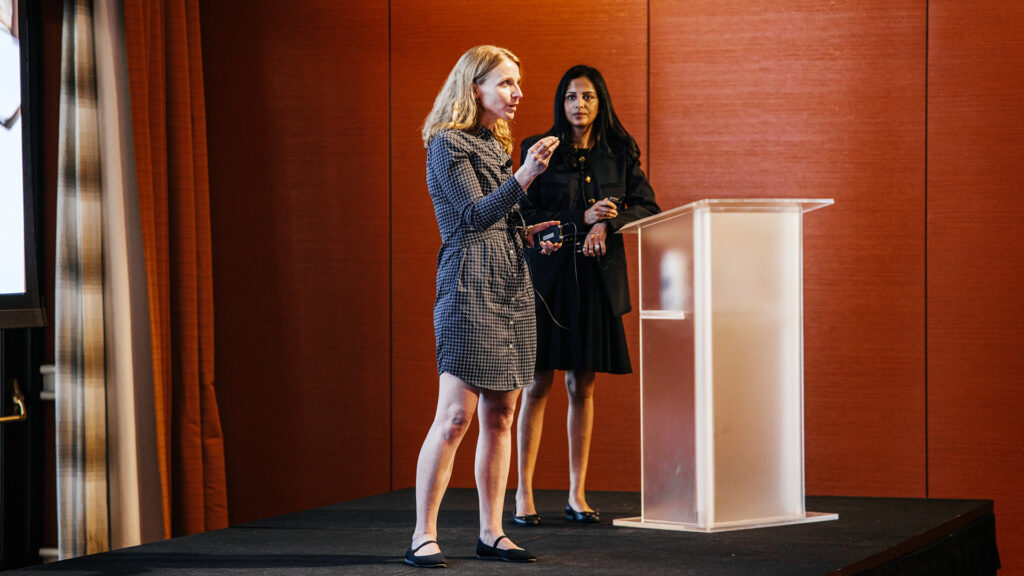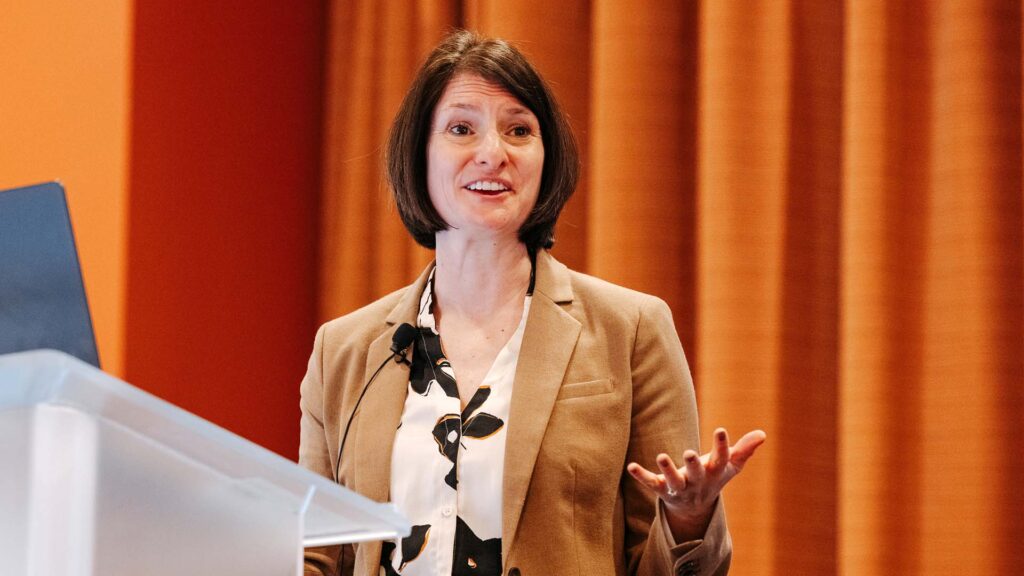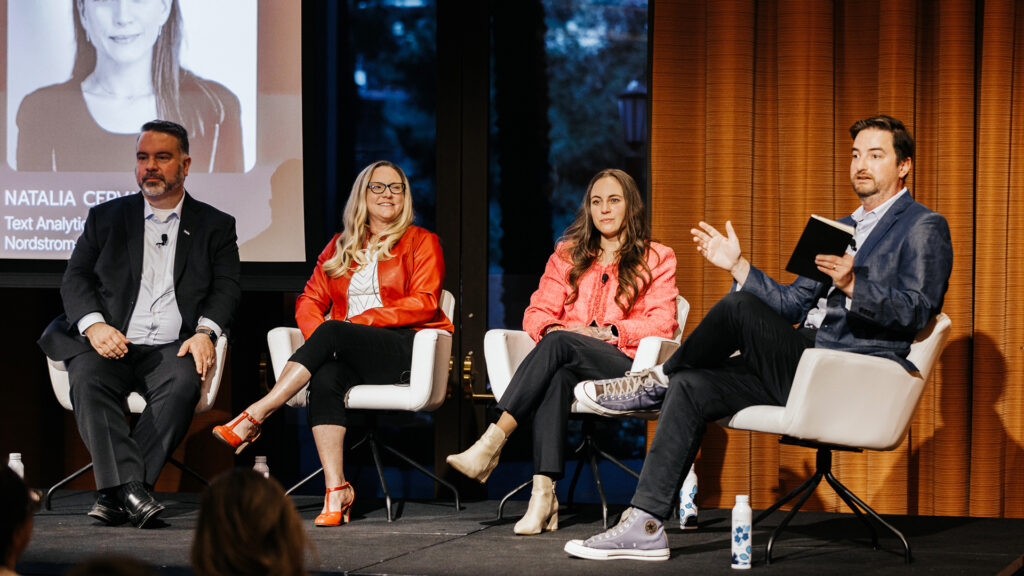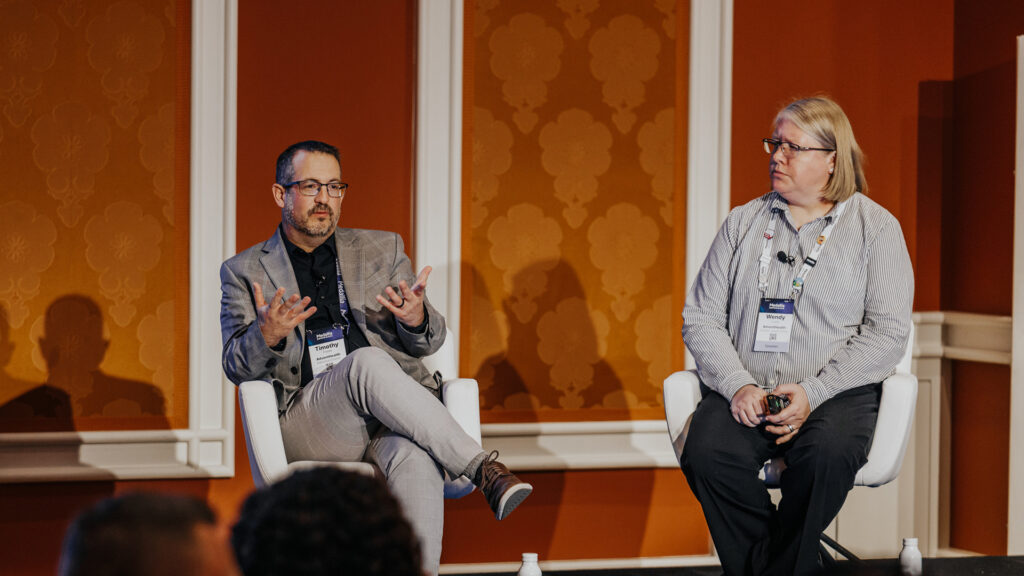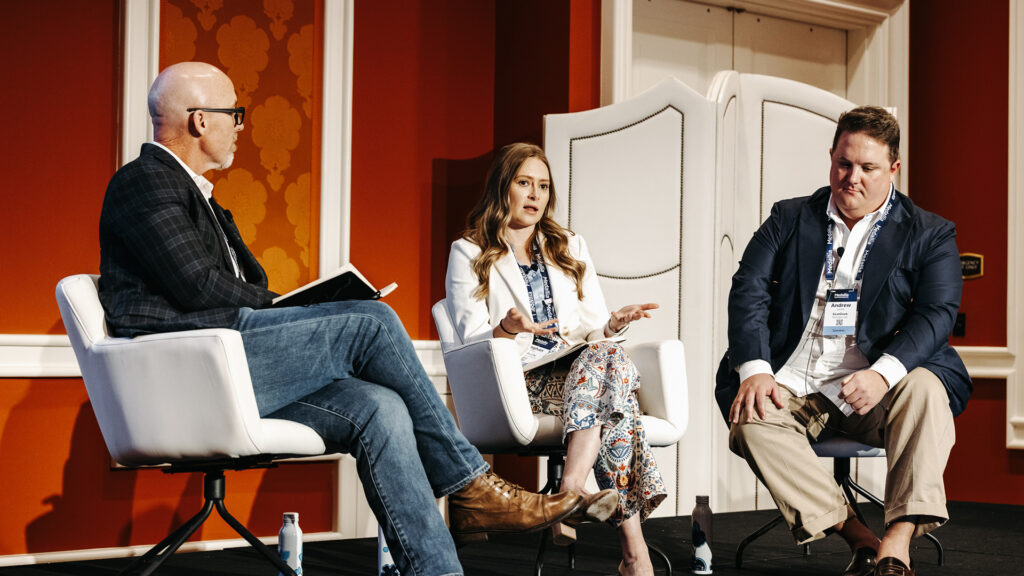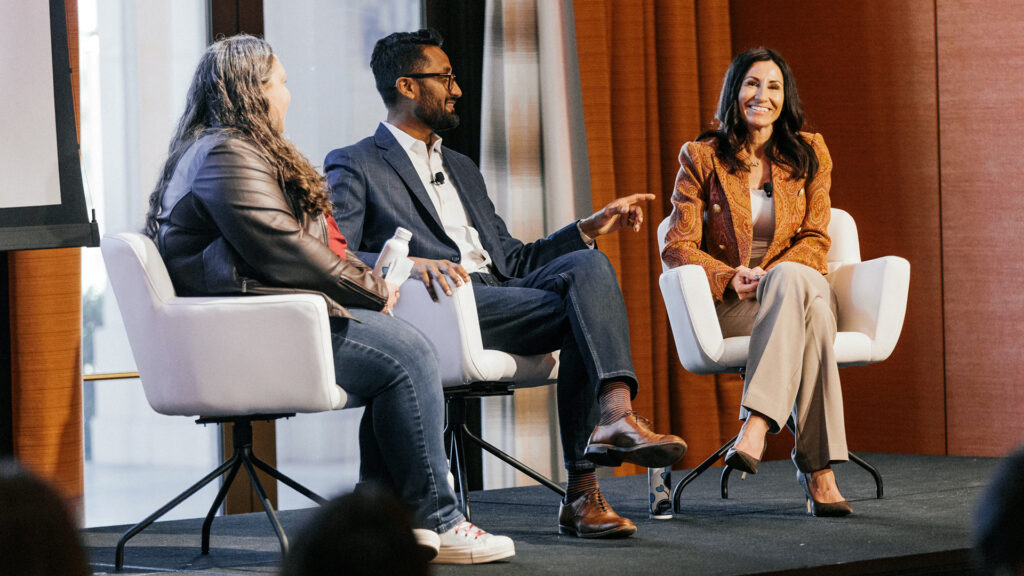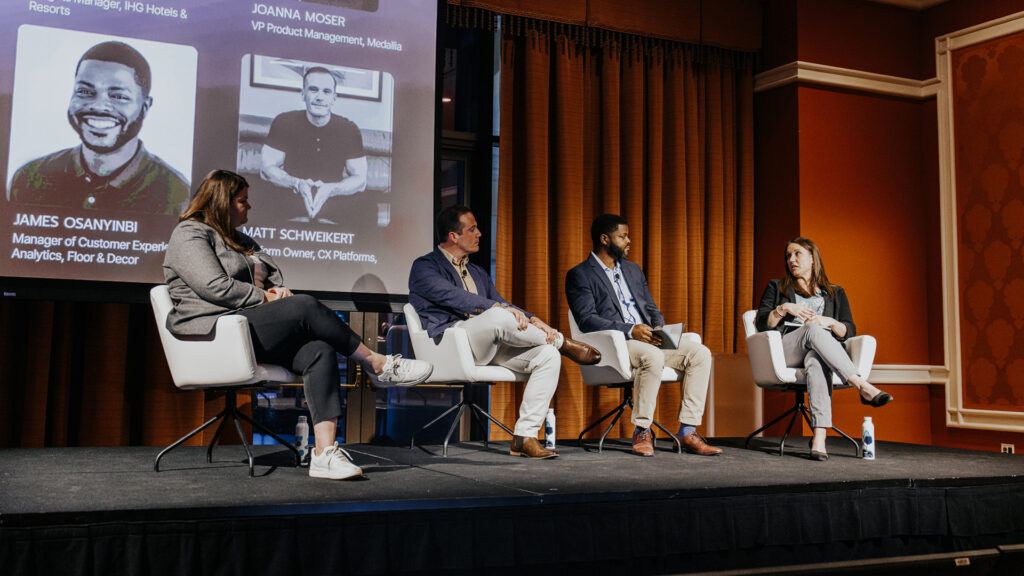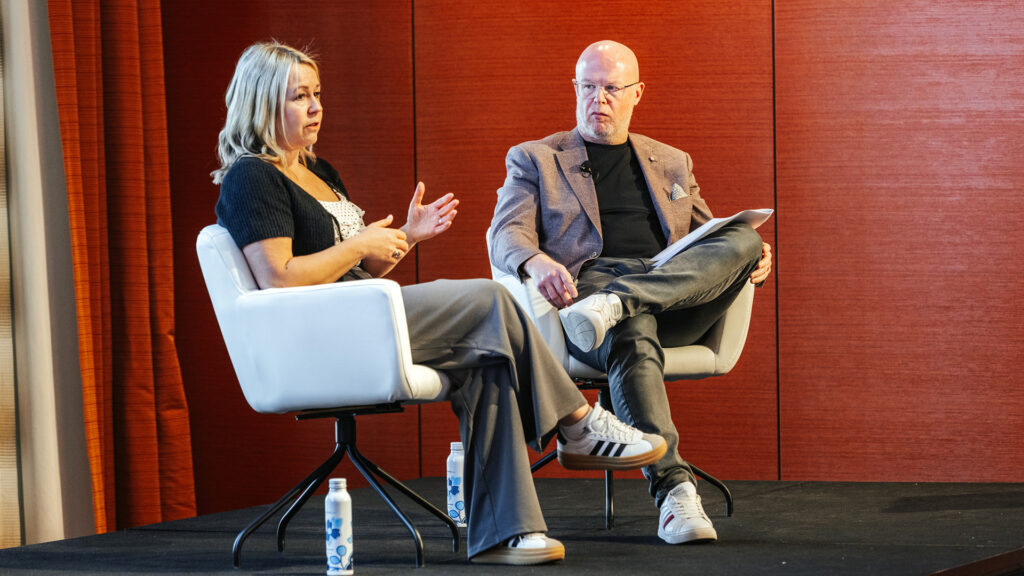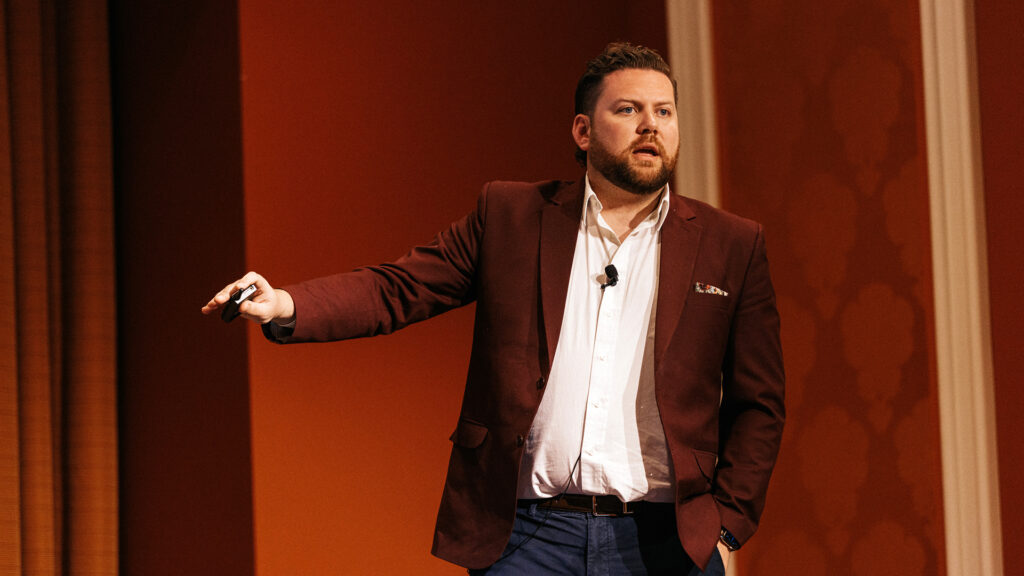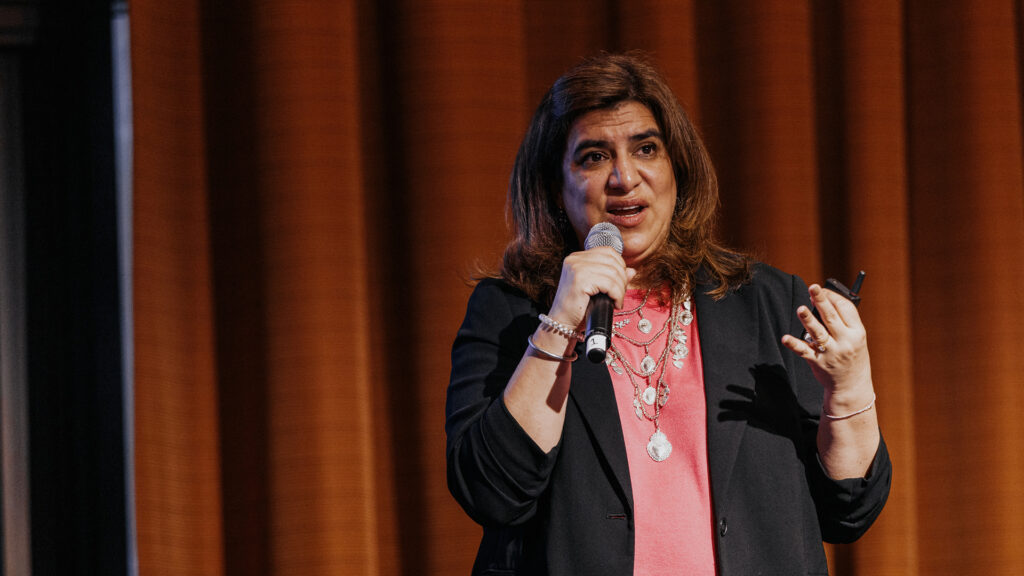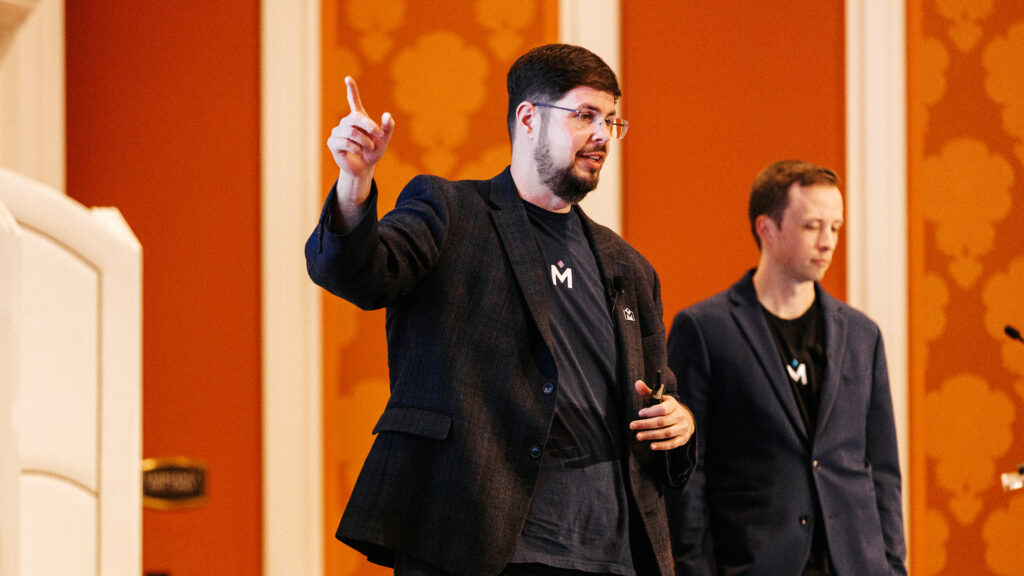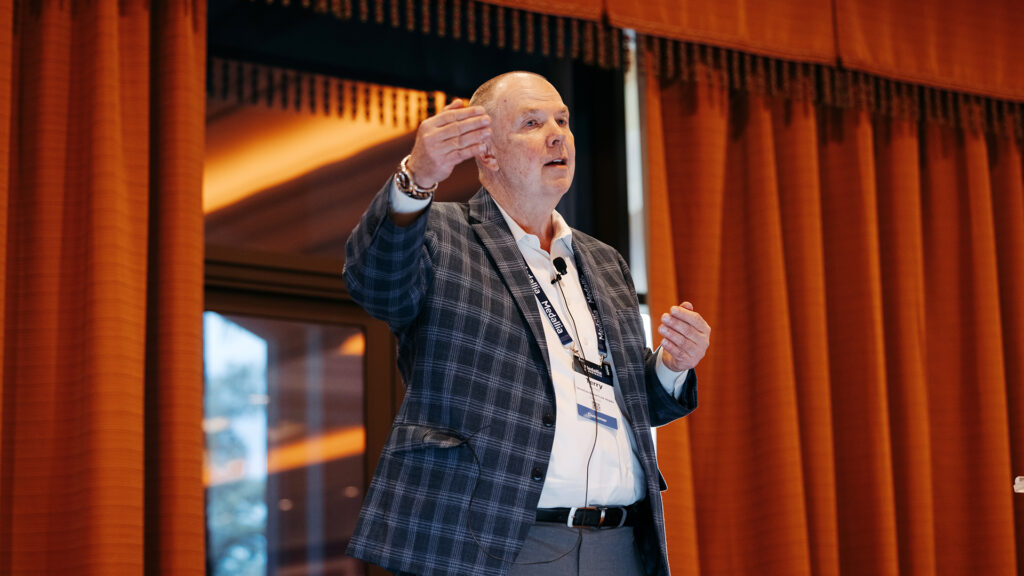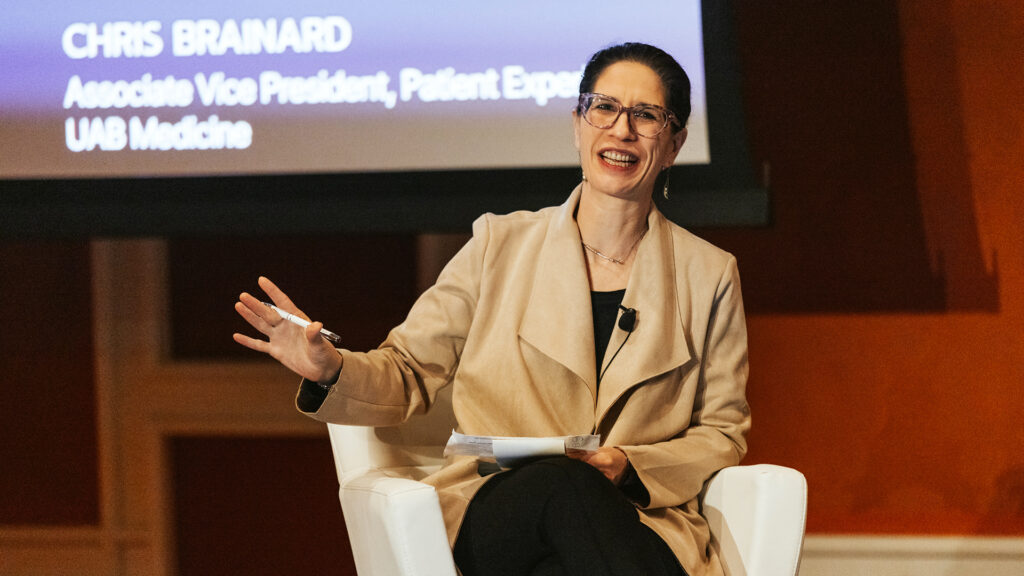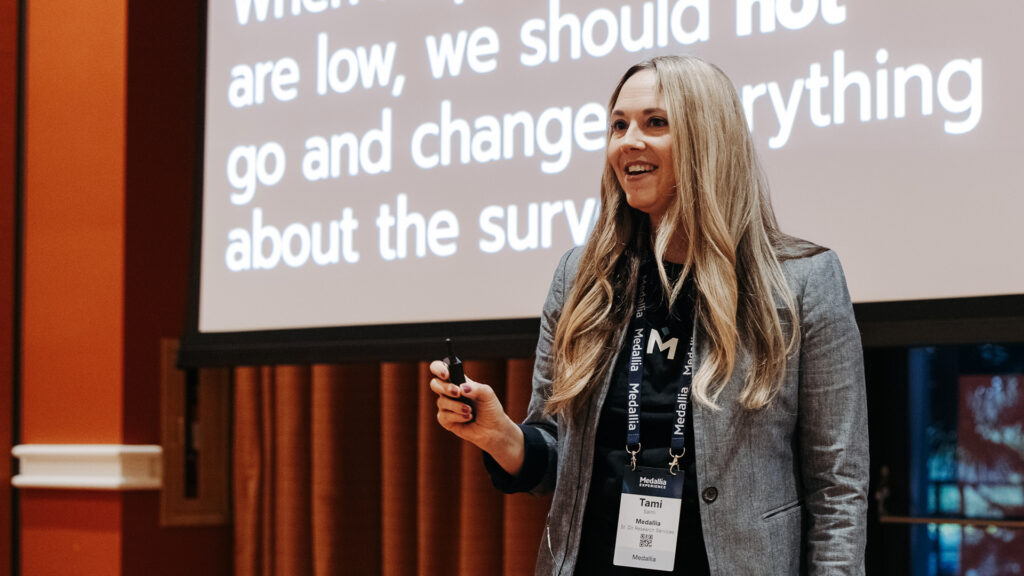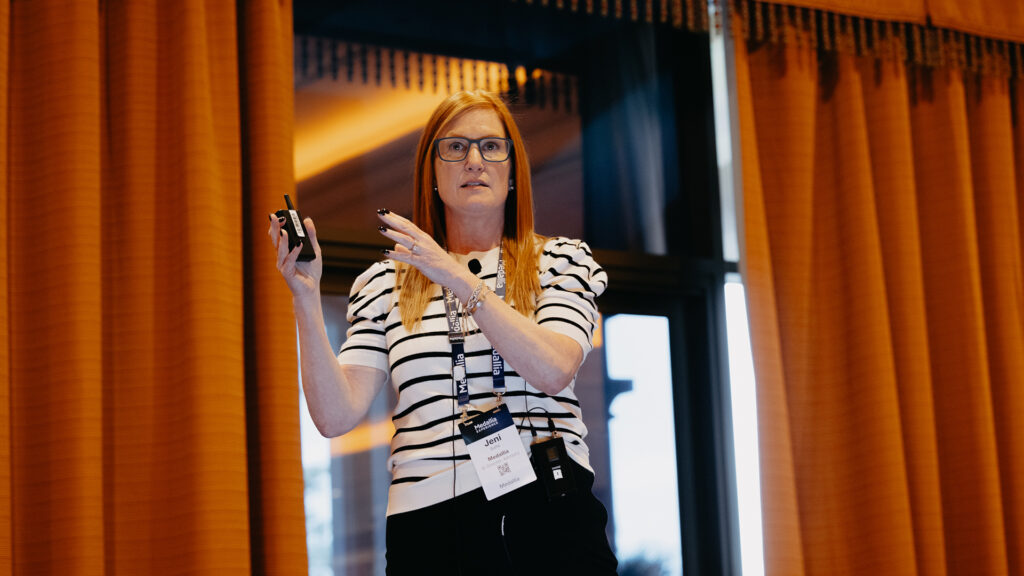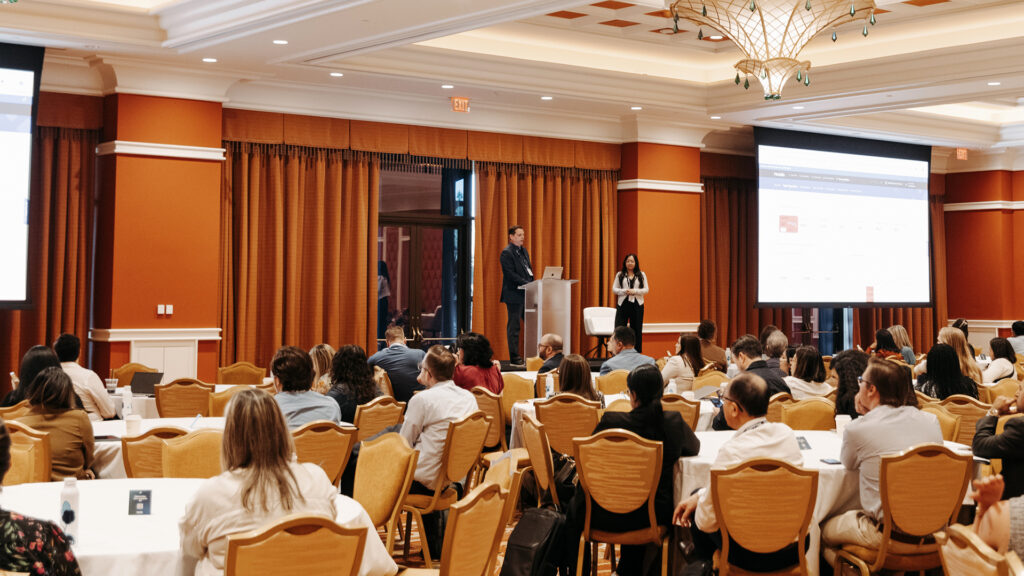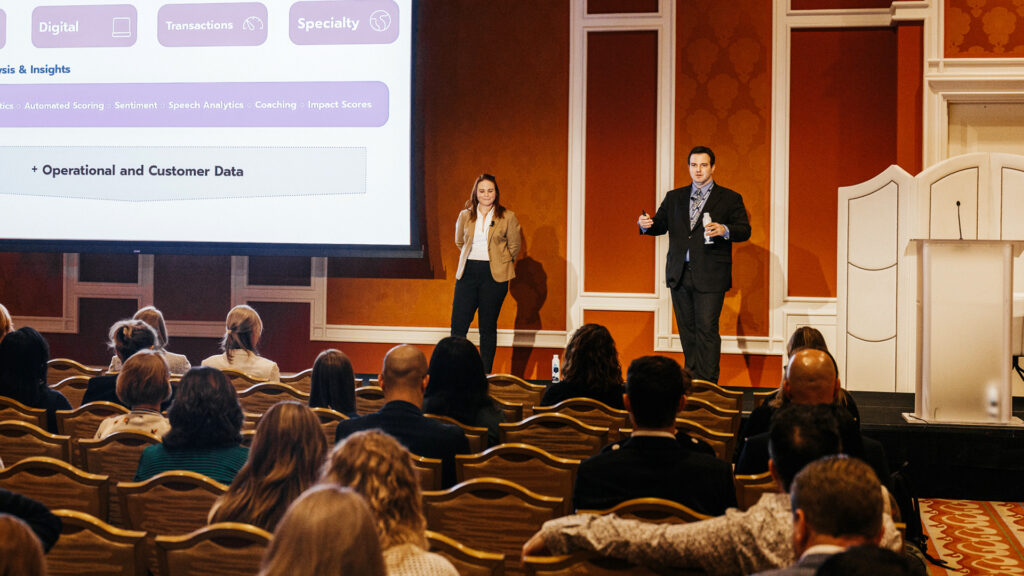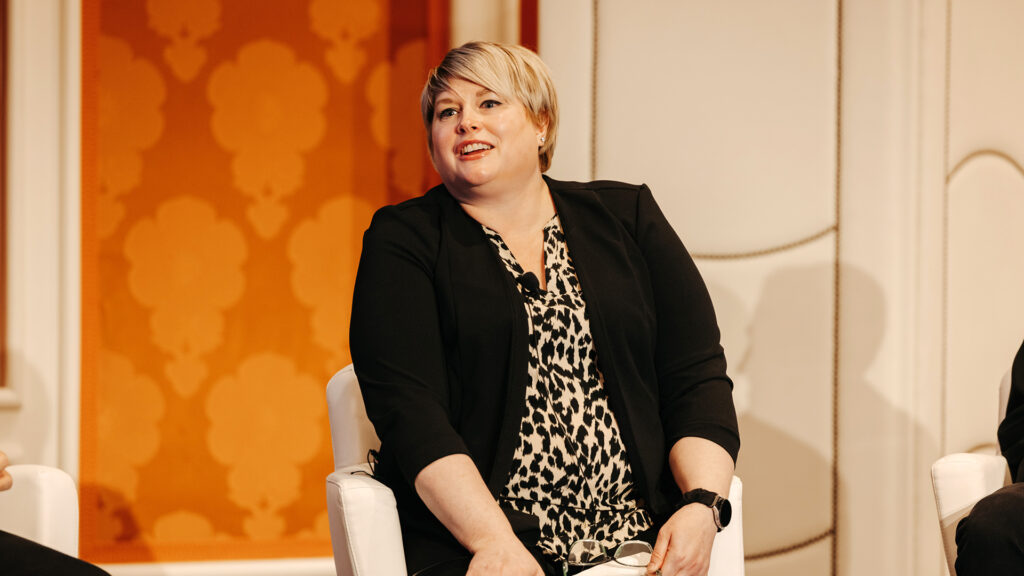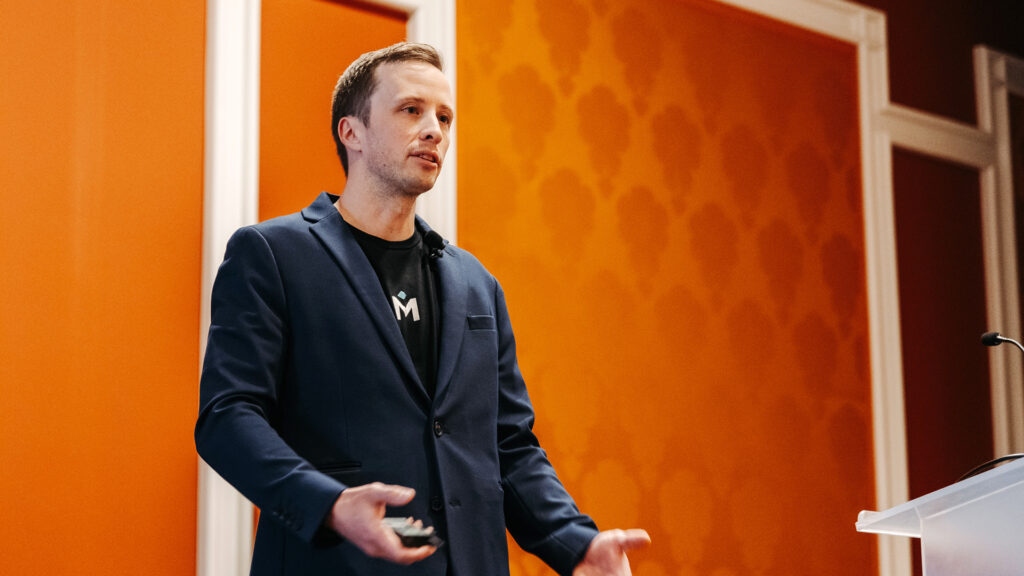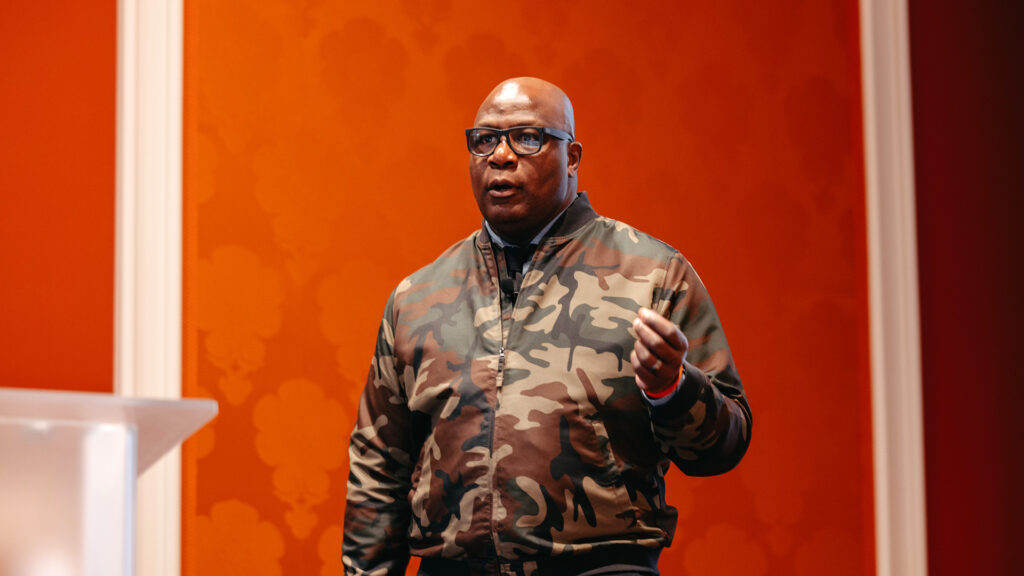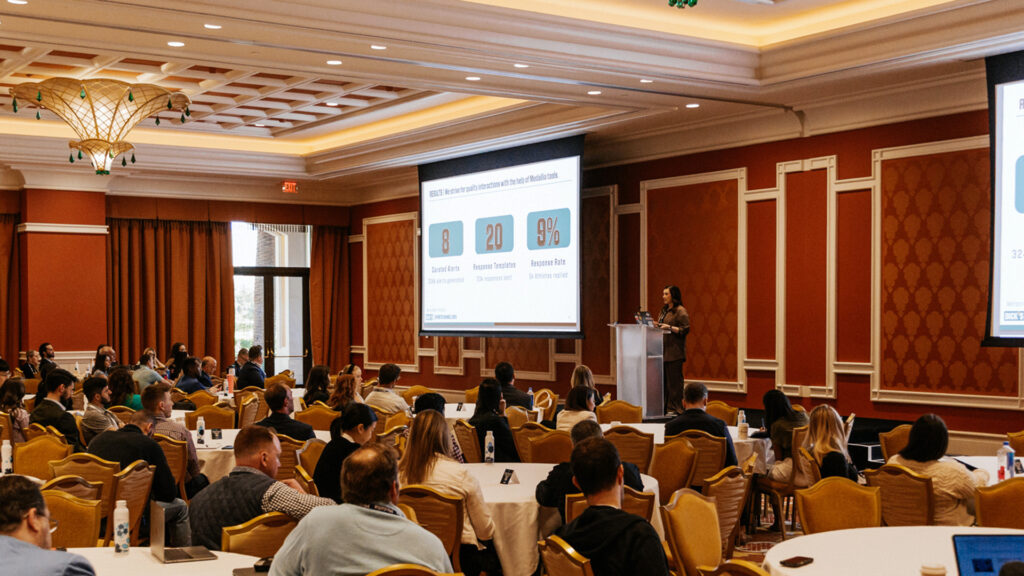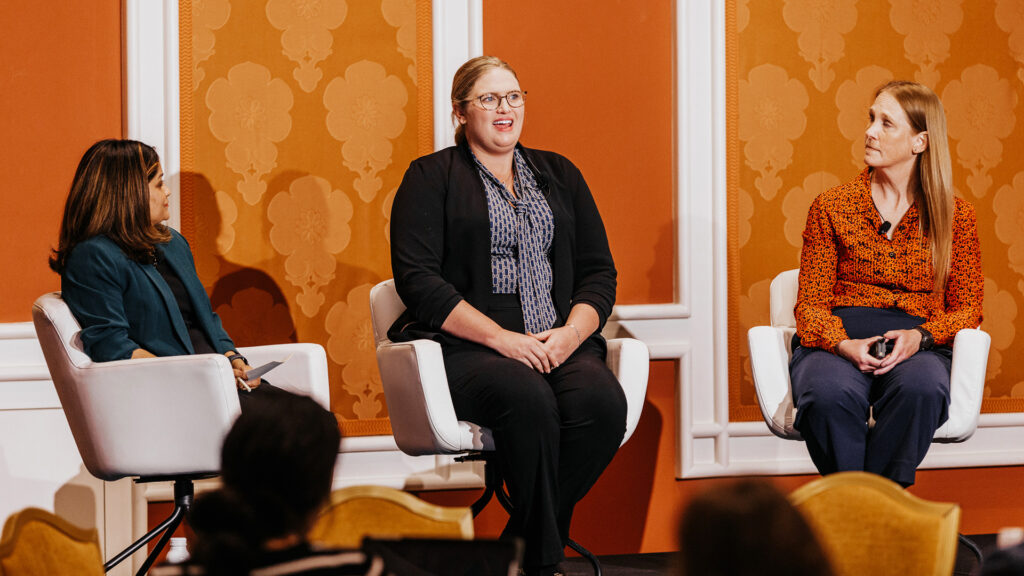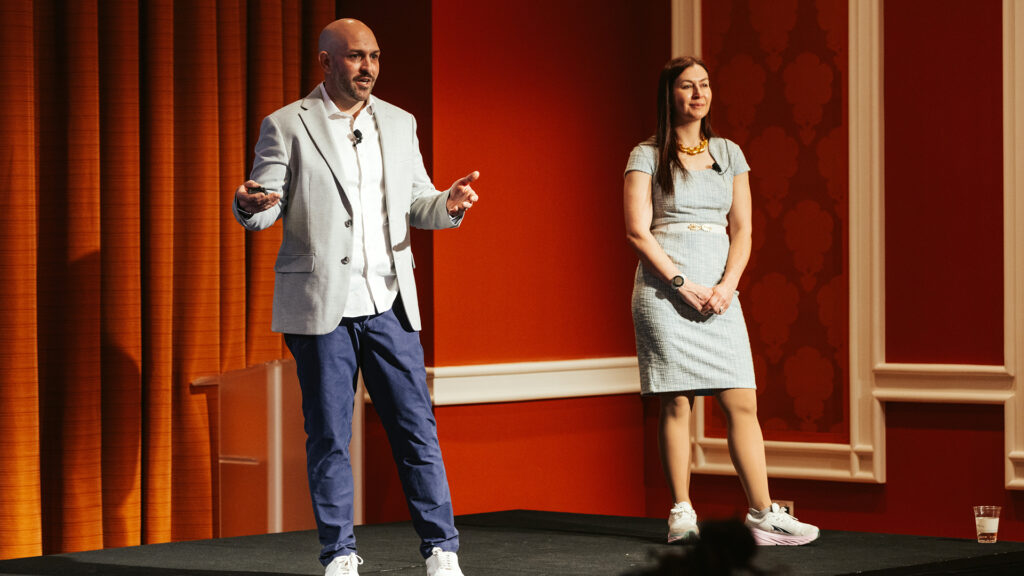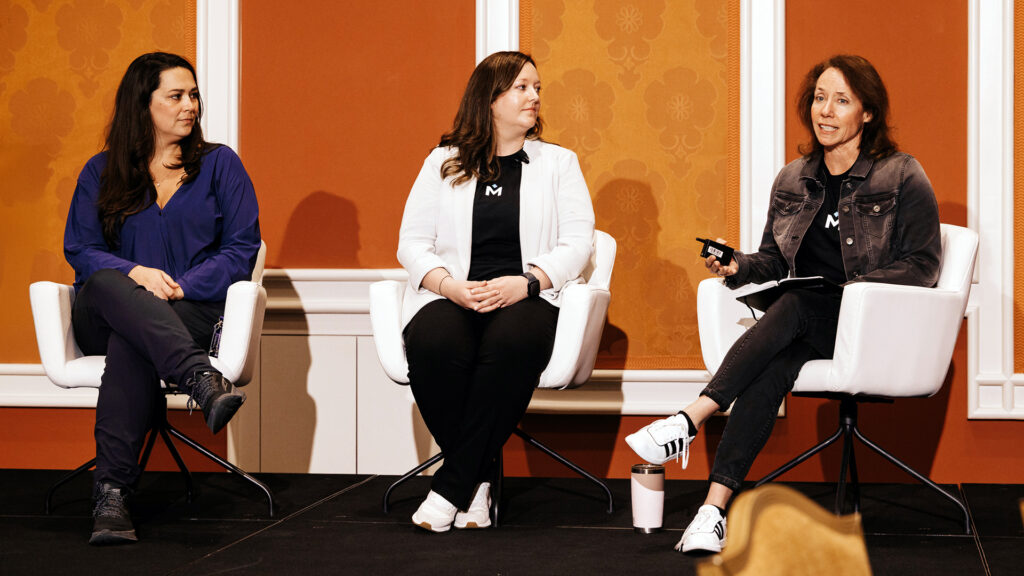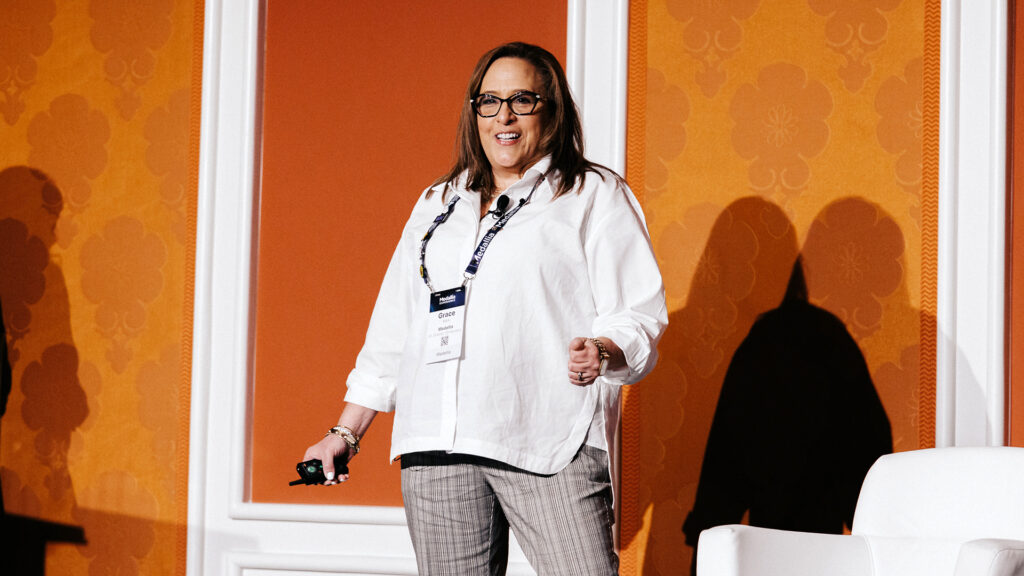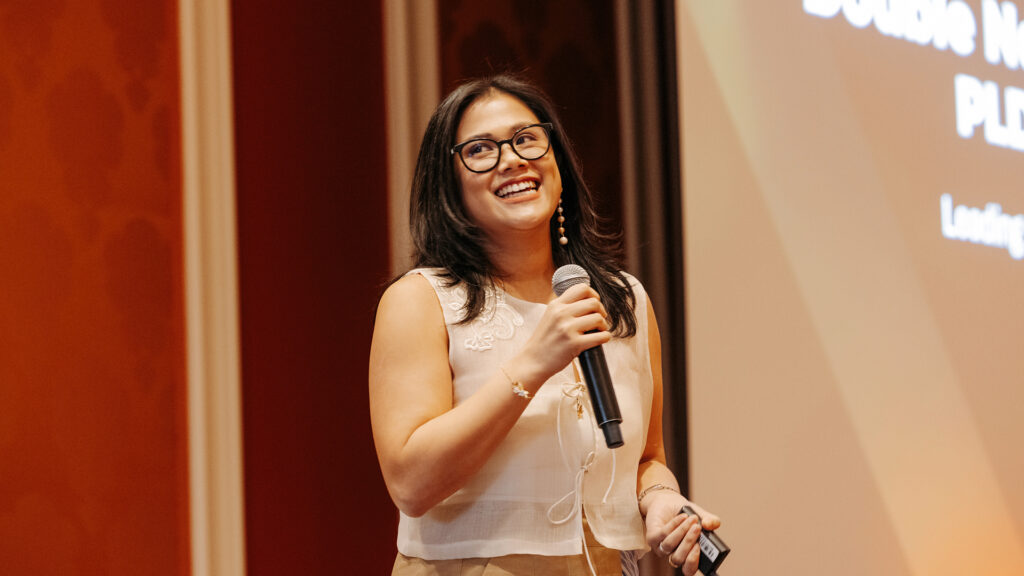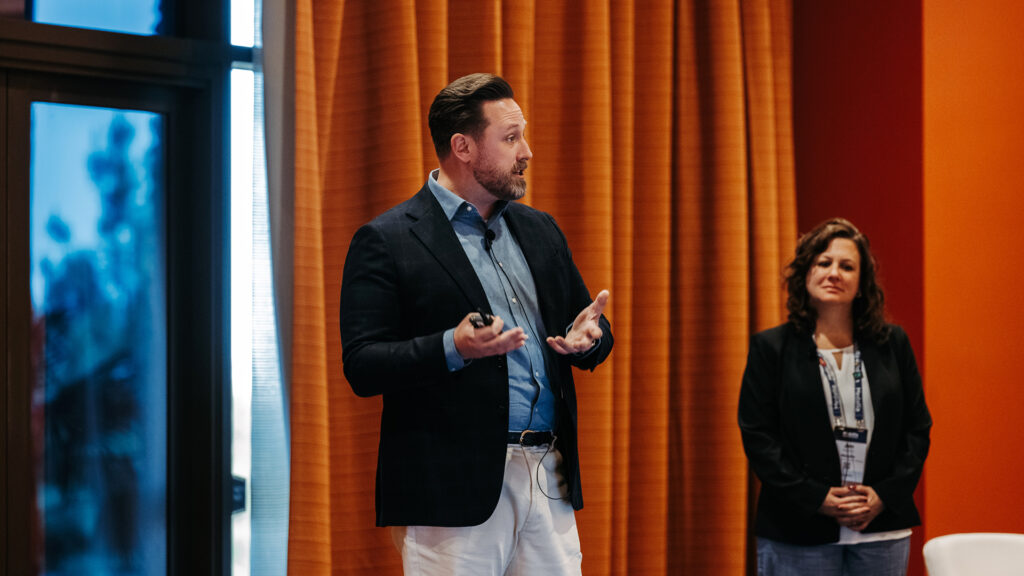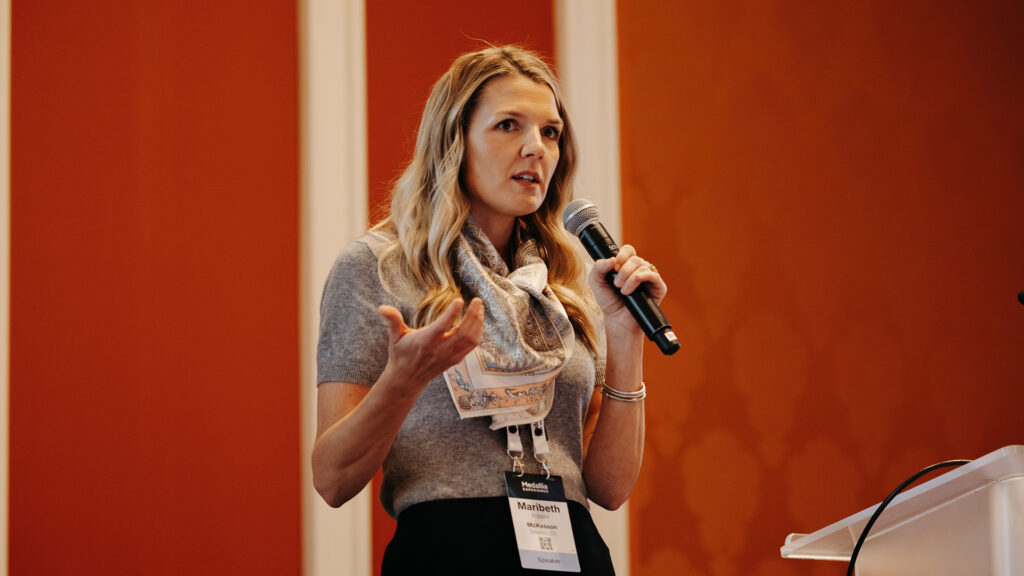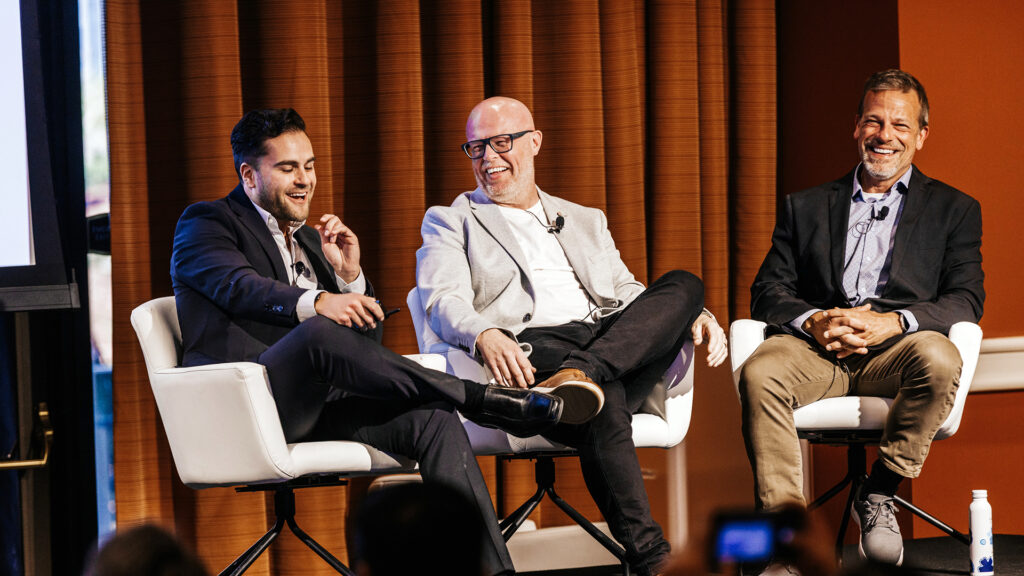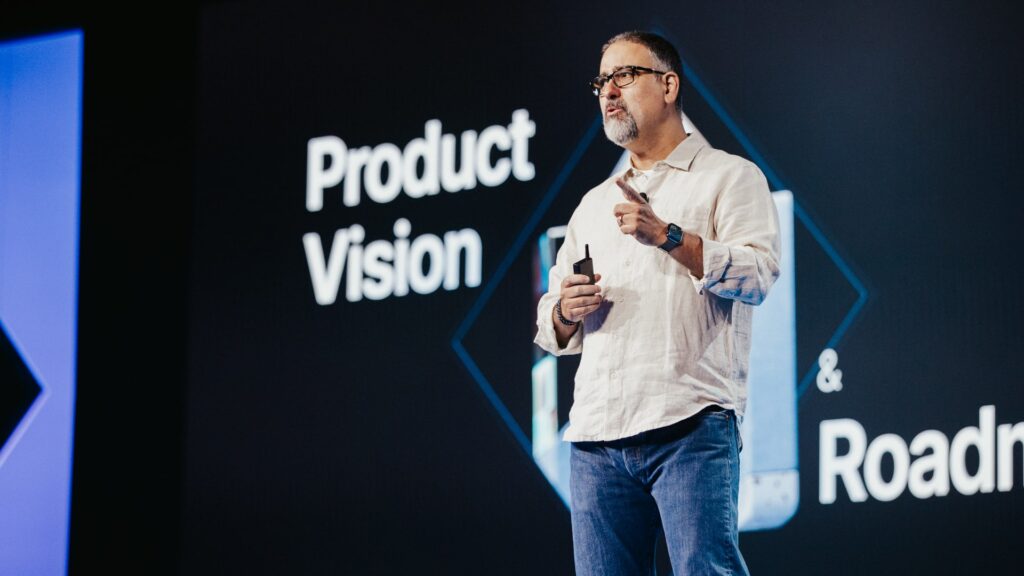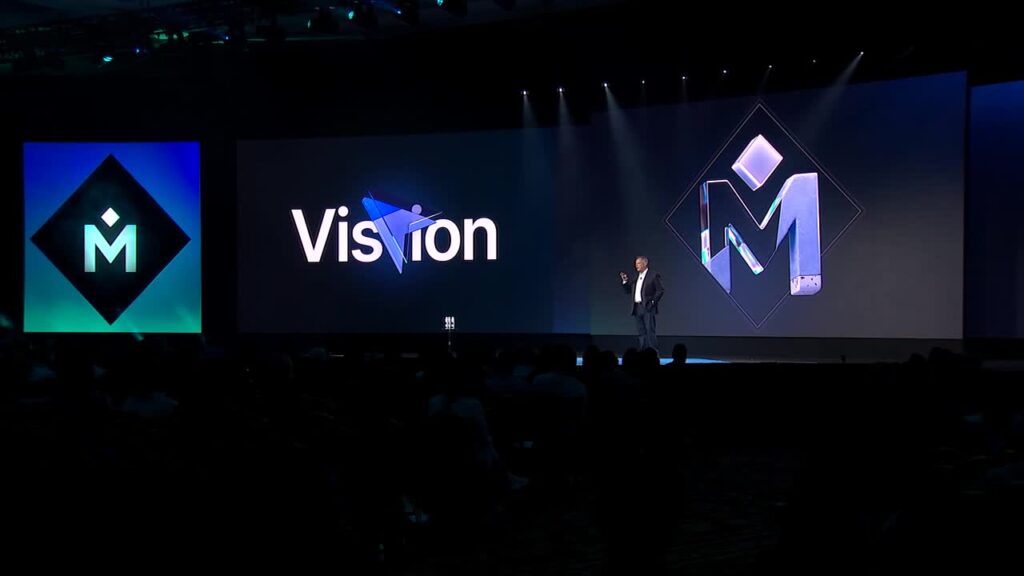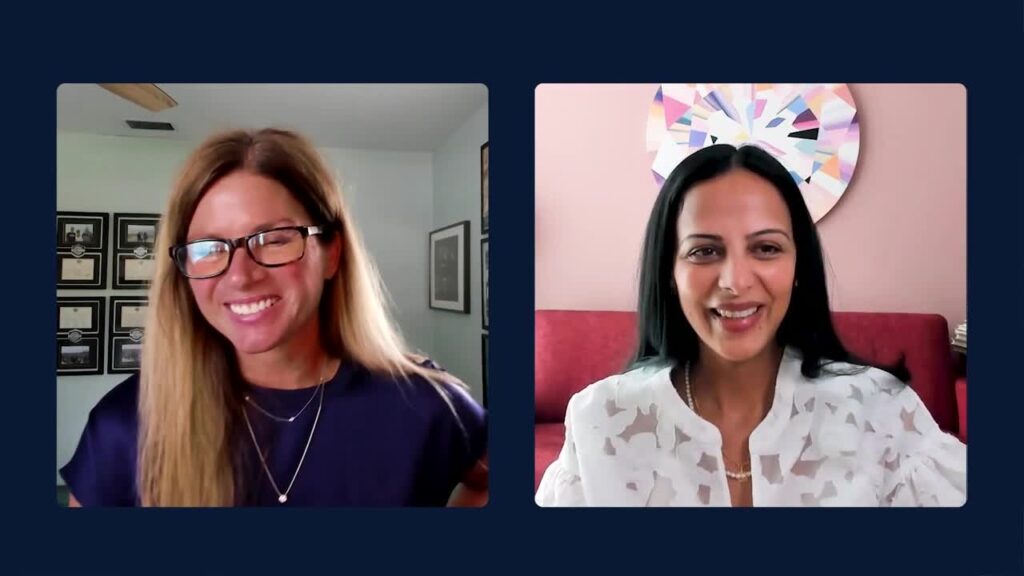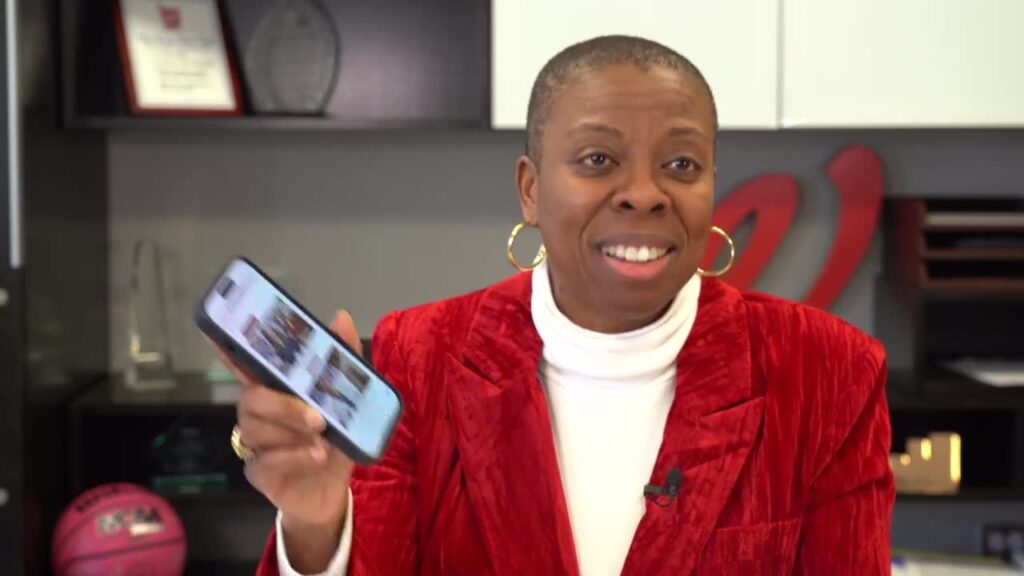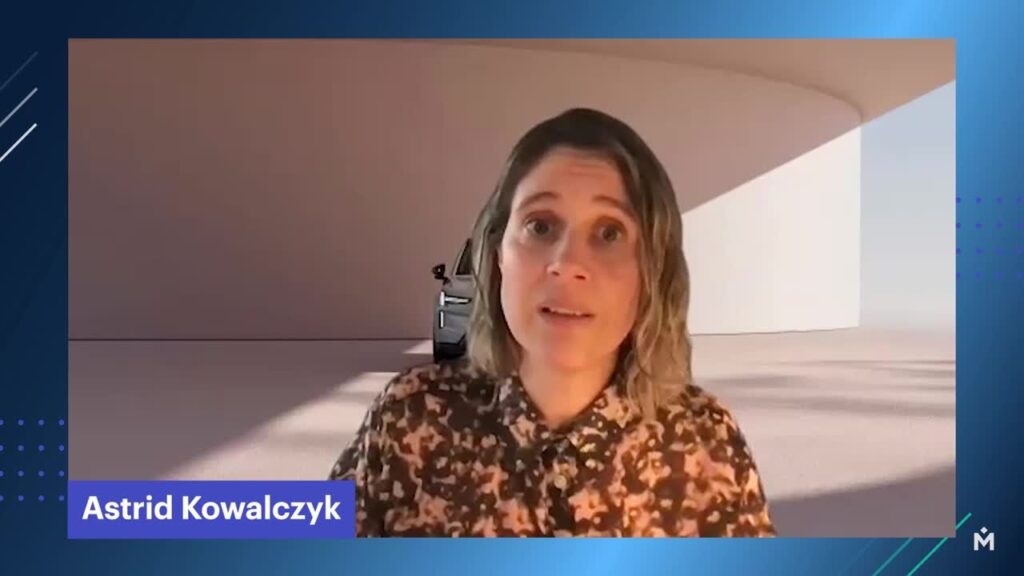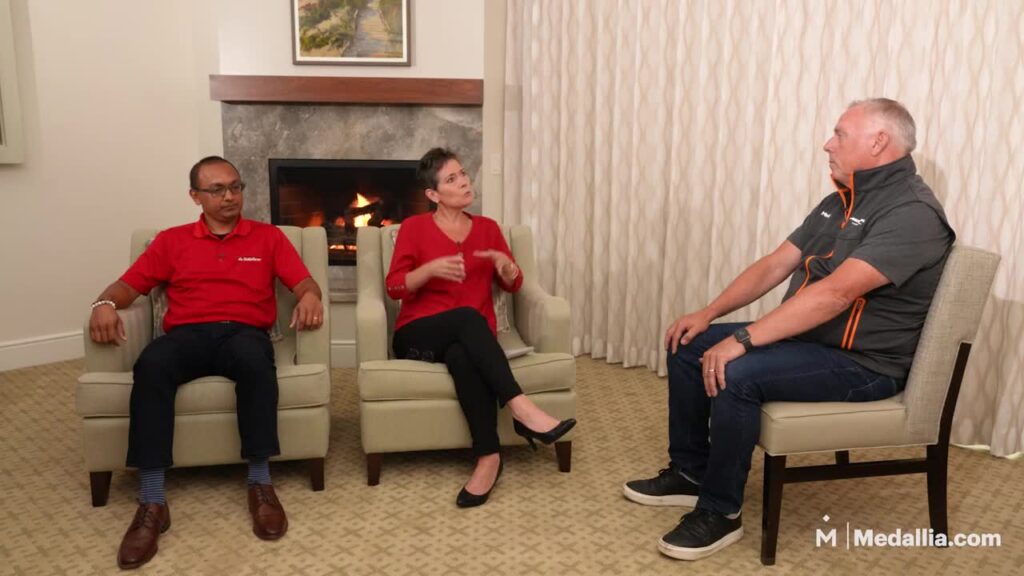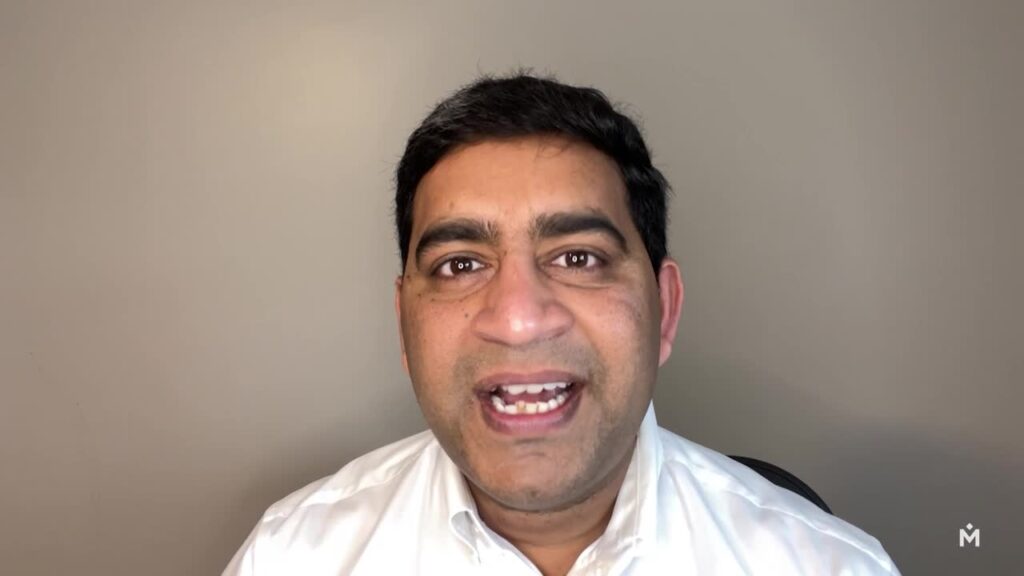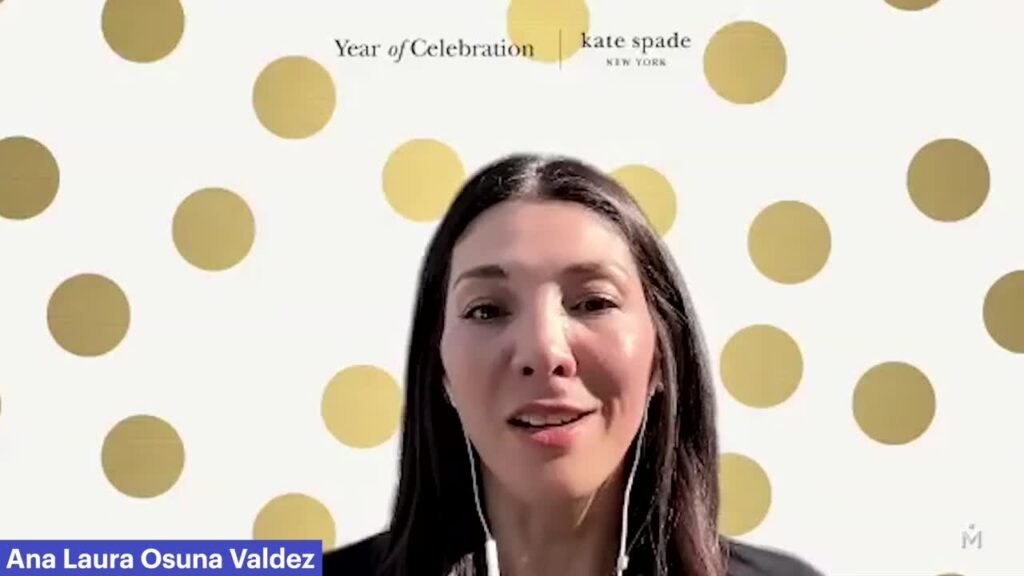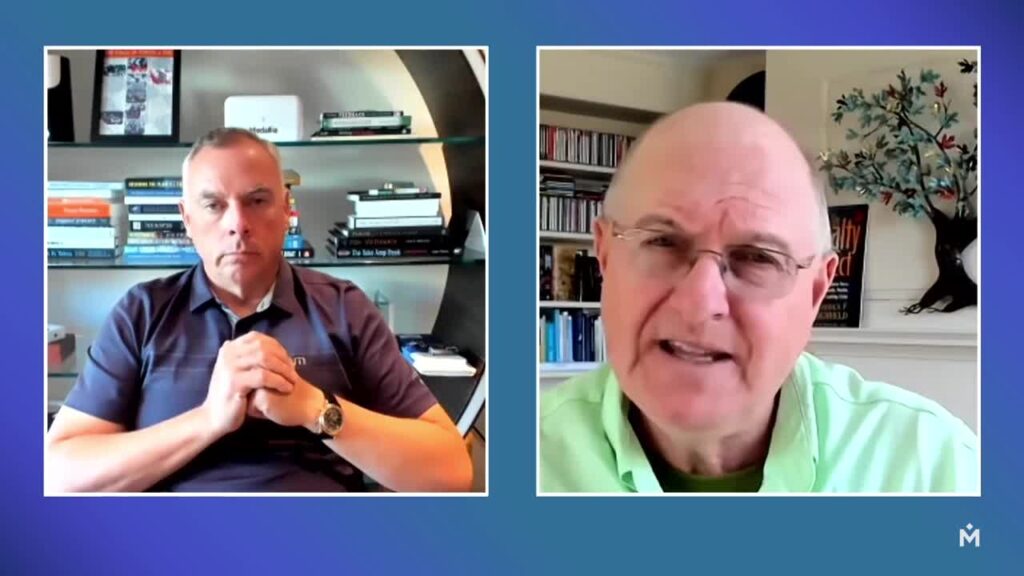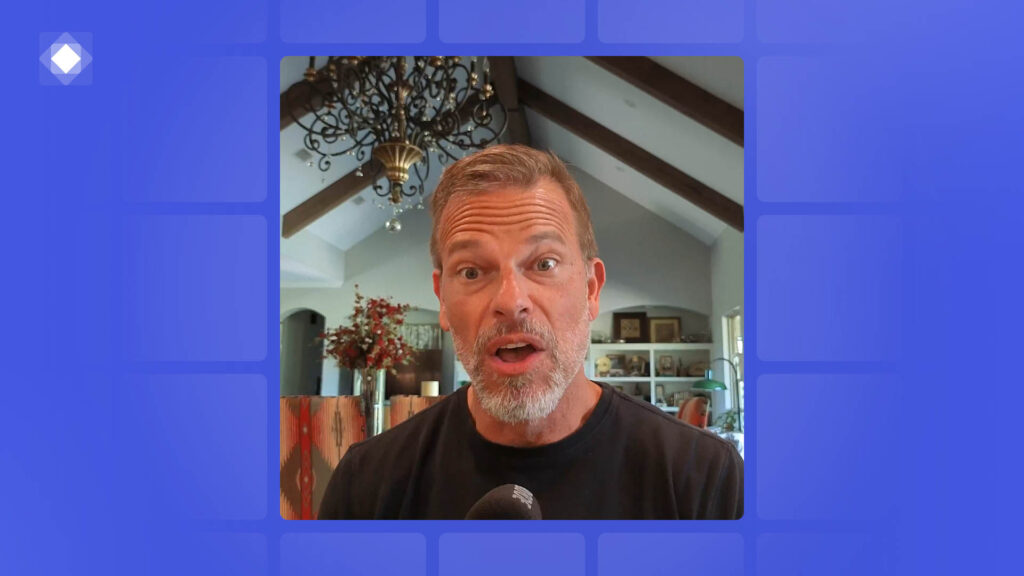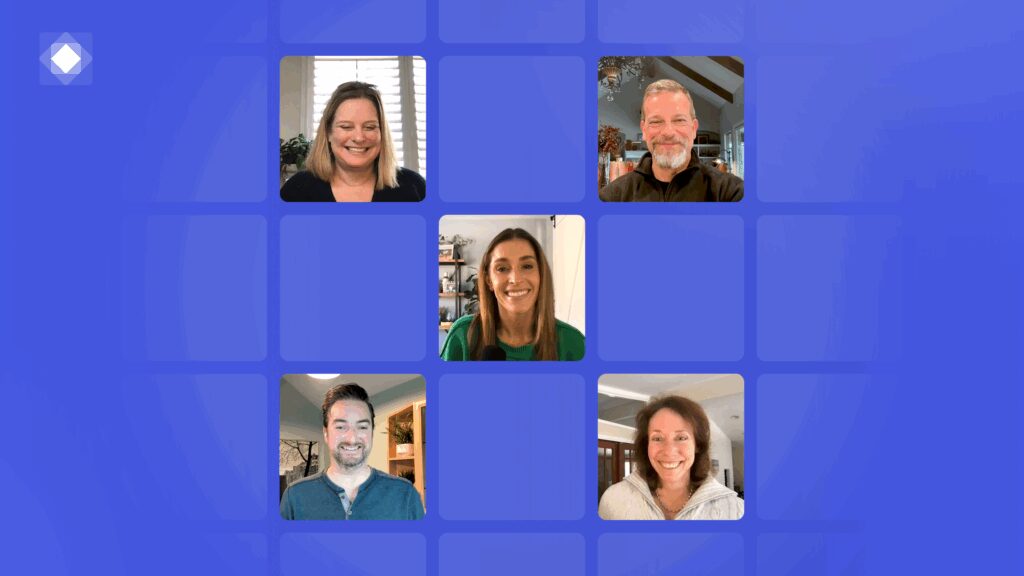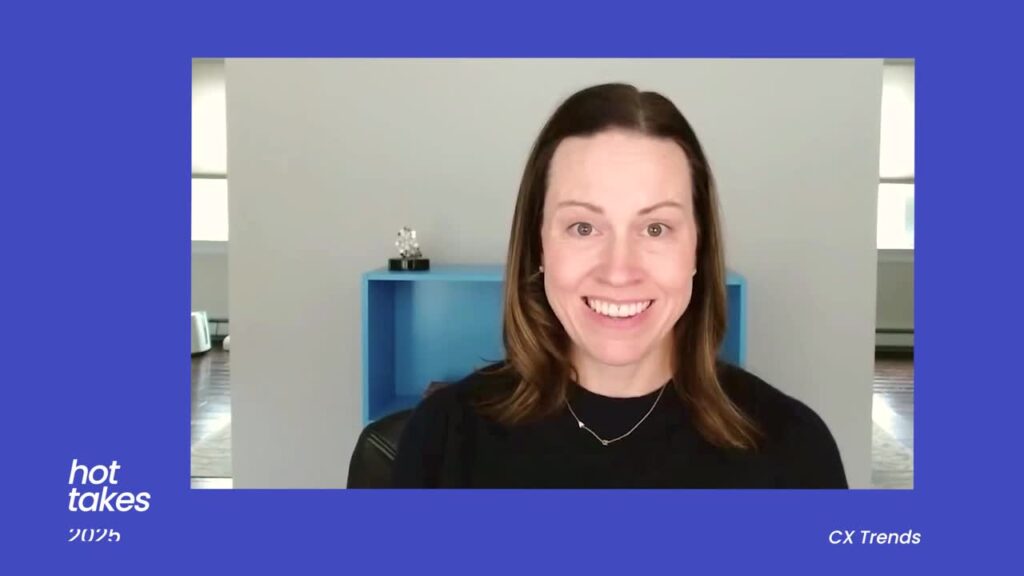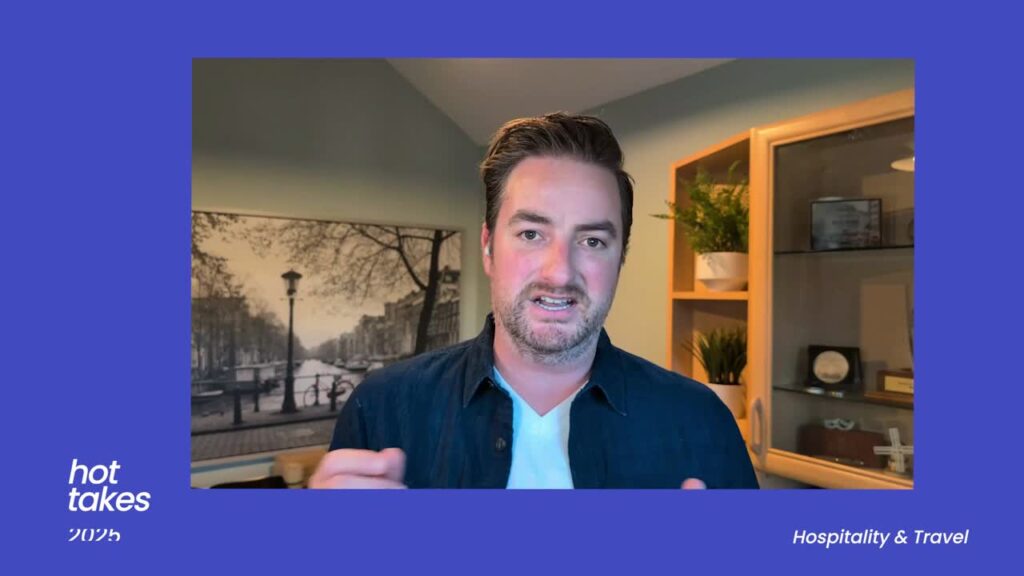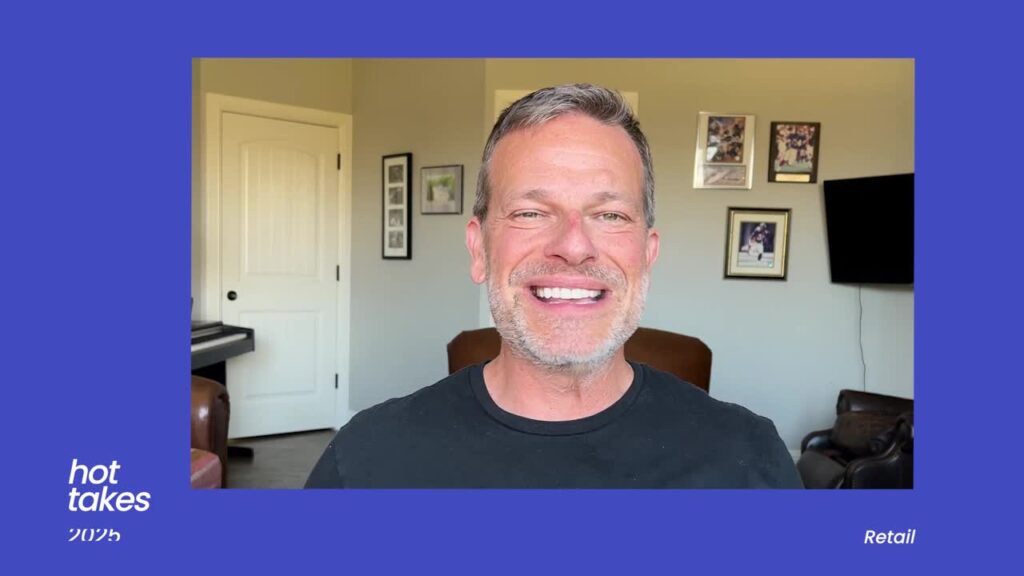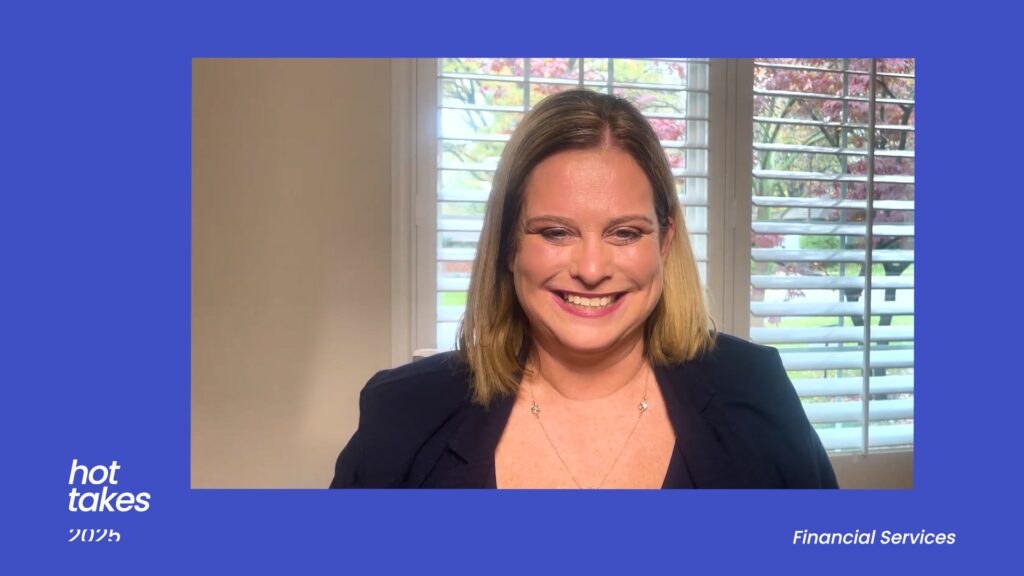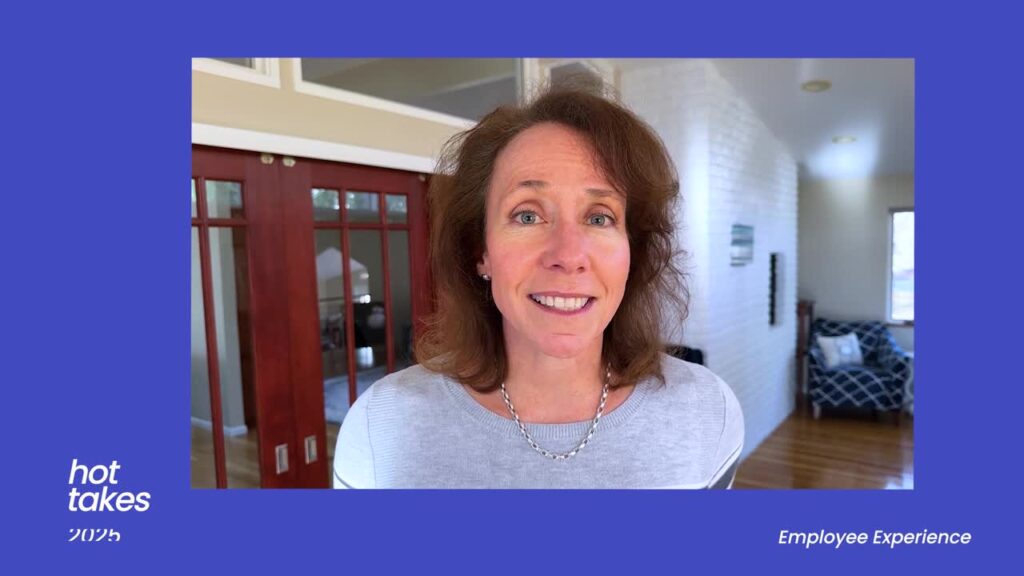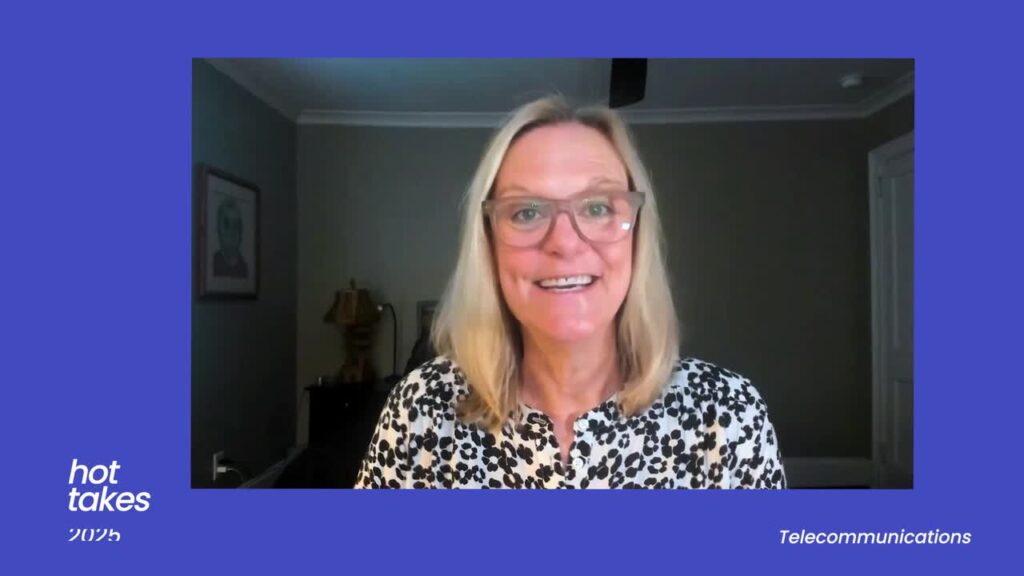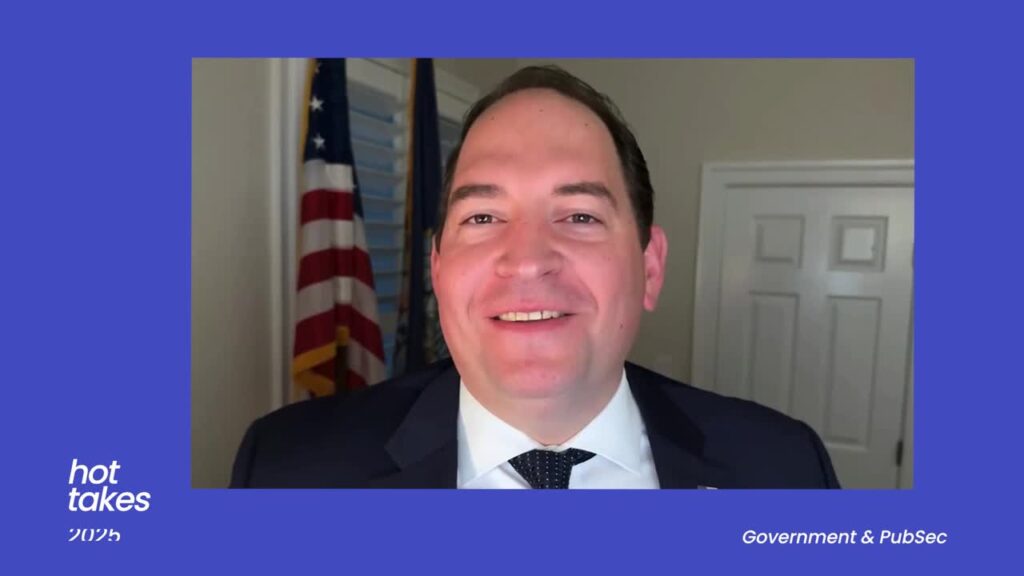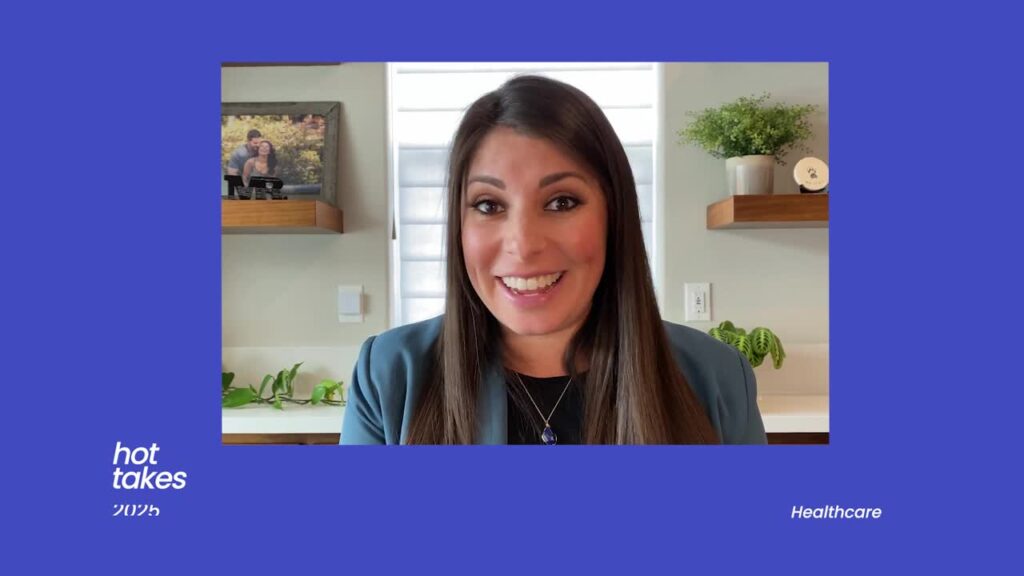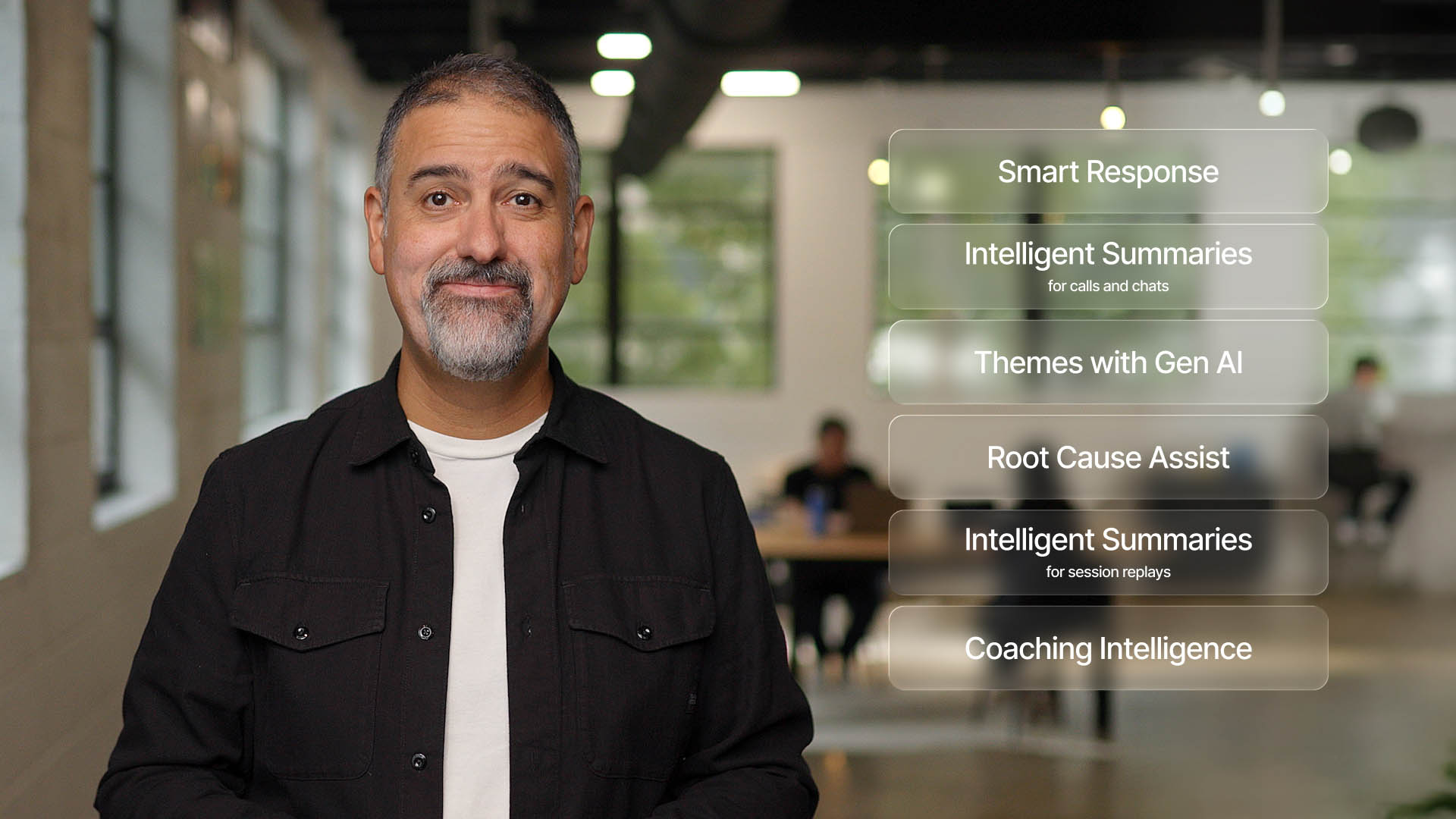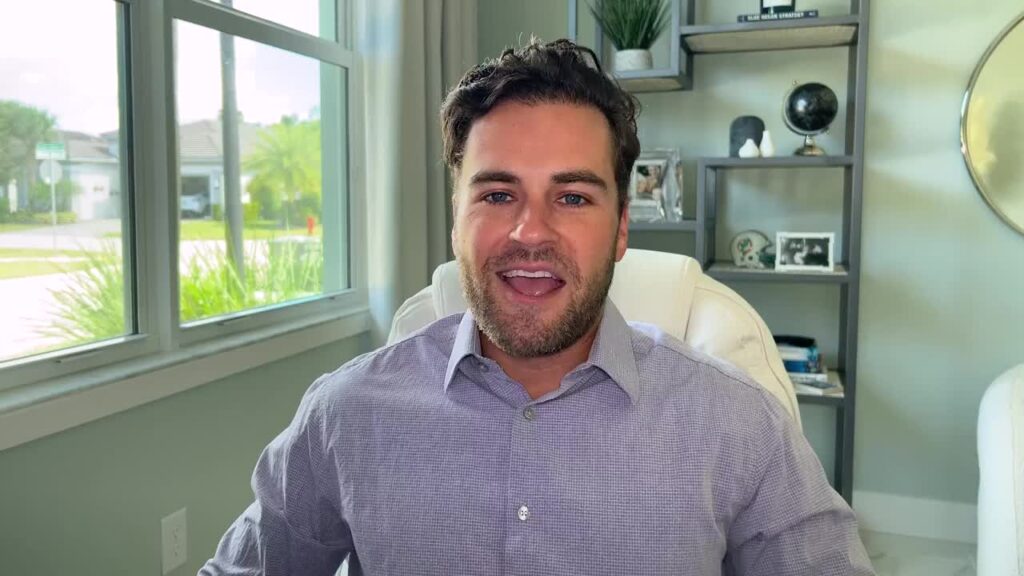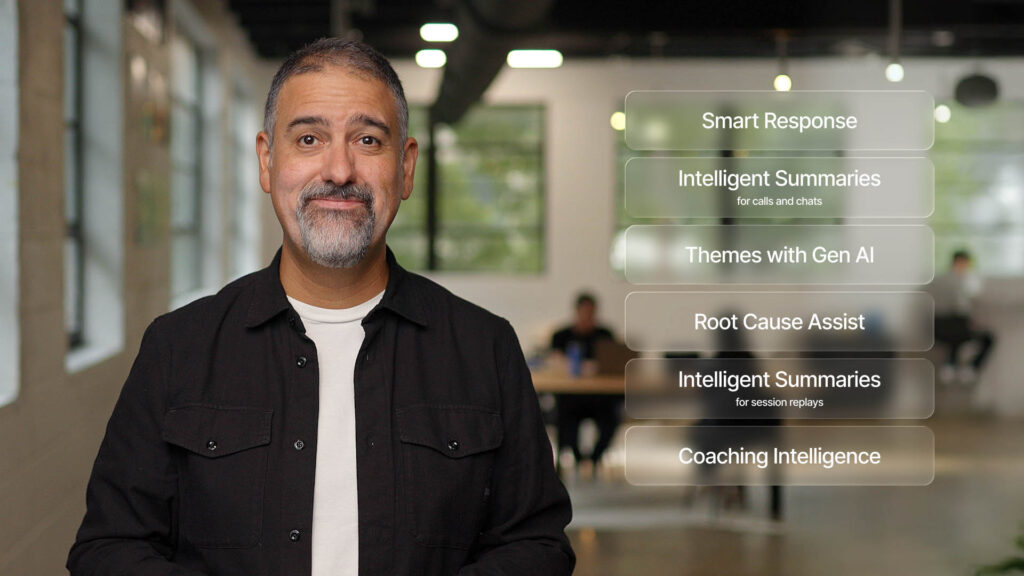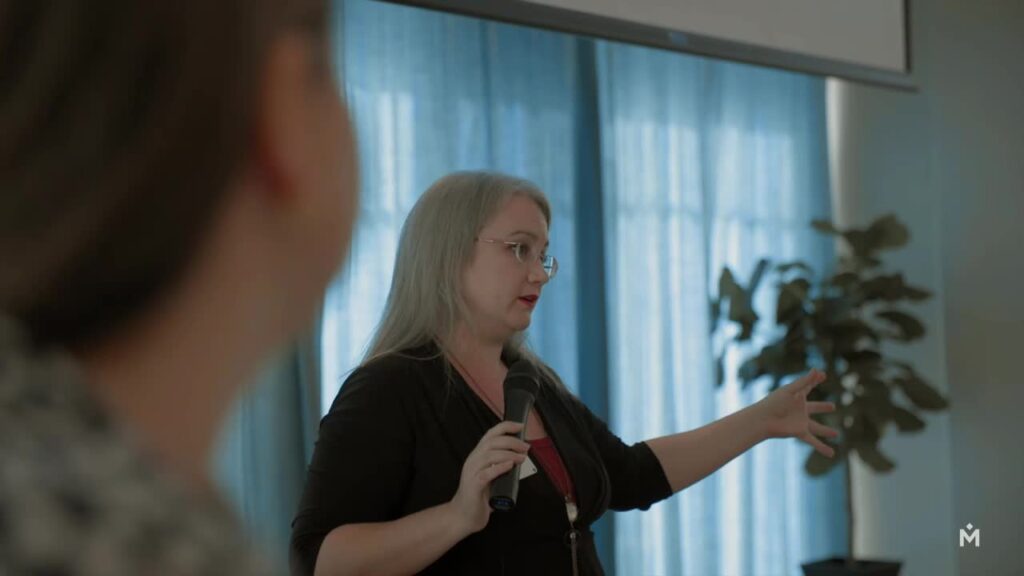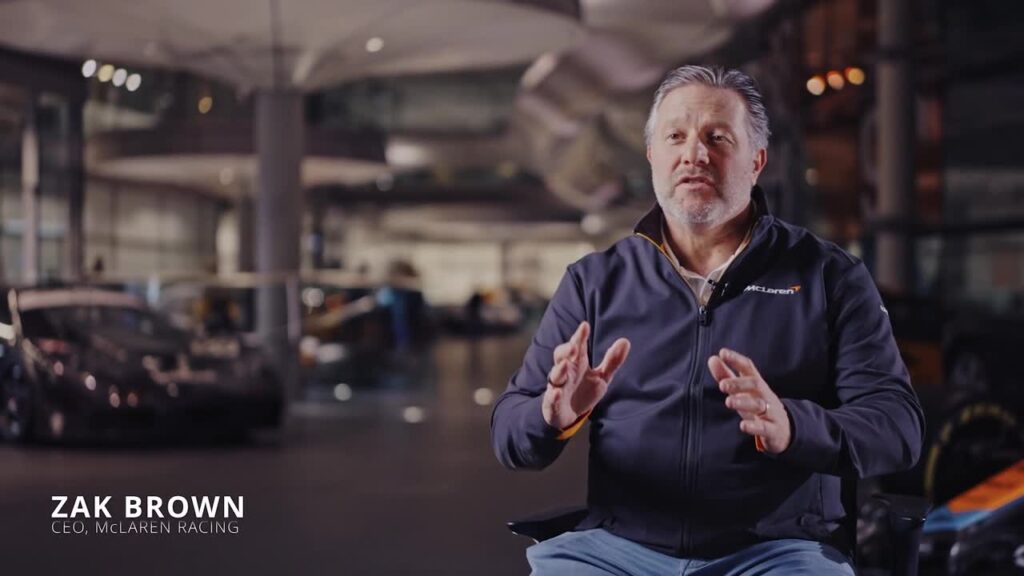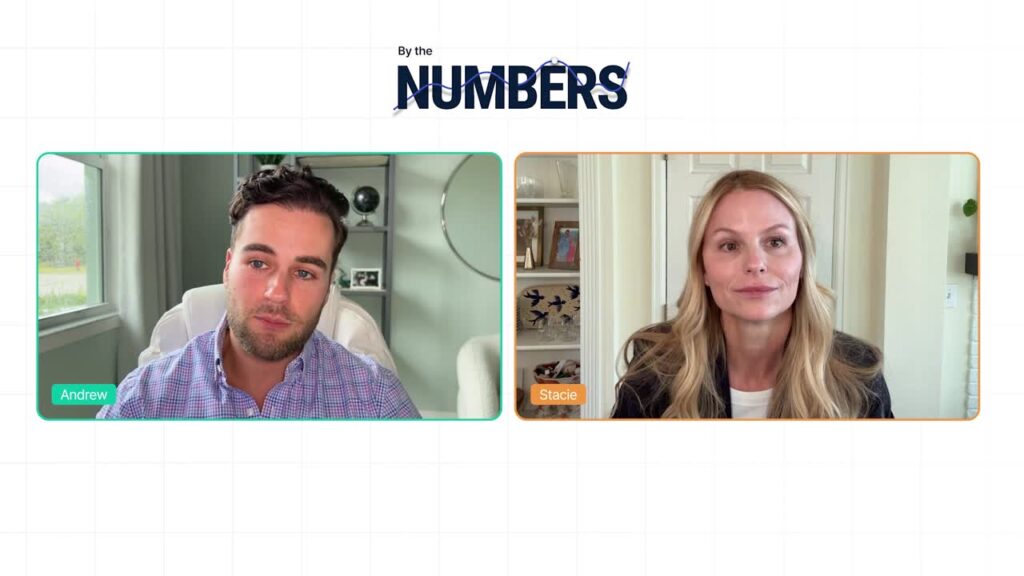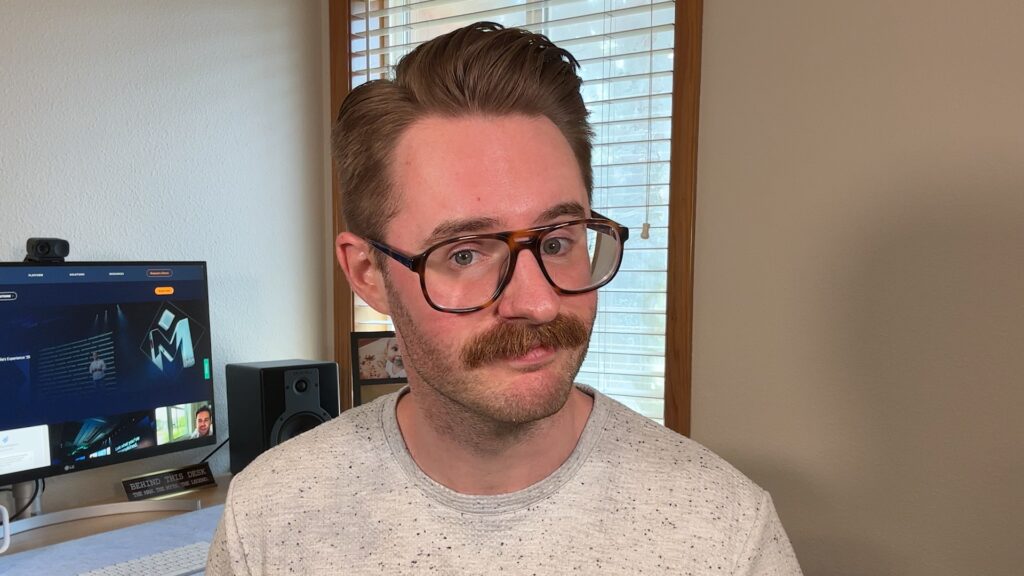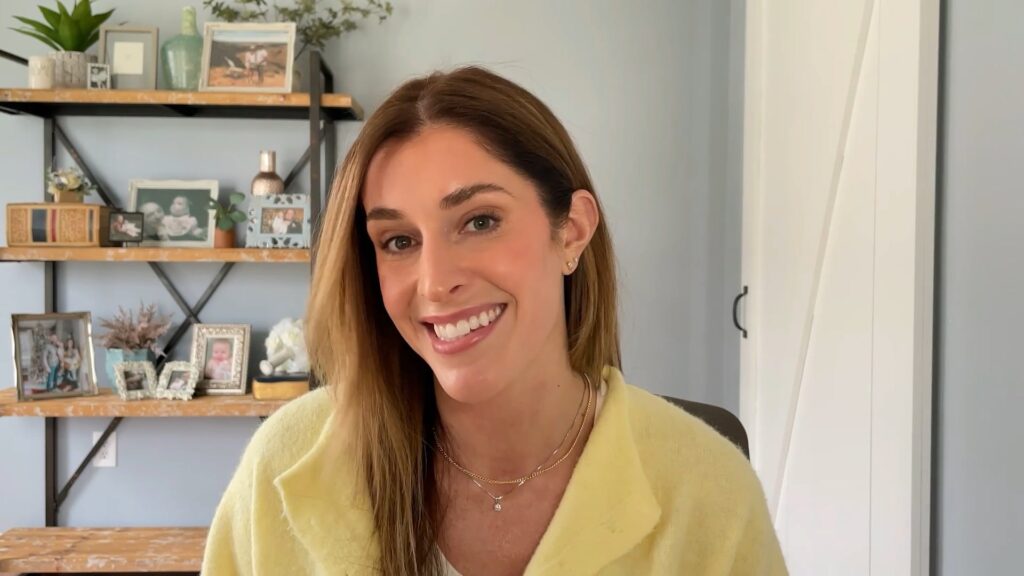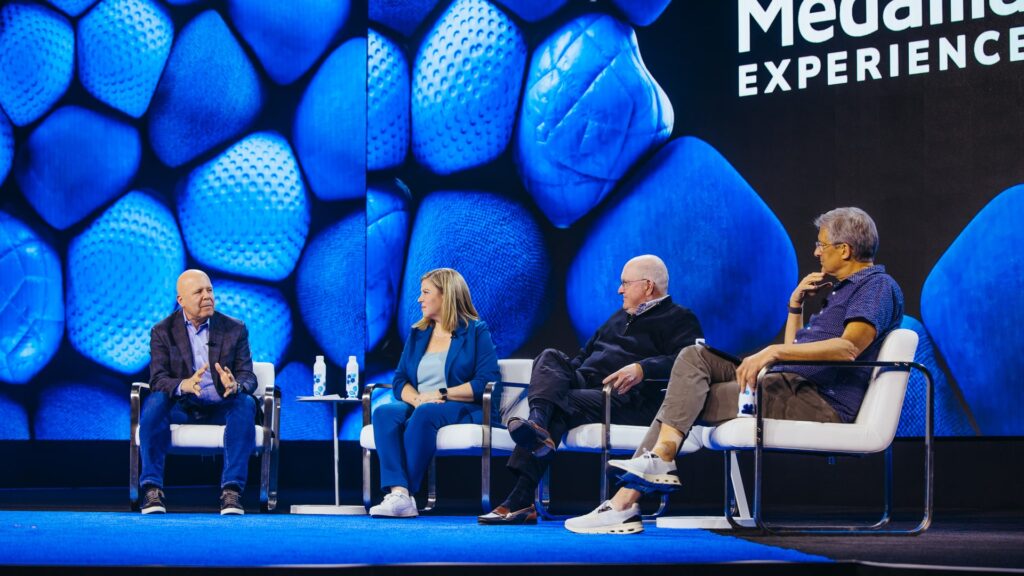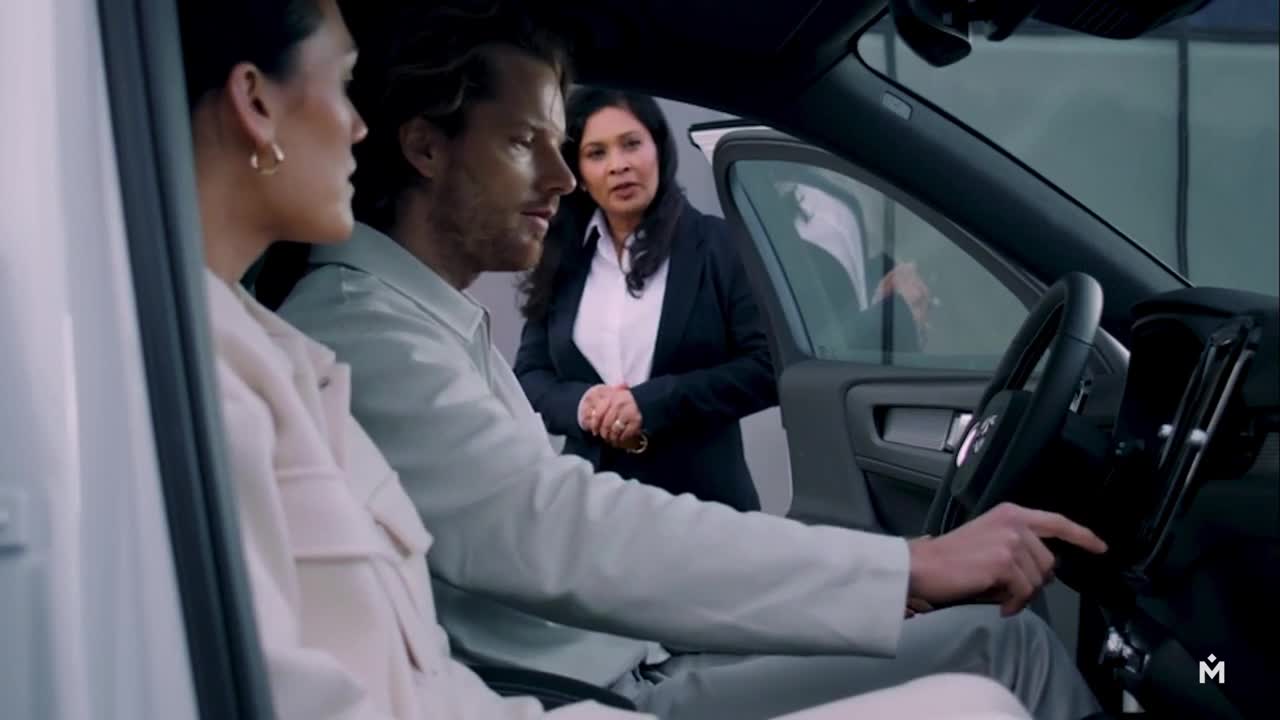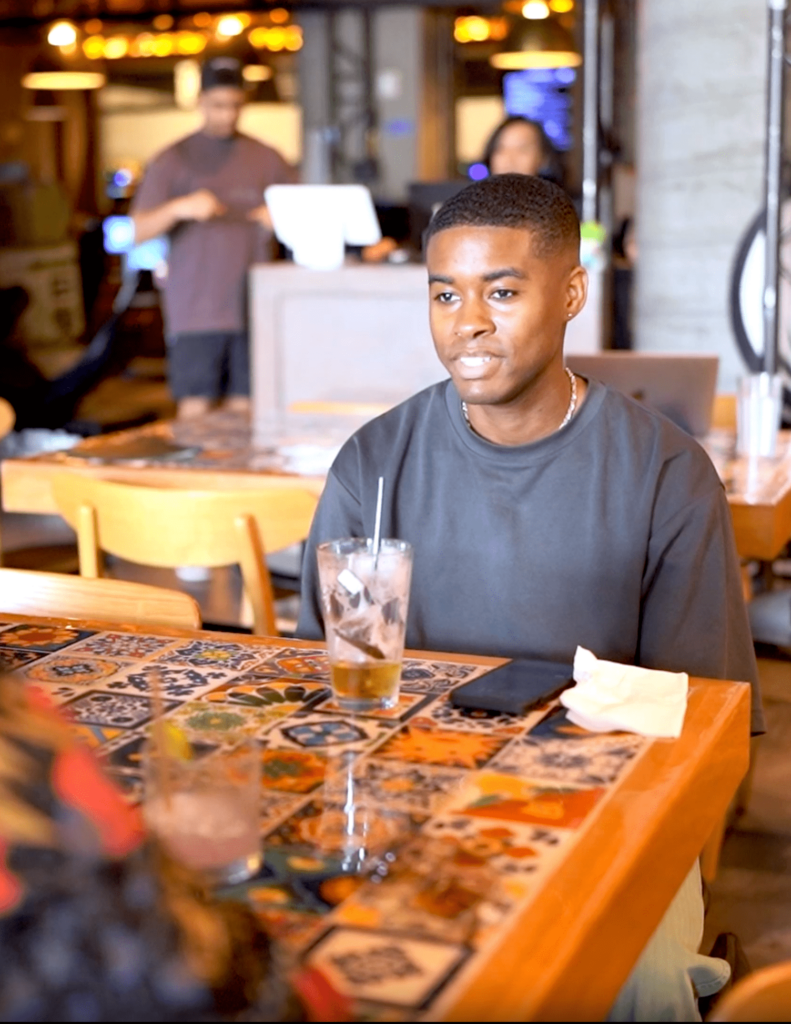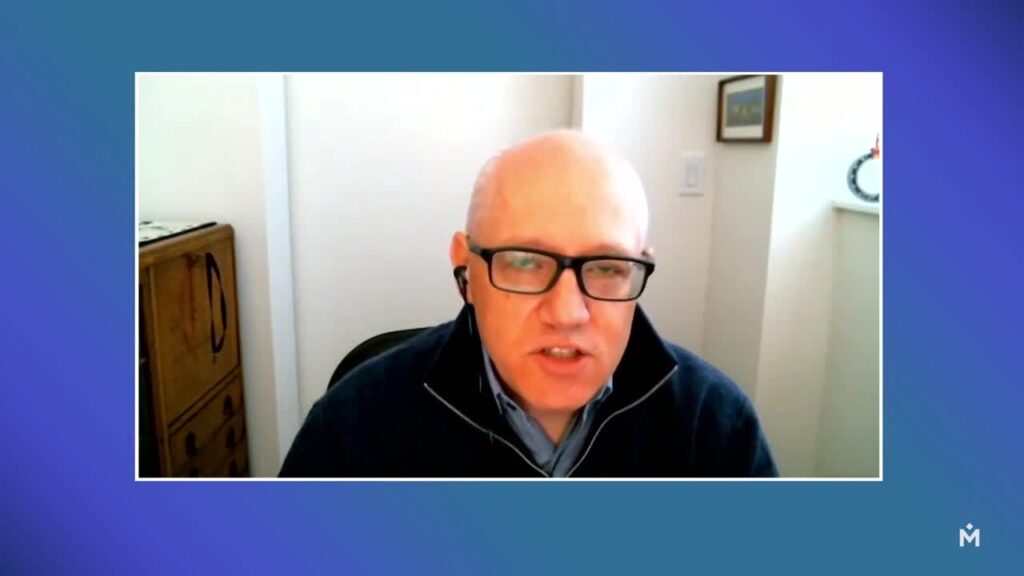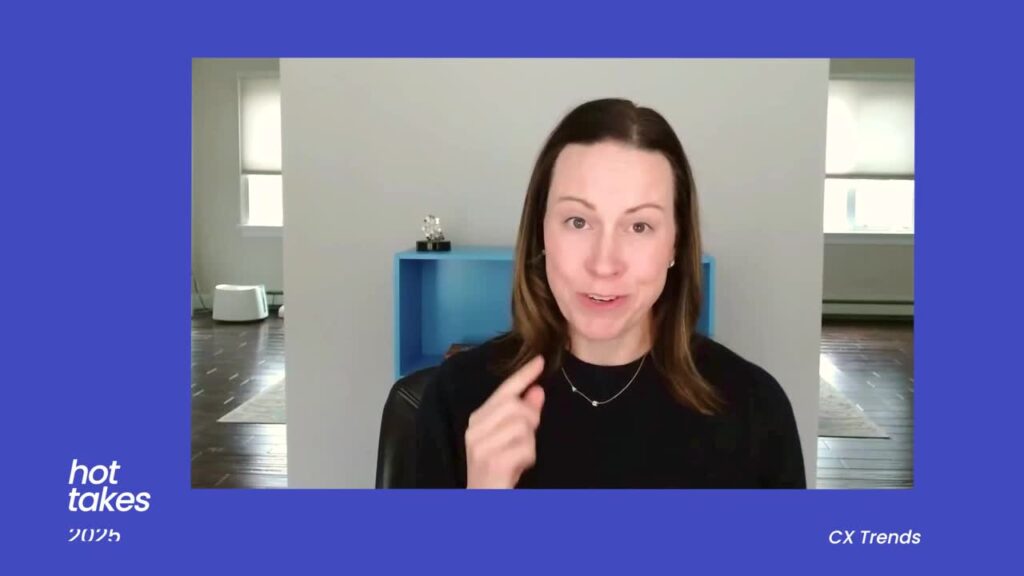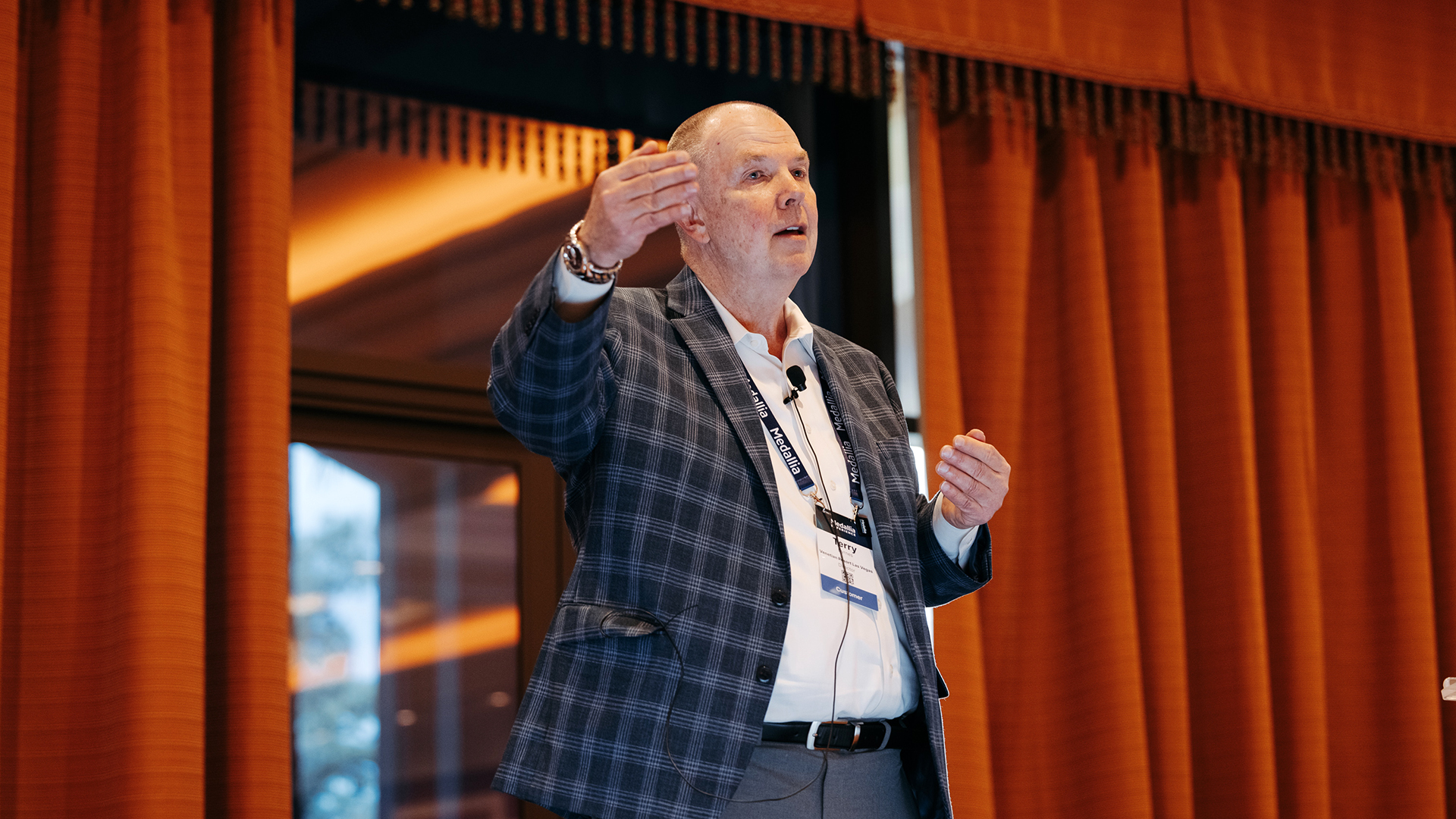Pamela Hessler: [00:00:00] I’m Pamela Hessler. This is my dazzling friend, Amy Anders, and we’re here to help you unlock and elevate your business impact by closing the loop. So here’s what you’re in for during our session today. First off, we are rolling the dice to understand the loops. We are going to take a spin and dive into the core of how these loops work because just like in Vegas, it’s all about knowing when to play the hand you are dealt Next, we’ll unlock the power of the inter loop. It’s all about high rollers here in Vegas, right guys? Consider the inter loop your VIP section. Then you’ll hear from our good friend Terry from the Venetian, right here in Las Vegas about some of his mic drop moments using smart response.
After that, you know we’re gonna elevate your outer loop. It’s doubling down. With your impact that you’re able to have. We’re going to show you how to take your game to that next level and increase your reach and influence. Finally, we’re gonna wrap up with [00:01:00] some TNA from you all. Come with your questions.
We’re ready for you. We wanna hear from you. That’s what’s gonna make this presentation just even better.
Amy Anders: I want you to think of the inner loop, like the quick decisions you make when you’re actually at the roulette table. It’s about responding directly to individual customers in real time. Your frontline team.
Think of like contact center supervisors, store managers, sales representatives, account specialists, whether it’s resolving an issue, celebrating some positive feedback, or making a small but impactful local change. It’s about taking swift action that keeps your customers coming back. Now, if the inner loop is about the swift action, the outer loop is about stepping back and looking at the patterns, right?
This is where you analyze feedback at scale. Identify systemic opportunities and drive strategic organization-wide improvements. Now, just a great Vegas player studies the game, the outer loop [00:02:00] gives you the opportunity to step back, look at the entire experience from digital fulfillment, contact center, brick and mortar, and make sure that every experience gets better each time that you spend.
Of course the real magic happens when these loops work together, right? When your inner loop insights are fueling outer loop action and your outer loop improvements are ensuring every future customer experience goes that much smoother. So when you master both, you’re not just taking bets on your customer or your employee experience, you’re actually stacking the deck in your favor.
Now when Pamela and I started working on this masterclass for you I started realizing how much she really knew about Interloop. And so I learned this week, just this week that the casino employee who operates the roulette table is actually called a crew. So Pamela is gonna be our inner loop Croupier, and she’s gonna tell us how do we play the game when it [00:03:00] comes to your inner loop?
Pamela Hessler: We are gonna begin at that micro level, the inner loop we’re, we aren’t in reinventing the wheel here. So friends, it is not all razzle dazzle. The core principles of the inner loop remain consistent. You have to align your CLF to your business goals. Set consistent standards, that’s the who, the what, the where, the when, the why, and remember that junk in.
Equals junk out. Maximizing your case management form is going to be a huge part of what allows you to build in operating rhythm. One of the things that personally I love most about closing the inner loop, besides talking to people, is that I call it a choose your own adventure. What you’ll notice that I didn’t say is I didn’t tell you what is exactly expected of you through each of these, and that’s because your business goals are all.
Different. So think [00:04:00] about it this way, in healthcare, I am a healthcare CXA by background. I have an entire career dedicated to the healthcare consumer experience. And in healthcare, we really care about clinical outcomes. But perhaps somebody who works in hotels they don’t actually care if you got your test results in a timely manner.
So again, it’s all about. What you have available to you, you might have a team of a thousand people prepared to close the loop every day in and day out. Or you might be a team of one person. So you have to get creative. Some of the things I appreciate most about our Medallia clients is their creativity.
It’s their commitment to building the most meaningful CLF processes for their internal teams, their customers, and their business outcomes that they support. Here’s an example. I have a client they’re in this room. I’ll just say that right now. I work with them very regularly. They truly do see the value in their inner loop outreach.
And spoiler alert, I can prove it later. I will prove it to you later. They recognize the [00:05:00] commitment it takes to do it well. I. This organization has an incredibly robust case management form. They have systems in place to support their team members and share their findings, and we also work together to build a hierarchy for responding to closed loop case management.
I. Items they have, you know what I call lovingly, they’re hot ticket items, they’re hot alerts. Those are the things that are gonna get a callback right away as quickly as possible. And then, maybe somebody has unclear information about something related to their care. They’re gonna get a rapid response with a link to where they can find more information.
There’s a lot of stops in between for them as well, but it just shows you the power of choosing your own adventure. The one thing that we do know, we know for sure is closing the loop on the micro level. It works and I can prove it. Here it is. So by measuring. Overall satisfaction. [00:06:00] Following that initial interaction with this client, that same group of people who also received service recovery, they then receive a post-service recovery survey.
Following that post-service recovery survey, we saw over 58% improvement in their oat rating. Keep in mind that. Some of these people, their issue actually wasn’t even resolved. They were able to have something shared with them or explained in a more clear way, but it led to that improvement on a five point scale through the lifetime of this measurement.
And it was a 1.4. Point shift in the world of healthcare payers. I don’t know how many of you all are familiar with that. There’s huge financial implications with this. There’s huge regulatory implications with this as well. So this 1.4 point shift on a five point scale is massive. You’re probably thinking, yeah, that’s cool, Pamela.
We know. We know we get it. It works. [00:07:00] Heck, that’s part of the reason we bought Medallia. That’s part of the reason we work with you guys. But how do we make it easier for our team members? And don’t worry friends. We hear you. That’s why we wanna talk more about smart response from Medallia. You heard about it on the main stage.
You’re excited about how AI can help streamline your efficiencies. So let us show you how Smart Response makes responding to customers. Easier while maintaining that personalized and tailored messaging using the feedback from your customers, your team members need only to select a smart response from the available options.
Our AI tool will then create a personalized response with just one click. This is the real deal. There’s no bluffing here. In fact, we even did bring an expert with us to tell you more. Meet Terry. Woo Terry.[00:08:00]
Terry is the Executive Director of guest Experience and Learning, learning and development at the Venetian Resort in Las Vegas. He’s an expert in the field of collecting, analyzing, packaging, and sharing voice of guest data in large hospitality organizations. Prior to joining the Venetian in 2024, Terry served 11 years as the enterprise Vice president of guest experience for Caesar’s Entertainment.
He is known for his ability to integrate guest experience programs with operations, marketing, and human resources strategies to accelerate success. Terry and his team were able to be part of our beta test for smart response. So thanks for being here. Terry.
Terry Byrnes: Thank you for inviting us. How’s the mic? Can you guys hear me okay?
Yeah. Alright. Thanks for inviting us. Thanks for attending this session. We were interested in anything that can help make our. Closed loop feedback process, both more efficient and effective really for two reasons. One, Venetian’s very large, [00:09:00] it’s the largest hotel in the United States, 7,100 suites. We collect a mountain of feedback, post-day surveys, in-state surveys, things through social media, so there’s a lot coming in.
Guests are very generous about telling us how we did or didn’t do. So there’s a lot of work to do. We have a center. Phil Wave over there. Phil runs our center. He’s the manager that does that kind of work. Four agents work pretty much continually five days a week on that. And there’s probably more we could do if truth be told, so our size lended itself to say if we could find things that made that work.
Again. More efficient and more effective, we’re interested. Second reason, about a year ago, I got a note via email from our CEO asking me, are we active in the AI space and hospitality, or how are we throughout the resort? He had gotten a communication from Venetian’s ownership group urging all the businesses that were part of the group to say, explore ai, explore robotics, that the ownership group is very interested in those things.
We had heard about the smart response at last year’s experience, right? And I said, [00:10:00] okay, we’re gonna look for our way to, to fit in and be at the front of the line for Venetian of successful guest facing applications of ai. So a chance to join the pilot came along in the late fall. We were very excited to do it.
Our experience with the pilot was great very easy to get engaged through it. The upskilling was not more than an hour or two. Yes, Phil. That probably just an hour or two to upscale the agents on how to use the tool. Okay. The ask from Venetian was that we provide feedback and the ask was very light.
Okay. They had just wanted one or two pieces of feedback, like per agent per day. So I don’t know how to say this. Nice. Phil, did we, would you say we exaggerated? Did we fib, did we misstate the feedback we had thought we could do more feedback than Madea was asking for, and it would be good for two reasons.
It would be good because the feedback over time, we’d be good at tuning the product toward hospitality, and then second tuning it toward Venetian. We’ll talk a little more about tuning as we go. [00:11:00] So we’re in the pilot for about five weeks. We have four agents working just the way that Pamela described it, right?
A question, a complaint an inquiry will come up. Okay. The agent has a smart response. Read it. Okay. Smart response generates a response to the guest. Nothing could go out to the guest without a human or an agent looking over it. And really it fell into three buckets to them. The agent would either look it over and say, yes, this is beautifully written.
I can just send it as is. That was a portion of the pilot for us. The most common result was an agent would look at it and say. This is well written. There’s two or three things we have to change to make it seem more branded, like Venetian or even sometimes shorten it. Okay. That the AI might have overwritten the response at times that was the most common was a modest, amount of editing and then it went out. Occasionally one would come through where the AI kind of took a swing and miss, but not very many. Okay. Where the agent would just go back to the way they have been doing the work the way that some of you probably do, or folks that work with you, do [00:12:00] the work where you’re gonna read a case or an inquiry or complaint.
Either write a response from scratch or use pieces of templates or things you’ve written before and cobble ’em together to make the response. I was very interested in two things. One was how much feedback we could provide and what kind of tuning could be done. So we ended up providing a ton of feedback.
Okay. Six or eight x of what Medallia asked, and in the end I think that was very helpful for them for tuning in, at least toward hospitality. I. Then there’s a second step to go to tune that more toward Venetian. So I imagine there were people in the pilot that were doing it the same kind of thing, right?
Ladies for healthcare, maybe for retail, maybe for financial services, right? So very important step. And then when the pilot ended, I was interested in the, I. The reaction of our agents, because those are folks that are good at it. They’ve been at that at least a year or two. Some of those folks, even more, they’ve got a lot of experience in that space that we actually had a theory, like the pilot ended and we said, okay, when we come back in on Monday, we’re gonna see if it really ended.
We thought maybe you guys would forget. Okay. They’re like, turn it off. But [00:13:00] who? Whoever at Medallia took the little slider and turned it from on. They did a good job. Monday morning, eight o’clock, we came in and it was off. The agents were disappointed. Okay. Like they were, they did not really want, or were not excited about going back to their prior method.
They would’ve rather continued with the AI smart response. They felt like they were getting a better variety. We had agents tell us they learned from what the AI was writing. Okay? So we’re anxious to get back in that. Post tuning period to say we’ll even get a better product back. Just overall the experience of the pilot was very good for us.
Yeah. And the agent feedback was probably the most telling piece. In the end. What I think we’ll get from this are two things. The quality of what we’re sending out has gone up. Okay. The variety of the way it’s written. The completeness the grace that it’s written with, I think is better than probably our agents we’re writing and moving away from the either templated or effective phrases or things that you piece together, I.
Is a good step. We’re doing a better job, [00:14:00] so are we doing it better? The answer was yes. Is it more efficient also? Yes. Okay. The volume or the estimate that we have is that when it comes back on, we would be able to do the work with three agents that we were doing with four. So we have a couple options.
We could either probably pick up an efficiency there or we could repurpose the time of what would have been the fourth agent to engage with more guests or things on different guests We weren’t touching yet. We have a lot of guests that. Are telling us they had a amazing stay at Venetian. How much they loved their trip and how memorable it was.
We don’t do a lot of re-engaging with them just ’cause there’s the volume. Those come in by the thousands every month. That’s a chance to say we could also repurpose that time or that work by the agent to say let’s engage with those guests and dialogue with them, which would be great. Ladies, should you questions for me?
I think so. Or do we wanna see if these folks have questions? We’re
Amy Anders: gonna have you come and stay here.
Terry Byrnes: Okay.
Amy Anders: And get questions at the end. And I can see like people are. Jumping already. So they’re definitely itchy. Let’s go from interloop to outer loop. Do it, and then we’ll open up to questions for everybody.
Does that work for you? Do it. Okay, awesome. So simplifying [00:15:00] interloop, and then the next thing we wanna talk about is how you then improve your outer loop experience as well. And so the outer loop experience isn’t about these single bets, right? It’s about strategy. Stacking the odds in your favor and making sure.
Every move that you make contributes to your big win, which is your overall systemic experience improvements. So let’s break down some of the outer loop best practices that we have for you. First thing, first, establish governance. I can’t say this enough. I’ve had a number of meet the experts this week and a number of them.
Those conversations have come back to what’s the governance that you have in place. And so when we talk about governance, the first thing I would say is to engage an executive sponsor. The word that’s important there is engage. So a lot of times when you launch a new program, particularly you have an executive sponsor, right?
But do you have a plan in place for keeping them engaged throughout the lifetime of this program at your organization? Are you meeting with them [00:16:00] regularly? Are you arming them with the right kind of updates and be leveraging them when you need to? The most important part of governance upfront is establishing.
Then engaging that executive sponsor. Second of all, it’s about having the stakeholders aligned, all of the right players. And then lastly, you want a game plan, right? You wanna know what’s the cadence for reviewing insights? How often are we going to meet? And then probably most important how do we prioritize what gets tackled first?
The second thing is to begin and end with the customer voice. Now I feel silly putting this on a slide, and I wanna say, I know it seems super obvious to everyone sitting in this room right now, but if Pamela and I had a poker chip for every team we’ve worked with on outer loop. That had gotten so far removed from the initial customer voice that started their improvement initiative.
We’d be in the VIP lounge this week. It happened so often. It happened to me when I was a practitioner because you know how it works. You identify something from [00:17:00] voice of customer and insight, and then you start working to improvement and you’re working with operations, and you’re working with marketing, and then you’re working with it, and over time you get further and further away from that initial voice.
And build things into your process for the outer loop that ensure you come back to that same customer voice over and over again. Two weeks ago, I was talking to a client that I work with very regularly. I. And they had a group of stakeholders that had made a change to their website and didn’t understand why they weren’t seeing improvements in the feedback.
And when I said let’s talk about what the improvement was, and then we held it up against the initial pain point that was identified, I. This exact scenario had happened where they had gotten so far removed from the initial pain point that it became about what operations is capable of, what it can do right now within this framework.
And so build those things in place to make sure that you come back to the customer voice over and over again. And then make sure too that you’re planning ahead to [00:18:00] collect feedback from your customers and employees post change. So that you’re ending with that feedback as well, that you’ve got some idea in place of how you’re gonna go back and measure this impact later on.
The third piece of advice that we’ll give you is to build momentum with quick wins. Now, if you are new to outer loop strategy, it is very common practice to wanna go after your biggest pain for sometimes that might be the right move. But just like here in Vegas where every good run starts with one win that then spins into another and spins into another.
My advice to you will be to pick your first quick wins based on things that you have internal support for clear root cause resources, and a relatively short timeline because if you can get a few quick wins. Under your belt, you’ll start building momentum. It’s like having a CX or an ex snowball that builds, and pretty soon you’ll have the entire house on board.
[00:19:00] Lastly, I would say measure and share the measure and share the impact. So a lot of times after that first big win, you’re jazzed and you’re like, okay, let’s take on the next one. And so your team pivots immediately to the next pain point that you’re gonna go after, but you wouldn’t hit a jackpot.
While you’re in Vegas and not tell anyone, right? Please tell me, you tell me at least. The same is true with CX and ex wins, right? Don’t keep it to yourself. Have some time make a plan to share those wins both internally. That will keep your stakeholders engaged and then externally.
Which will help build trust with your customers and employees. I don’t think there’s anything more powerful than being able to say to a group of customers or a group of employees, we listened and this change is thanks to you. So make sure you’re building time into your outer loop strategy to share that.
Now, [00:20:00] in addition to these best practices, Pamela and I wanted to share. Fix the bar. Favorite Medallia tools to use when you’re working on outer loop. And so the first one, Interloop reporting.
Pamela Hessler: Ooh, I love interloop reporting. All right, so the first one we wanna talk about, guys, remember I said junk in, junk out.
This is your out. So we want this to be beautiful. It’s one of the things we see used most in Interloop reporting it. It begins with just maximizing that case management form. When you’re standing up your inter loop program and designing that case management form, keep an eye out for the types of information that will best support.
Your outer loop.
Amy Anders: The next one I wanna talk about is text analytics, and this is where root cause analysis really takes off. My favorite subtab for outer loop is your topic. Deep dive. Look at your trends over time. Look at your co-occurring topics, that’s important and your emerging themes, and then make sure you have [00:21:00] modules set up specifically for your attention flags and effort scores, those will play big in outer loop.
Pamela Hessler: Ooh. Suggested actions. You guys are in for it here. All right, so the area of text analytics that you must absolutely leverage in outer loop is customer suggested actions. If you don’t have this set up in your ta, you gotta talk to your teams. Got it set up. You want this, you know how so often your customers and your employees, they’re like spoon feeding you suggestions in their open-ended comments.
Action intelligence parses those comments to discover the suggested actions. And then they score them. They score those suggestions based on actionability. What can you do about it? This feature helps you understand issues and then prioritize business decisions that have the highest impact on your customer or employee experience.
Amy Anders: Beyond text analytics, there are some great modules like. Strengths and [00:22:00] opportunities. This is that grid, that quadrant grid that automates statistical analysis and helps you prioritize which drivers have the greatest impact on your key metric, whether that’s NPS or overall satisfaction, for example, and you end up with four quadrants.
So your important strengths, your important weaknesses, your unimportant strengths, and your unimportant weaknesses. It’s just a great tool for prioritization, which as I mentioned earlier, is pretty important when it comes to your outer loop.
Pamela Hessler: I got so lucky ’cause when I got to talk about these things, I get all the action ones.
And when I say the word action, it makes me wanna do that. So one of our most unsung heroes of the outer loop is our action planning tool. It used to be called Action Impact. This is a tool on your platform that helps you. Operationalize insights, organize and manage your change initiatives, both tactical and strategic.
It allows you to track that progress and then calculate the impact of that.
Amy Anders: [00:23:00] And I’ve saved my favorite Medallia tool for last, and that’s Medallia ideas like a show of hands in here of who uses Medallia ideas today it used to be called chronicity.
Do we just have one hand? I’ve got one. Man, I wish I had a prize. You guys. This tool is such a game changer. It’s basically crowdsourcing. Okay? And you can crowdsource either your employees or your customers. I. Best case scenario, both to help co-create your solutions. I’m able to facilitate competitions and hackathons, and it truly is my favorite Medallia solution.
They should probably move me onto that team ’cause I’m just so passionate about it. I worked with a retailer who would pose a challenge to their employees once a quarter, and the challenge was selected by their outer loop group. And it was based on a current pain point. And so an example would be how do [00:24:00] we improve the speed of curbside pickup?
The employees then can all submit ideas. You have a period of time where employees are submitting ideas and then the employees get to vote up or down. Their peers ideas. So you’re voting for things, you’re commenting, you’re asking questions. It’s a very interactive kind of community. And then we vote the solutions up.
And the top three at this particular organization, the top three every quarter, we’re then adopted by an executive sponsor and implemented the best ideas you have for your pain point. Solutions are gonna come from your front line. That’s why me ideas is my favorite. It just gives you a direct, sometimes the things that, problems that your outer loop team has been struggling with forever, you pop it out to the front line and the solution is right there and sometimes really easy to implement.
And it’s pretty cool to be on both sides of that and see that change happen. And see your NPS go up or your overall satisfaction go up and know that you as a frontline [00:25:00] associate in store 1, 2, 3. And Kansas City, Missouri helped make that happen for the entire company. So these are our top six, but based on your business and your individual CLF goals, there are lots of other tools we could talk to you about.
Be sure to talk to your team about it or Pam and I will give you our email addresses at the end of this presentation. You can reach out to us and schedule time. We’d love to talk about that as well. I wanna say, I didn’t tell Amy I was gonna say this, but as I was listening to Amy talking, it really stood out to me that as what you were just talking about, Medallia ideas.
Pamela Hessler: It goes hand in glove with what we heard on the main stage yesterday. It was, it’s that gamification that we heard Sid talk about. That’s right. It’s that coming together and outlying every single touch point in a restaurant and how do we impact those individual. Everything that you just shared was such an aha for me because it’s we, we’ve heard that consistently now. And not only have we heard it, Amy’s presenting you with a tool that works. It helps you do exactly what you’ve heard about on the main stage. [00:26:00] Sorry. Yeah. I’m, I
Amy Anders: am so jazzed right now. Okay. So that recommend a game plan. No Clark County, no bluffing required. You just start by unlocking Ella strategy to your business box.
Build the operating rhythm, establish your outer, the governance, and then above all, it’s always come back to customer voice over and over again. So we’d like to open it up to some questions. At this point, Terry and his team have graciously agreed to answer questions about smart response or if there’s anything else, look, we’ve already got hands shooting up.
We’ve got mic runners on either side of the room, the mic to you, and would love to take your questions now.
Q+A: I have a question for Terry. I’m John. Where are we here? Oh, hi John. There he is with the MGM resorts. When you did your test how did you train the AI tool for compensation in our world?
Terry Byrnes: Yeah. So we didn’t make it to make compensation decisions. It was making the place for the compensation decisions. So I think that’s gonna [00:27:00] be. I think that’s gonna be probably al almost always made by an agent or a person probably. Okay. You could probably find a few standard things to say if this happened, you would waive a resort fee.
Or if that happened, you might say it’s $25 off a bill, but it would make a place where the, there was gonna be compensation. You probably have to finish that with an agent.
Q+A: Got it. And then if you were to,
Terry Byrnes: is that mostly correct Phil? Okay, thanks.
Q+A: And if you were to continue, or if you were to get the application for your property, you said that instead of having four specialists doing the re the responses, you would only need three.
What would you do with the others or would that be transferred to another department?
Terry Byrnes: Yeah, I think that’s the choice that the business could make. So it’s absolutely a faster way to do the work. Okay. Ca cases, case after case is gonna get done quicker. Okay. By having. Smart response, do it and then do an editing.
And a lot of ’em are gonna come out. The better you tune it, the more likely you’re gonna get one that’s doesn’t need any editing and you would just send, that’s a pretty [00:28:00] quick completion of a case. So you’re definitely gonna pick up an efficiency. I think the choice for us is to say, would we take the fourth agent?
Okay. And do different, a different kind of work or more work in a different space, or just do it with three agents and take the efficiency that tho those are gonna be the kind of choices that lie ahead of us, I think.
Q+A: Oh, thank
Q+A (2): you.
Terry Byrnes: Sure. Good question, sir.
Q+A (2): Hello, my name’s Corey. I’m with Ring Manufacturing and so the first survey is completed and closed loop.
Team member follows up the second survey that gets sent out. How is that set up? Is that set up as an ad hoc survey or is it just set up as just another, just transactional survey? As what? It’s
Pamela Hessler: an additional transactional survey. The case management form closing as resolved. That is the trigger.
Q+A (2): Thank you so much.
Pamela Hessler: Yeah.
Q+A (3): And good to see you.
Pamela Hessler: Hi,
Q+A (3): I’m Julie from Remanufacturing as well, and I just have a additional question to that. For the AI to start learning from the resolution it, do you have a text [00:29:00] field after that resolution where when you’re building that resolution strategy for that particular detractor?
Then it that it would trigger obviously the next transactional survey. But do you have a case management form? How do you capture those constant resolutions so that AI can map the right resolution strategy?
Pamela Hessler: So in the example of that post-service re, and good to see you again too, in that post-service recovery survey example that I gave, they’re actually not using AI quite yet.
The goal is that yes, it will all work hand in glove going forward. I’m sorry I don’t have an exact answer to your question right now because it’s growing and it’s in motion.
Q+A (4): Hey, good afternoon. I’m Jesse. This is the question table here, but same, okay. Same table. Yeah. I just, I noticed on the slide you talked about sharing some of the wins internally, but I was just more curious about externally some of the creative ways, maybe some Medallia customers have shared that.
I think about, you have a promoter, someone who’s had a great experience, but they’re giving [00:30:00] you some really valuable feedback to improve a process. They do a survey and it goes into the void, and they say, I never really think about what happens to my feedback, but if you have some examples of some ways that some of the clients have shared in maybe some creative ways.
Amy Anders: Yeah, I can start. So a lot of times it’s on their website, right? So where they’re sharing feedback directly on the website for here are some changes that we’ve made. Sometimes it actually is a closed loop with someone who’s provided a suggested action like that as well.
Terry Byrnes: I’ve got one nearby example who went to the party last night and saw the sphere.
Pretty cool, right? Who’s been to the sphere? Okay. Amazing. I would certainly recommend it. It’s a incredible experience. But like one of the things that we did, we got, when you get something like the sphere built in your backyard, right? A lot of people think it’s part of Venetian. Okay. But it’s Madison Square Garden.
It’s totally separate from Venetian. It’s just so adjacent to us. It’s seems like it’s Venetia. What a gift, right? So you’re gonna pick up business that way. We work with promoters that send packages through Venetia, and we get foot [00:31:00] traffic through Venetian. So the idea was to try to pick up feedback as soon as we could to maximize what we’re getting out of that gift that MSG built right behind us, which was fantastic.
So the early kind of feedback that we kept picking up was. All about directions. How do I get there? When do I go? All the uncertainties, right? So we were able to do it a couple ways. Was first work in the space of just the logistics of getting there, right? We built a pedestrian bridge. It is sometimes open and sometimes not, depending on who’s in our convention area.
Okay. Sometimes the path is a street. So communicating that well to guests was one part. Signing, it was a second part, a third part was just if you work at Venetian. And you’re well dressed and you have a name tag on. You can barely make it ac across the floor without someone stopping you and saying, Hey, how do I get to this fear?
It’s a super common question. So a lot of information and tools pushed down to team members to say, the path is the bridge today. The path is the street today. What’s it gonna be to tomorrow? Just so we’re really well equipped to answer those questions made a big difference. [00:32:00] Okay. We also isolated groups we had in house and how we treated the, the arrival and the communication piece in the beginning, that was one of the big wins of 25. From the feedback process for us is to say, HH, how do we make it better for guests who want to enjoy the sphere? And then how do we w We’ll get some nice returns on that if we’re good at it, because now they’ve got their calendar with more events.
More events. That’s probably a lot of customers that were gifted back to us. If we do a good job the first time to say, stay at Venetian, it’s so easy to use the sphere. How many of you’re like envious of Terry’s job right now? Doesn’t that sound like a really fun problem to solve? Yeah. We eat in the fancy restaurants every day for lunch.
We, we go in there, we gamble here at Tim’s a big cardholder at Win. I made all that up. Okay. It’s more like work actually. So yeah, we’re underground over Venetian, so
Amy Anders: we had a question oh
Q+A (5): one over there maybe. Hi my name is Jasper from Samsung and just wanted to understand what the experience was with tuning with the smart responses and.
What is it to try and feedback like your brand voice into those responses that [00:33:00] are going back to consumers And specifically is it like reinforcement learning with human feedback or what sort of tuning mechanisms are required of people that are using it to get that feedback to, to adjust things like brand voice and things like that, to the responses to consumer.
Terry Byrnes: All right. We’re gonna, we’re gonna bring Phil in from the bullpen ’cause he’s doing that work right now.
Q+A (6): Yeah, that’s a great question. So how it’s really similar to if you have access to the responses currently. Where you can edit the templates on platform in the admin suite. It’ll cycle through a list of, sample feedback from your platform, so responses that have already gone out, and you can decide if you like ’em or not.
There’s like a combination of rules in a list. You would basically teach the AI and say, Hey, a great example we used as, we don’t refer to our room product as rooms, we refer to them as suites. So I, but when room is mentioned, you suite, you may have to, your mileage may vary a little bit when you’re tuning just to get it to say exactly what you need.
Another great example that I started doing towards the end of the tuning process was implementing existing templates into the responses. We know pests happen every now and then [00:34:00] in certain areas, so that’s a, that’s one of our high ticket items and we have a set PR approved template for that.
We’d plug that in there when any sort of pest is mentioned. That’s when that would be mentioned. In addition, just the tuning process. It’s very straightforward. I don’t think there’s any limit to the rules and you can actually set up different instances of smart response. So say you have branches in different locations around the world say, I’ll use Hawaii as an example.
You can have it open with Aloha if you wanted to, things like that just to get your brand in there. And. Tuned to what you’d expect from Samsung. Yeah.
Terry Byrnes: Tho those are, I’m sorry. Those are really the opportunities in brand like it, the AI will write your player card. We’ll write in Venetian Rewards.
That’s the name of our player card program. So there, there’s, you just keep finding opportunities like that to keep tuning it toward the way a Venetian would write it.
Pamela Hessler: One question left if you wanna be our grand finale here.
Q+A (7): Sure. Yeah. So I think this is probably for Phil. I’ve been excited about smart responses since last year at the conference that hopefully we can get it at my company soon.
In the meantime, though, AI tools like Chat, GBT, perplexity, I’ve [00:35:00] tried ’em all. They’re really doing some great things. Yeah. You can paste in templates and say, give me three example responses. I’m just curious, since I haven’t seen smart responses and maybe you’ve tried the other AI tools out there.
How does it compare? Do you like it ’cause it’s a Medallia’s dashboard? What’s that competitive advantage of smart responses versus. Just gonna chat GPT and paste it in something and say, Hey, give me this sort of response,
Q+A (6): absolutely. So I’ll say my Medallia folks, I’m sure they will love this answer.
The security and the data security of it. You’re not pasting it on into the void and you have customer guest information. I know we’ve had some credit unions, some health folks here. We don’t wanna put any of that information into chat, GPT ever. It’s very tuned for hospitality. And there’s also that.
Of course the tuning aspect of it’s very easy. It’s straightforward. It doesn’t require much of you. It’s all accessed by the admin suite and the users. Marketing being a big component of that, you don’t need to, I. You can’t really train, chat GPT, you can. But if a different user picks it up, if they don’t have those exact prompts, it’s gonna crumble.
Versus if you have it built in the system, [00:36:00] it’s established for certain users, certain roles, they can get access to it right away. And then it’s always gonna be a consistent response. And to Terry’s point, there are a couple where there, there will be some intervention needed. ’cause it’s ai, it’s not perfect, but it did a really great job.
From the time we had with it
Terry Byrnes: we actually did. What you suggested to some degree, we had the interns in the summer. One of the interns days was we gave her 50 cases and said, use a commercially available AI just to collect that. Because we knew there’d be a day down the road where we could compare what commercially available did to Medallia tool and in the much more polished and just so smooth the commercially available did it reasonably well.
Okay. Without the security features. Okay. The. Smart Response Suite was just more, so much more polished and complete and effective. So we actually did a little bit testing on that for 50 cases anyway.
Pamela Hessler: Guys, thank you so much for being here with us today. We hope you got some good nuggets out of this session.
[00:37:00]
